Archive for the ‘Threats from Farming’ Category
Saturday, October 12th, 2013
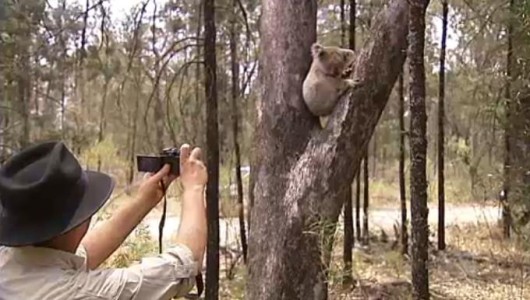 Ecological consultant David Paul with a koala found in the Leard State Forest
[Source: Photo by Tania Marshall, Front Line Action on Coal,
^http://frontlineaction.wordpress.com/] Ecological consultant David Paul with a koala found in the Leard State Forest
[Source: Photo by Tania Marshall, Front Line Action on Coal,
^http://frontlineaction.wordpress.com/]
.
Environmentalists are urging the New South Wales and Australian governments to save the Leard State Forest. They are concerned about the catastrophic impact of major mining expansion on an isolated and vulnerable koala colony in its natural habitat within the Leard State Forest.
The Leard State Forest is situated near Maules Creek within the Namoi River catchment about 10km north-east of the township of Boggabri on the North West Slopes of New South Wales, about 500km nor’-nor’-west of Sydney.
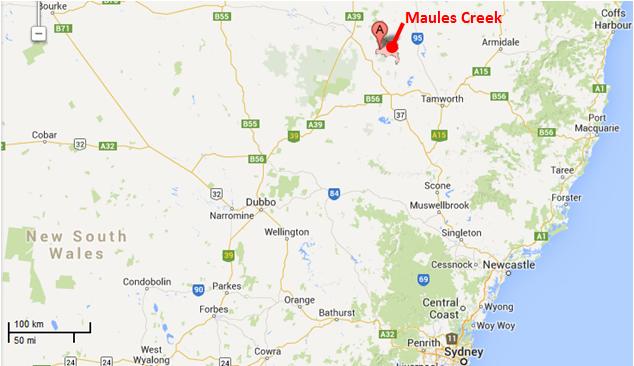 Maules Creek Mine location map
[Source: Google Maps] Maules Creek Mine location map
[Source: Google Maps]
.
The nearby town of Boggabri lies on the Namoi River, a major perennial river and floodplain within the Murray-Darling Basin. The landscape is naturally subjected to infrequent seasonal rains and widespread flooding.
.
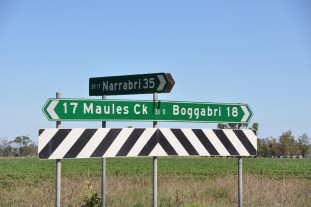 . .
The native vegetation has been naturally dominated by Box-Gum Woodland ecological communities featuring the endemic species of White Box, Pilliga Box and Bimble Box. These provide vital habitat for numerous woodland bird and microbat species and a small community of Koalas.
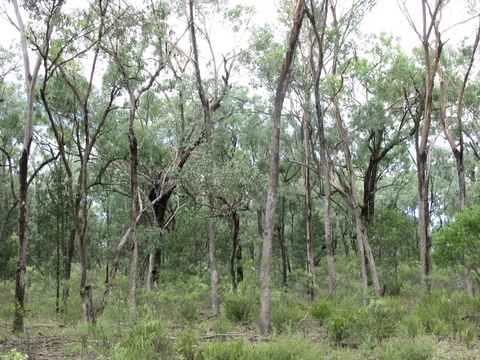 The Leard State Forest
An isolated remnant box woodland The Leard State Forest
An isolated remnant box woodland
.
The region was originally the Aboriginal land of the Kamilaroi people and their ‘place of many creeks‘. However, two hundred and twenty five years of colonial pastoral settlement and associated widespread deforestation has seen the region denuded of most native vegetation historically for sheep and wheat; and more recently for irrigated cropping, particularly water thirsty cotton.
.
 Box Woodland decimated for industrial scale cotton
The farming model is entirely artificially dependent river-diverted irrigation for export produce.
[Source: Promotional tourism advertisement by the NSW Government,
^http://www.visitnsw.com/destinations/country-nsw/moree-and-narrabri-area/gallery] Box Woodland decimated for industrial scale cotton
The farming model is entirely artificially dependent river-diverted irrigation for export produce.
[Source: Promotional tourism advertisement by the NSW Government,
^http://www.visitnsw.com/destinations/country-nsw/moree-and-narrabri-area/gallery]
.
Native habitat has been sadly reduced to a few isolated islands of land set aside as ‘State Forests’. These include the Pilliga Forest, the largest remnant temperate forest in Eastern Australia, as well as Jacks Creek, Plagyan, Rusden and Leard State Forests, as well as the rugged Mount Kaputar National Park.
Leard State Forest includes the most extensive and intact stands of the nationally listed and critically endangered Box-Gum Woodland remaining on the Australian continent and is home to nearly 400 native species of plants and animals, and includes habitat for 34 threatened species and several endangered ecological communities.
.
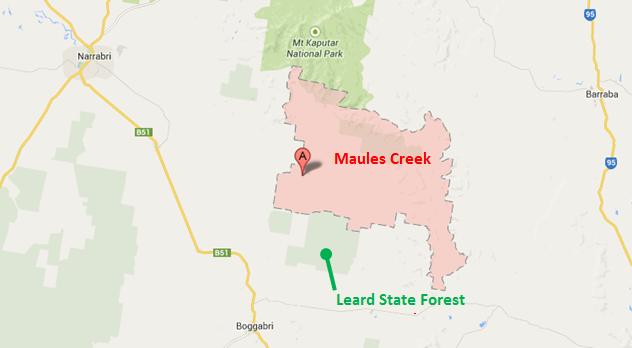 Leard State Forest location map
[Source: Google Maps] Leard State Forest location map
[Source: Google Maps]
.
It’s believed as few as 20 koalas are left in the Leard State Forest, which is considered its primary habitat. The primary food source for the koalas is thought to be the Pilliga Box, Red Gums and Yellow Boxes. This Koala population is very fragile and could be significantly impacted on by the future mining plans.
Ecological consultant David Paul:
“If they are part of the same population as the Pilliga koala, then Leard is a very important area for allowing the dispersal of these animals in an east west direction. Leard Forest is a stepping stone between habitat in the Pilliga and to the east and south. While there are not many koalas there it’s a very important area to allow the dispersal of koalas in the region.”
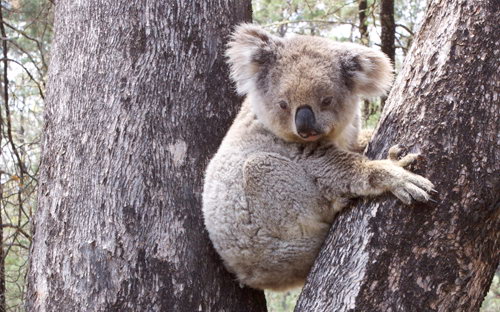 Koala in Leard State Forest
[Source: Photo by Tania Marshall, Front Line Action on Coal,
^http://frontlineaction.wordpress.com/] Koala in Leard State Forest
[Source: Photo by Tania Marshall, Front Line Action on Coal,
^http://frontlineaction.wordpress.com/]
.
.
Whitehaven Coal mining expansion into the Leard State Forest
.
<< Approval has been given for one of the biggest open-cut coal mines in the world in the state’s north-east. Whitehaven’s Maules Creek Project, near the Leard State Forest, will extract 12 million tonnes of raw coal a year.
If given the final go ahead from the Federal Government, Whitehaven expects production to start mid-2013, with operations predicted to last around 30 years.
Managing director Tony Haggarty:
“The mine will be good for the region economically and good for the state. It’s one of the best coal developments in the world. It’s a large reserve, it’s very good quality. It’s the sort of coal that is in demand in the market place, and because the reserve is large and because it has a long life, there will be a significant area of land involved.”
.
But Federal Environment Minister Tony Burke says the project will now face Commonwealth scrutiny. It will examine the mine’s potential impacts on the nearby critically endangered white box woodland.
An Environment Department spokeswoman says once the assessment is complete, it will go before Mr Burke who will consider the advice of the department, the Independent Expert Scientific Committee on possible water impacts, and any public comments.
Environmentalist Phil Spark:
“The planning commission’s approval is a blow to the endangered trees and animals that live in the forest. My biggest concern is that the environment has been totally undervalued. You just can’t destroy a forest and think it’s going to be compensated. It’s an endangered ecological community and it just can’t be replaced.”
The Maules Creek Project is about 18 kilometres north of Boggabri in the Gunnedah Basin. >>
.
[Source: ‘Go ahead for one of world’s largest coal mines’, 20121025, ^http://www.radioaustralia.net.au/international/2012-10-25/go-ahead-for-one-of-worlds-largest-coal-mines/1035960]
.
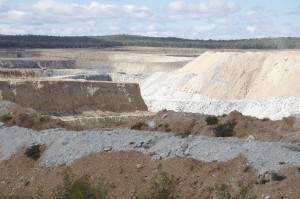 Nearby Boggabri Open Cut Coal Mine, owned by Whitehaven Coal
Saw thousands of hectares of native Box Woodland bulldozed in 2006. Nearby Boggabri Open Cut Coal Mine, owned by Whitehaven Coal
Saw thousands of hectares of native Box Woodland bulldozed in 2006.
.
Environmentalists are up in arms over a proposal to mine two thousand hectares of state forest, among it, this remnant koala habitat.
The Maules Creek Mine adjoining the Leard State Forest has received NSW government approval to expand into the forest, which will see most of the forest and its flora and fauna all but completed bulldozed into history.
Whitehaven Coal wants a new open-cut coalmine that will extract up to 13 million tonnes of coal a year to earn it $767 million. It also wants a second nearby Idemitsu Boggabri open cut mine to extract 7 million tonnes a year.
Greens Senate Candidate Cate Faehrmann:
“These approvals will literally change the face of the township of Gloucester as well as the small community of Maules Creek near Narrabri in the state’s north-west. The Maules Creek and Boggabri proposals were referred to the Federal environment minister Tony Burke because they are going to wipe out critically endangered forest which is home to many threatened species. How can any Environment Minister in their right mind approve this?
The Maules Creek coal mine alone will emit the same amount of carbon emissions each year as New Zealand during its proposed 30 year life span. This is disgraceful and it’s why communities everywhere are starting to call on the government to transition away from coal and towards a secure renewable energy future.
I have visited the site of the proposed Maules Creek coal mine recently to see the forest firsthand and saw a koala up close in the forest. Tony Burke has just approved a coal mine which will wipe out a small and vulnerable koala population
“The farmers who have been fighting coal mine proposals in Leard State Forest for years will continue to fight for the protection of their forest.”
.
Up until recently, Whitehaven Coal has been owned by multimillionnaire Nathan Tinkler. Its chief executive is Paul Flynn and one of its directors is former National Party leader Mark Vaile. In June 2013, after securing his Maule’s Creek Mine expansion approval, Tinkler sold off most of his shareholdings in Whitehaven Coal to an American profiteering investment capital firm, Farallon Funds.
Whitehaven Coal has been challenged in the courts against its proposal to mine the Leard State Forest by the Northern Inland Council for the Environment. This community based not-for-profit group has said the Federal government was wrong to approve the project. They are challenging the approval process of both the Maules Creek and nearby Idemitsu Boggabri coalmines “because of the dodgy process by which they were approved and the devastating impacts they will have”.
Whitehaven Coal chief executive Paul Flynn has insisted the court challenge to the approval of the Maules Creek mine in NSW will not stop the project and is merely a “frustrating niggle“.
Last financial year Whitehaven made a loss of $82 million.
.
[Sources: ‘Whitehaven carries on with project despite legal challenge’, 20130720, by Michael Hobbs and AAP, ^http://www.afr.com/p/national/whitehaven_carries_on_with_project_z0EwnCKbgJE1Xnrp3wJVoO; ‘Whitehaven Coal falls to $82m loss’, 20130827, by Greg Roberts, Sydney Morning Herald, ^http://news.smh.com.au/breaking-news-business/whitehaven-coal-falls-to-82m-loss-20130827-2sndo.html; ‘Tinkler sells out of Whitehaven’, 20130619, by Glenda Kwek, Sydney Morning Herald, ^http://www.smh.com.au/business/mining-and-resources/tinkler-sells-out-of-whitehaven-20130619-2ohnj.html; ‘Mining proposal puts koala habitat under threat’, 20121109, by Liv Casben, ABC media, ^http://www.abc.net.au/news/2012-11-09/mining-proposal-puts-koala-habitat-under-threat/4363234; ‘Concern for Koala’s in the Leard State Forest’, 20121112, by Kelly Fuller, ABC media, ^http://www.abc.net.au/local/audio/2012/11/12/3630754.htm; ‘Labor turns back on NSW environment’, 20130211, by Cate Faerhmann, ^http://catefaehrmann.org/tag/mining/]
.
Listen to ABC Radio interview with Ecologist David Paul in 2012:
 (Click icon and play audio on the ABC Radio website, turn up volume to listen)
[Source: ‘Concern for Koala’s in the Leard State Forest’, 20121112, radio interview by Kelly Fuller, Morning Show, ABC Radio New England NSW,
^http://www.abc.net.au/local/audio/2012/11/12/3630754.htm] (Click icon and play audio on the ABC Radio website, turn up volume to listen)
[Source: ‘Concern for Koala’s in the Leard State Forest’, 20121112, radio interview by Kelly Fuller, Morning Show, ABC Radio New England NSW,
^http://www.abc.net.au/local/audio/2012/11/12/3630754.htm]
.
.
.
Further Reading:
.
[1] Front Line Action on Coal, (a community-based environmental activist group), ^http://frontlineaction.wordpress.com/
.
[2] ‘Koala habitats in danger as bushland areas are bulldozed‘, 20121011, Sydney Morning Herald, ^http://www.smh.com.au/environment/animals/koala-habitats-in-danger-as-bushland-areas-are-bulldozed-20121011-27fjw.html
.
[3] ‘Mining proposal puts koala habitat under threat‘, 20121109, ABC News, ^http://www.abc.net.au/news/2012-11-09/mining-proposal-puts-koala-habitat-under-threat/4363234
.
[4] ‘Burke approves huge gas and coal plans‘, 20130212, by Ben Cubby, Paddy Manning, Sydney Morning Herald, ^http://www.smh.com.au/federal-politics/political-news/burke-approves-huge-gas-and-coal-plans-20130211-2e8vh.html
.
<< A clutch of big coal and coal seam gas projects, including the controversial Whitehaven mine near Narrabri in NSW, have been approved by the federal Environment Minister, Tony Burke. He signed conditional approvals for Whitehaven’s Maules Creek mine, planned for the Leard State Forest, Idemitsu’s neighbouring Boggabri coalmine expansion, and a coal seam gas development planned by AGL for Gloucester in NSW.
Together, the three resources projects would have a huge carbon footprint of 47 million tonnes of greenhouse gases a year – about 8 per cent of Australia’s total emissions – according to environmental impact assessments. Whitehaven, part-owned by embattled coal baron Nathan Tinkler, was subject to a damaging hoax when anti-coal campaigner Jonathan Moylan issued a fake press release claiming ANZ had stopped funding the project, causing a temporary drop in the miner’s share price. His protest is being investigated by the Australian Securities and Investments Commission.
The mining projects had all been approved at state level. Mr Burke’s signature was seen as the final obstacle to development.
”Of all the decisions I have ever made, this is the one where I have the least idea of whether the projects are going to go ahead,” he said. ”For all three projects there are substantial issues.”
Some of the hurdles yet to be overcome are the preservation of a ”biodiversity corridor” in the Leard Forest to allow koalas and other vulnerable animals to survive, high quality offsets to partially compensate for sections of the forest which would be cut down, and a hydrogeological survey around Gloucester.
Mr Burke compared Monday’s decision to the approval granted by former environment minister Malcolm Turnbull to the proposed Gunns pulp mill in Tasmania. That process involved a series of separate ”modules” that stretched the approvals process out for years, before the project was finally canned.
Asked if his coal and coal seam gas decisions then amounted to ”Clayton’s approvals”, Mr Burke said: ”It’s a completely fair criticism. I would have much preferred to do things in the usual way, and give clear approvals or rejections. Unfortunately the NSW government chose to leak commercial information, and caused this process.”
Mr Burke was referring to a confidential letter from him to the NSW government, obtained by Fairfax Media, flagging his intention to approve the Whitehaven mine late last year. He said NSW would be excluded from the further approvals process because the letter was leaked.
Also on Monday, the NSW government granted conditional approval for an expansion of BHP Billiton’s Dendrobium coalmine south-west of Sydney. Five longwall coal panels will be dug beneath Sydney’s drinking water catchment, with some surface damage expected to eight ”upland swamps” – rare ecosystems that support a variety of plants, birds and amphibians.
The managing director of Whitehaven, Tony Haggarty, welcomed the approval and said: ”Notwithstanding the stringent environmental conditions which have been placed on the project and the difficult coal market at present, this is an excellent project and Whitehaven will be seeking to bring it into production as soon as possible.”
An AGL spokeswoman also welcomed the approval and said it would work on satisfying the 36 conditions on matters of national environmental significance and protection of groundwater.
”Conservationists are furious about Minister Burke’s decision,” said the chief executive of the Nature Conservation Council of NSW, Pepe Clarke. ”Leard Forest is a rich natural habitat, teeming with life, and this decision marks the death knell of this extraordinary area.” The NSW Greens said the series of approvals made for ”a very black day for the environment in NSW”. >>
.
[5] ‘Whitehaven Coal gets Maules Creek green light‘, 20130926, The Australian Newspaper, ^http://www.theaustralian.com.au/business/mining-energy/whitehaven-coal-gets-maules-creek-green-light/story-e6frg9df-1226727476581]
.
[6] ‘Leighton to build Maules Creek rail loop‘, 20131010, Sydney Morning Herald, ^http://news.smh.com.au/breaking-news-business/leighton-to-build-maules-creek-rail-loop-20131010-2v9ic.html,
.
<< Whitehaven Coal has contracted Leighton Holdings to build a rail loop for its $766 million Maules Creek project in NSW. The rail loop is a key part of the coal mine’s infrastructure and an important milestone in its construction, Whitehaven said.
The mine, in the Gunnedah basin in the state’s north, is slated to begin production in the first quarter of calendar 2015, providing 10.5 million tonnes of saleable thermal and coking coal.
Environmentalists are fighting the federal government’s approval of the mine in the Federal Court, with a decision expected in November. >>
.
[7] Maules Creek Community Council, ^http://maulescreek.org/
.
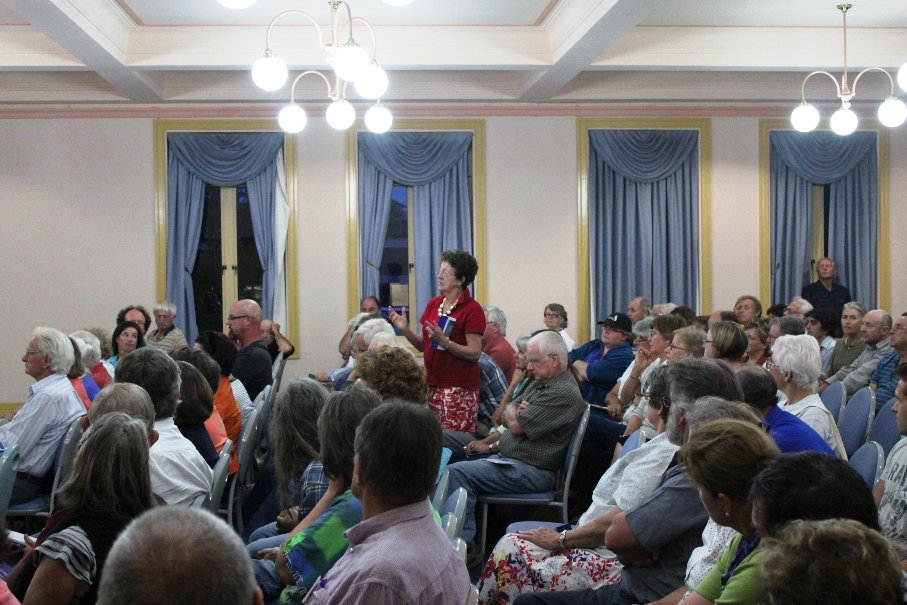 Community protest meeting against local coal mining
[Source: ‘Sea of hands support gasfield free region at Tamworth public meeting’, 20130226,
^http://maulescreek.org/news/page/3/] Community protest meeting against local coal mining
[Source: ‘Sea of hands support gasfield free region at Tamworth public meeting’, 20130226,
^http://maulescreek.org/news/page/3/]
.
[8] Whitehaven Coal – the dirty face of the Coal Industry

Whitehaven Jobs: << With a workforce which will surpass 1000 people in the next five years, we are the place for opportunity. We are independent, we have a high quality portfolio of producing mines and we are developing three of Australia’s most significant new coal projects.
We want smart, committed, motivated people who value a dynamic culture and quick decision making. We want people who value being part of a community and achieving goals. At Whitehaven people can make a difference, and do make a difference. Our operations are currently underpinned by our Narrabri underground longwall operation and our three existing open cut mines – all situated in NSW’s Gunnedah Basin.
Our Maules Creek Project, also in the Gunnedah Basin, was fully approved in July 2013 and will provide significant and exciting career opportunities across a wide range of mining-related professions. Maules Creek is one of the last major undeveloped and significant multi-seam coal deposits in New South Wales and is expected to sustain a potential project life in excess of 30 years. It is approved to extract up to 13 Mt of coal per annum and rail 12.4 Mt of product from the site in any calendar year.>>
[Source: <<http://www.whitehavencoal.com.au/careers.cfm]
.
[8] ‘Icons under threat‘, Nature Conservation Council of New South Wales, 2012, report, ^http://nccnsw.org.au/content/icons-under-threat
.
Saturday, October 5th, 2013
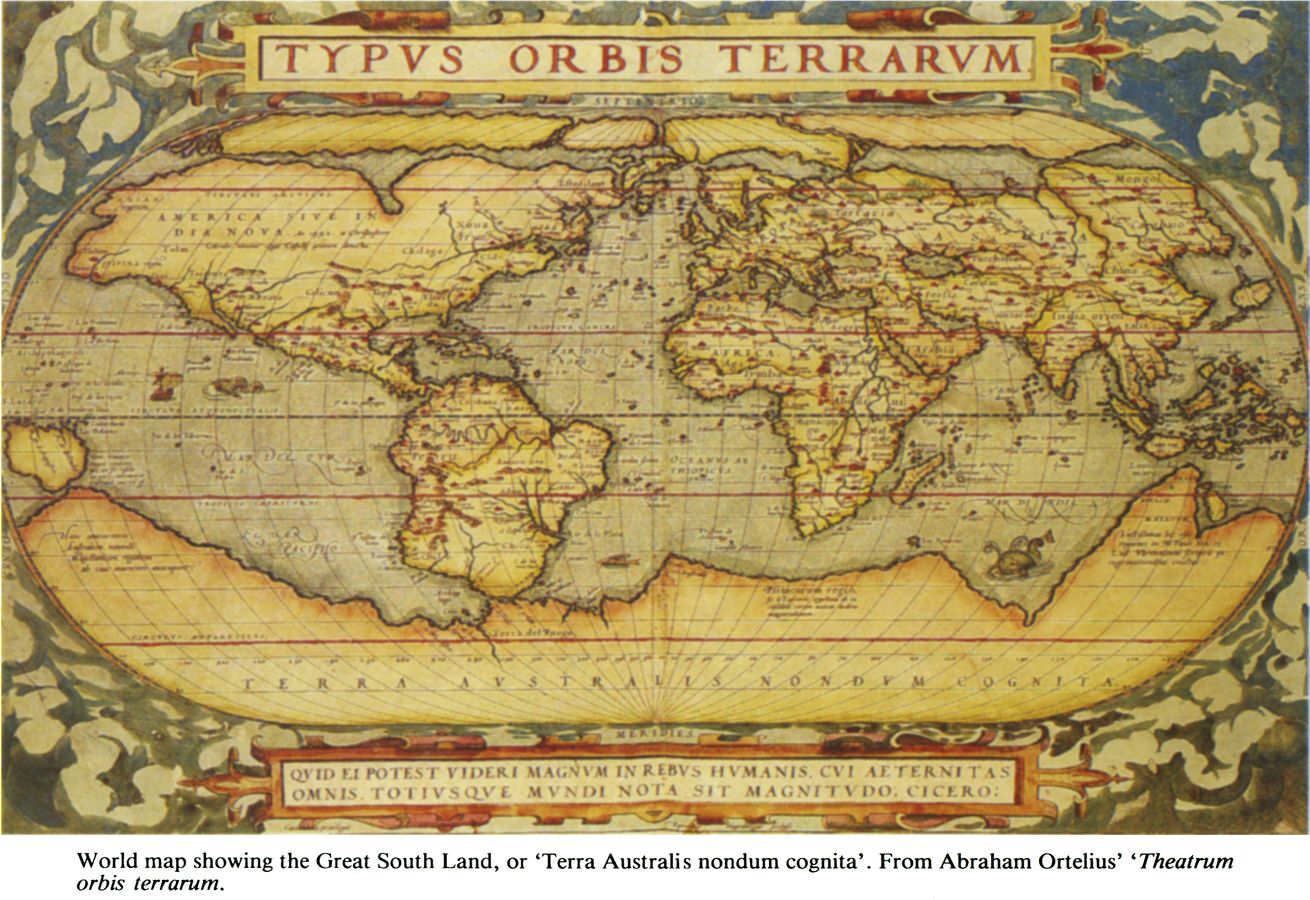 ‘Typus Orbis Terrarum’ (Spherical Model of the Earth) of 1564
[Source: ‘World map showing the Great South Land, or ‘Terra Australis nondum cognita’, from Abraham Ortelius’ ‘Theatrum orbis terrarum’, No 41 Autumn 1988, The La Trobe Journal State Library of Victoria, State Government of Victoria Australia, ^http://www3.slv.vic.gov.au/latrobejournal/issue/latrobe-41/fig-latrobe-41P001a.html]
Click image to enlarge ‘Typus Orbis Terrarum’ (Spherical Model of the Earth) of 1564
[Source: ‘World map showing the Great South Land, or ‘Terra Australis nondum cognita’, from Abraham Ortelius’ ‘Theatrum orbis terrarum’, No 41 Autumn 1988, The La Trobe Journal State Library of Victoria, State Government of Victoria Australia, ^http://www3.slv.vic.gov.au/latrobejournal/issue/latrobe-41/fig-latrobe-41P001a.html]
Click image to enlarge
.
This is one of the earliest walled atlases of the world by Flemish cartographer and geographer, Abraham Ortelius (b.1527). Ortelius is generally recognized as the creator of the first modern atlas, here adopting the Theatrum Orbis Terrarum or “Theatre of the World” projected interpretation. Across the south of the world he extrapolated a then yet to be discovered ‘Terra Australis nondum cognita’ or Great South Land not yet known’.
Once known, it became abbreviated to ‘Terra Australis’ and subsequently named by British explorer Matthew Flinders’ simply as ‘Australia’. Since then Australians have abbreviated everything possible..
Ortelius is also believed to be the first to imagine that the continents were joined together before drifting to their present positions. So perhaps Ortelius should be a scholar of Gondwana.
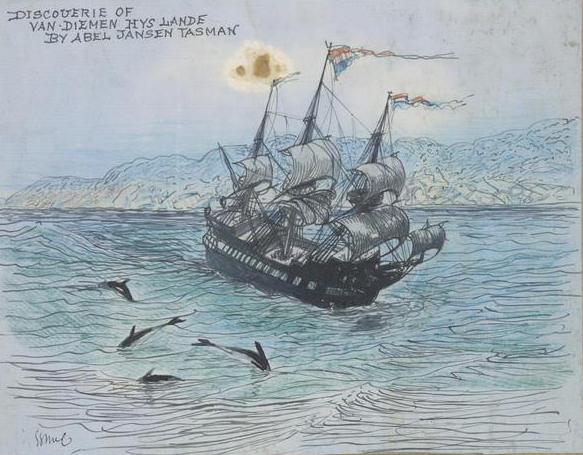 . .
The following extracts have been taken from the Introduction in a 1987 book by Ian G. Read entitled, ‘The Bush – a Guide to the Vegetated Landscapes of Australia‘.. Images have been added by our Editor.
<< Australia is a vast land of never-ending horizons, broken back ranges, eerily silent forests and golden, blue shores. It is also a land of vast suburban sprawls, monotonous cropping country, eroded hillsides and long lanes of traffic leading to the beach. It is a land that has been populated for millennia and a land that has attracted new populations to its more equable southern and eastern fringes. It is both an old and a new Australia.
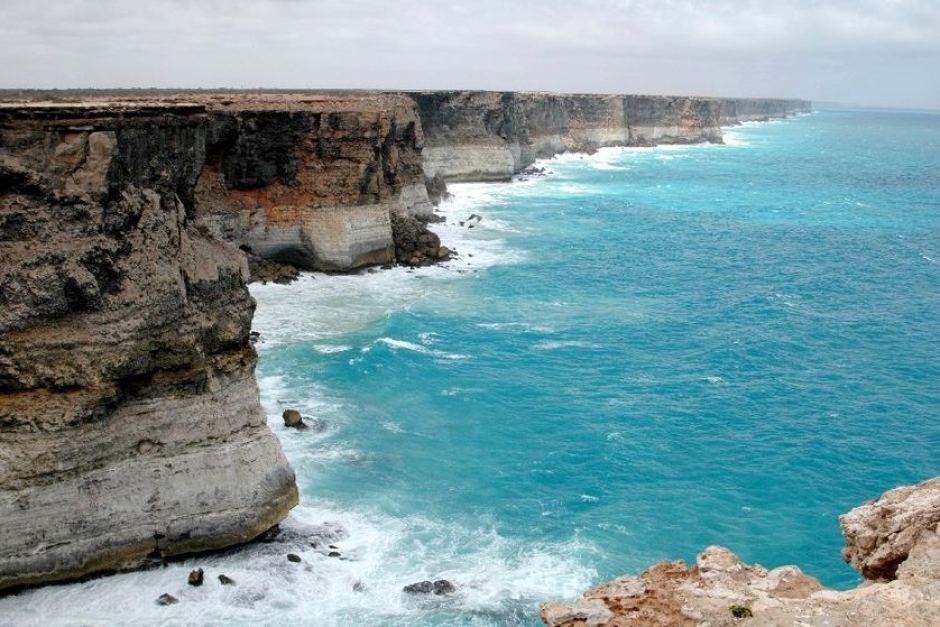 Perhaps each Australian would gain from pilgrimage to the infinite horizon of The Great Australian Bight,
to grasp its awe and so with it, their own smallness.
[Ed: Note the curvature of the horizon. The planet is not as unlimited as many babyboomers imagine.] Perhaps each Australian would gain from pilgrimage to the infinite horizon of The Great Australian Bight,
to grasp its awe and so with it, their own smallness.
[Ed: Note the curvature of the horizon. The planet is not as unlimited as many babyboomers imagine.]
.
To the European man Australia as firstly a mere conception, a conjecture on the earliest world maps, the Great South Land. With exploration and discovery the land grew in the minds of explorers, the map makers and the ruling classes of Europe. To Asian man Australia was a reality, particularly its northern shores which were frequently visited by peoples of the islands to the north. To the Aborigines Australia was home and has been for at least 40,000 years.
Europeans, being the latest of mankind’s races to make contact with Australia are, due to their history and traditions, the least capable of understanding the land. Having only settled here for seven or eight generations many European types have yet to establish a connection with the land beyond that of viewing the land as a resource. The last two hundred (and twenty five) years has seen the land undergo significant changes, the changes of occupation. No longer is the land in a state of balance but a state of change based on economic development.
.
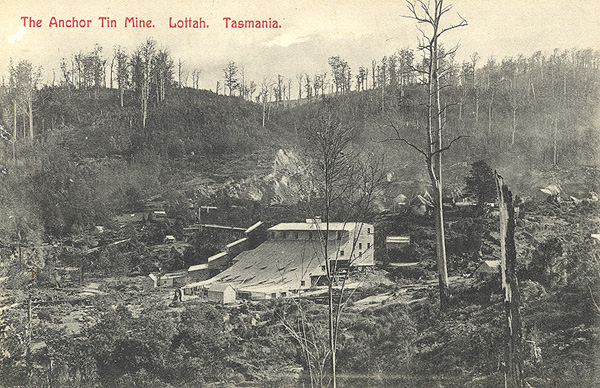 Anchor Tin Mine , Lottah Tasmania
(Tasmaniana Library, State Library of Tasmania) Anchor Tin Mine , Lottah Tasmania
(Tasmaniana Library, State Library of Tasmania)
.
As this development gained momentum during the twentieth century the new arrivals became less dependent on the land for their existence. There was a shift of values regarding the land; values which alienated the land further from the occupiers. European man did not see the land as nurturer but as a resource to be exploited. >>
.
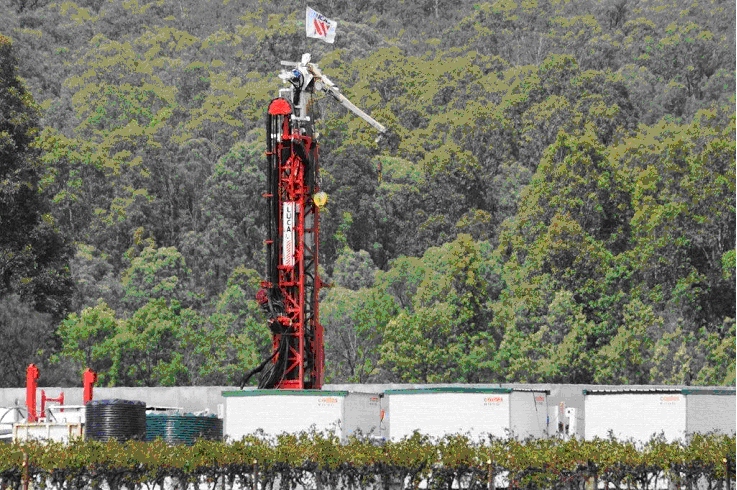 Coal Seam Gas Mining in the Hunter Valley north of Sydney, 2012
^http://www.huntervalleyprotectionalliance.com/HVPA_brochure_20120109.html Coal Seam Gas Mining in the Hunter Valley north of Sydney, 2012
^http://www.huntervalleyprotectionalliance.com/HVPA_brochure_20120109.html
.
<<..The history of European occupation of the lands of Australia is not a good one. Through fear, ignorance, greed or power much of the land has suffered. It is thought that the earliest settlers wanted to create landscape similar to where they came from so they imported planst and animals and a way of life in order to tame what they thought was a harsh environment.
.
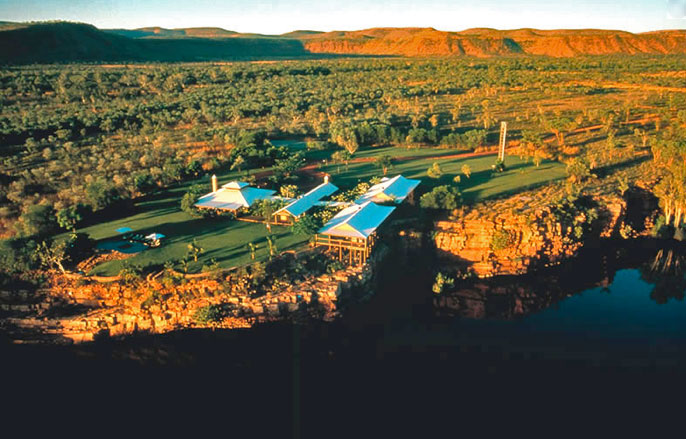 El Questro Station, The Kimberleys
Some things don’t change. The cattle station was initially established in 1903.
In 1991, an English aristocrat bought the cattle station and developed into a tourist park, and continues to run 8,000 head of cattle.
[Source: ^http://www.broomeandthekimberley.com.au/gibb-river-road-and-gorges/] El Questro Station, The Kimberleys
Some things don’t change. The cattle station was initially established in 1903.
In 1991, an English aristocrat bought the cattle station and developed into a tourist park, and continues to run 8,000 head of cattle.
[Source: ^http://www.broomeandthekimberley.com.au/gibb-river-road-and-gorges/]
.
The discovery of gold brought (considerably) more people who came to exploit the land without returning anything to it; needless to say many remained on the goldfields though most returned to coastal cities or to whence they came. Then followed a period of pastoral expansion whereby over ten per cent of the land was cleared of trees and another sixty per cent was grazed, browsed and trampled by sheep and cattle. Even today vast tracts of country are being cleared of vegetation.
.
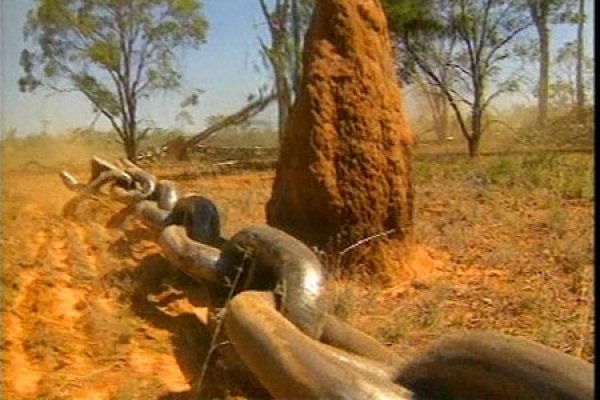 Queensland Premier Campbell Newman’s government this week passed the Vegetation Management Framework Amendment Bill, which effectively removes protection of two million hectares of mature and recovering bushland.
[Source: ‘Newman takes axe to Abbott’s Direct Action, and Qld bush’, 20130524, by Giles Parkinson, Australian and New Guinea Fishes Association – QLD Inc. ^http://www.angfaqld.org.au/aqp/blog/2013/05/24/newman-takes-axe-to-abbotts-direct-action-and-qld-bush/] Queensland Premier Campbell Newman’s government this week passed the Vegetation Management Framework Amendment Bill, which effectively removes protection of two million hectares of mature and recovering bushland.
[Source: ‘Newman takes axe to Abbott’s Direct Action, and Qld bush’, 20130524, by Giles Parkinson, Australian and New Guinea Fishes Association – QLD Inc. ^http://www.angfaqld.org.au/aqp/blog/2013/05/24/newman-takes-axe-to-abbotts-direct-action-and-qld-bush/]
.
Much of the Brigalow country of Queensland is disappearing; plans have been put forward to clear parts of the Western Division of New South Wales for crops while the conservative elements in Western Australia had plans to clear the Yilgarn and Dundas wilderness so that the sons of farmers could work their own properties. All this was (and is?) to occur in the face of unreliable rainfall, rising salt in the soil (which makes the land useless in less than three generations), and a loss of countless habitats.
.
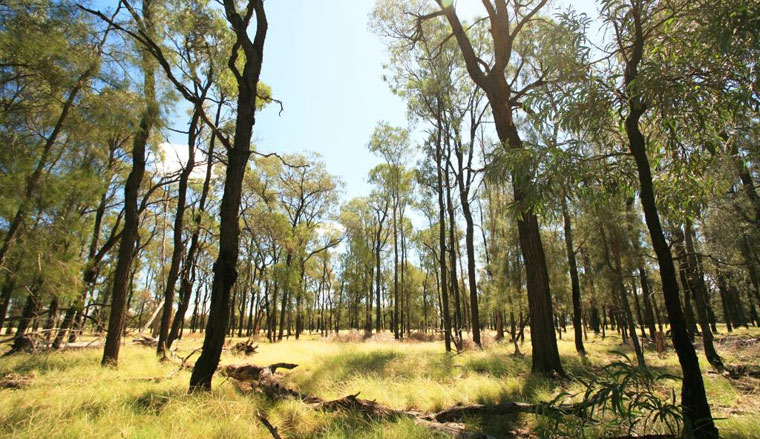 Brigalow Ecological Community (Acacia harpophylla) Brigalow Ecological Community (Acacia harpophylla)
Listed as Endangered in 2001 due to two centuries of continuing mass deforestation for cropping and pasture.
^http://www.environment.gov.au/cgi-bin/sprat/public/publicshowcommunity.pl?id=28&status=Endangered
.
Though fear of the land may have been reduced over the last two hundred (and twenty five) years ignorance, greed or power are still potent masters, and each still operates to alienate the European from his or her new landscapes.
The landscape does not evoke fear or alienation, the mind does. The landscape can trigger those feelings but it is the perception of that landscape through ignorance or a lack of understanding that induces a negative reaction.
Changing one’s perception requires more than changing one’s mind but it may be that understanding and interpreting what is being seen is all that is required. Interpretation need not be involved because all it requires is a knowledge of its components. It’s how these components fit together that is complicated. To be able to put a name to something greatly assists in interpreting what is being seen while to actually discover that named ‘something’ is an experience in itself. >>
.
~ Extracts from the Introduction, in The Bush – a Guide to the Vegetated Landscapes of Australia, by Ian G. Read, 1987, Reed Books, pp. 9-10.
.
Perceived character of natural areas (1978):
.
<<
- Less than 4% see natural areas as bad, ugly, noisy, dirty, repulsive, evil, wasteful, boring, dead, uninviting, dull, useless or depressing
- Between 4% and 25% see natural areas as bleak, dangerous or fragile
- Between 25% and 50% see natural areas as happy, friendly, sacred, huge, roadless or pure
- More than 50% see natural areas as good, remote, alive, exciting, unique, wild, challenging, inspiring, valuable, restful, unspoiled, free, beautiful or natural. >>
.
~ Based upon research for a doctoral thesis by Keith McKenry, contained in Mosley, 1978.
.
“Too far South for spices and too close to the rim of the earth to be inhabited by anything but freaks and monsters.”
.
~ Abel Tasman upon sighting the West Coast of Tasmania in November 1642.
.
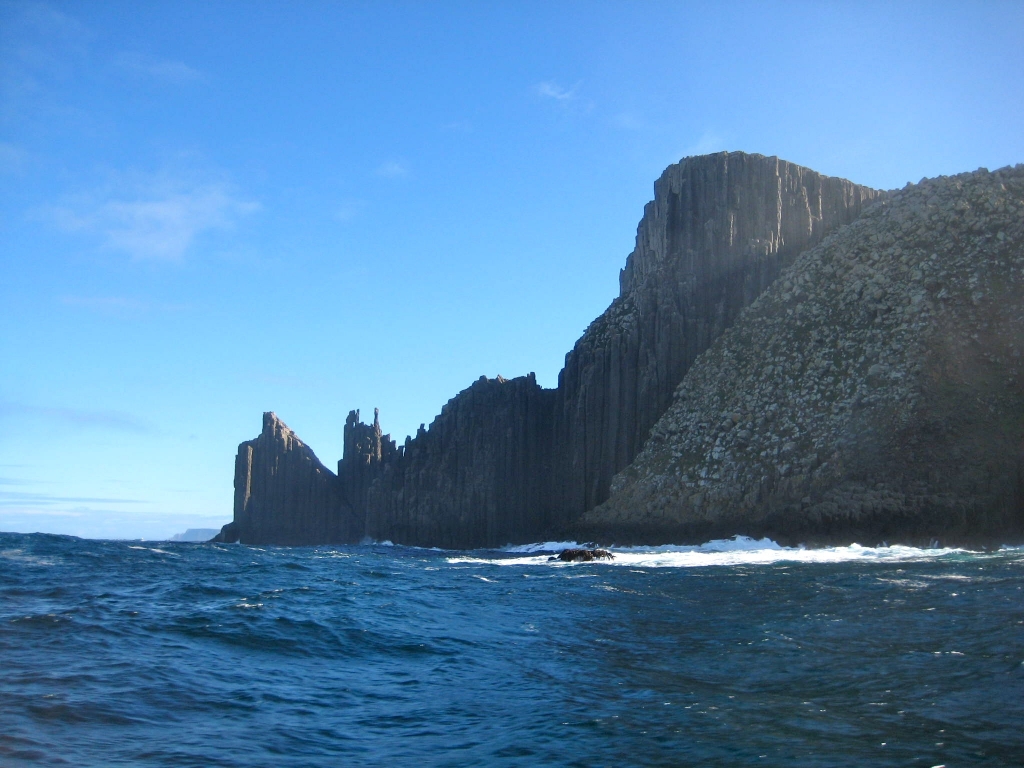 Photograph of Cape Point Raoul, South West Wilderness, Tasmania.
[Source: Jane Stadler, ^http://www.australian-cultural-atlas.info/CAA/listing.php?id=72] Photograph of Cape Point Raoul, South West Wilderness, Tasmania.
[Source: Jane Stadler, ^http://www.australian-cultural-atlas.info/CAA/listing.php?id=72]
.
<< Australia’s most important environmental case, ‘the Franklin Dams Case’, a successful High Court challenge, influenced the outcome of a federal election and resulted in World Heritage nomination for south-west Tasmania in 1982.
Enlarged in 1989 to cover 20 per cent of Tasmania’s land area, the Tasmanian Wilderness World Heritage Area (1.38 million hectares) failed to protect the tall eucalypt forests excluded by a convoluted eastern boundary. These ancient forests are being progressively decimated by industrial forestry, despite an international outcry. The south-west is recognised as one of the earth’s few remaining extensive temperate wilderness areas, a significant tourist drawcard posing fresh challenges as increasing visitor numbers impact on its outstanding natural values. >>
..
[Source: South West, by Helen Gee, 2006, in Companion to Tasmanian History, Centre for Tasmanian Historical Studies, University of Tasmania,^http://www.utas.edu.au/library/companion_to_tasmanian_history/S/South%20west.htm]
.
<< Overall, Australia has lost nearly 40% of its forests, but much of the remaining native vegetation is highly fragmented. As European colonists expanded in the late 18th and the early 19th centuries, deforestation occurred mainly on the most fertile soils nearest to the coast.
In the 1950s, south-western Western Australia was largely cleared for wheat production, subsequently leading to its designation as a Global Biodiversity Hotspot given its high number of endemic plant species and rapid clearing rates. Since the 1970s, the greatest rates of forest clearance have been in south-eastern Queensland and northern New South Wales, although Victoria is the most cleared state.
Today, degradation is occurring in the largely forested tropical north due to rapidly expanding invasive weed species and altered fire regimes. Without clear policies to regenerate degraded forests and protect existing tracts at a massive scale, Australia stands to lose a large proportion of its remaining endemic biodiversity. The most important implications of the degree to which Australian forests have disappeared or been degraded are that management must emphasize the maintenance of existing primary forest patches, as well as focus on the regeneration of matrix areas between fragments to increase native habitat area, connectivity and ecosystem functions. >>
.
[Source: ‘Little left to lose: deforestation and forest degradation in Australia since European colonization’, by Corey J. A. Bradshaw, School of Earth and Environmental Sciences, The University of Adelaide, article in Journal of Plant Ecology, Vol. 5, Issue 1, pp. 109-120, ^http://jpe.oxfordjournals.org/content/5/1/109.full]
.
.
.
Further Reading:
.
[1] ‘A Terrible Beauty‘, by Richard Flanagan, , Melbourne, 1985, Greenhouse Publications
.
[2] ‘The South West Book’, by Helen Gee & Janet Fenton,1978, Melbourne, William Collins and the Australian Conservation Foundation
.
[3] ‘Trampled Wilderness’, by R & K Gowlland, Devonport, 1975, C.L. Richmond and Sons Pty Ltd
.
[4] ‘History of West and South-West Tasmania’, by T Jetson & R Ely, Hobart, 1995, Tasmanian Historical Research Association
.
[5] ‘Patriots: Defending Australia’s Natural Heritage‘, by William J. Lines, 2006, University of Queensland Press
.
[6] ‘The Biggest Estate on Earth: How Aborigines Made Australia‘, by Bill Gammage, 2012, Allen & Unwin
.
[7] ‘Woodland to Weeds – Southern Queensland Brigalow Belt‘, by Nita C. Lester, 2008, 2 ed, Brisbane: Copyright Publishing
.
[8] ‘ The Discovery of Tasmania: Journal Extracts from the Expeditions of Abel Janszoon Tasman and Marc-Joseph Marion Dufresne, 1642 & 1772‘, rare book by Abel Tasman.
.
Friday, June 7th, 2013
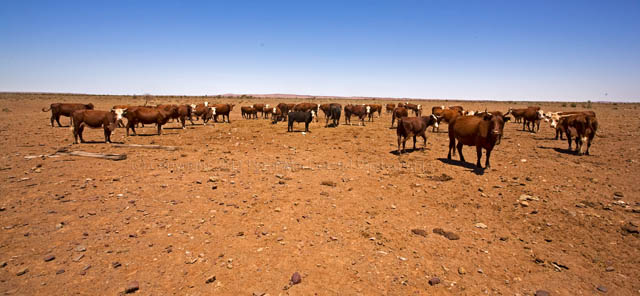 Australian cattle with no pasture, no water, no shade, in baking desert heat.
Typical is the wrath of Northern Australian Cattle Farmers.
Southern Australian Cattle Farmers would never allow this treatment to their prized herds.
Australian cattle with no pasture, no water, no shade, in baking desert heat.
Typical is the wrath of Northern Australian Cattle Farmers.
Southern Australian Cattle Farmers would never allow this treatment to their prized herds.
.
<<The Independent Member for Denison, Andrew Wilkie, has joined Lyn White from Animals Australia ( ^http://www.animalsaustralia.org/ ) to release new footage of cruelty to Australian livestock exported to Egypt and announce another attempt to progress legislation to ban the trade.
Mr Wilkie said his Bill would phase out live exports in three years, as well as immediately impose mandatory stunning of Australian livestock slaughtered overseas.
Mr Wilkie:
“The live export industry is systemically cruel, opposed by the vast majority of Australians and not in our economic interests. This latest evidence of horrific animal cruelty in Egypt demonstrates that this trade will never have appropriate animal welfare outcomes and must be stopped.
I have given formal notice of my intention to introduce the Live Animal Export (Restriction and Prohibition) Bill 2013 into Federal Parliament. A similar Bill was rejected by the Government and Opposition in August 2011. Since then we have seen shocking evidence of more live export cruelty in Kuwait, Pakistan, Israel, Egypt and Indonesia.
It is my hope that the Government and Opposition will now see sense and support the end of this cruel trade.”>>
.
[Source: ‘New footage of cruelty to Australian livestock’, by Andrew Wilkie MP, Independent Member for Denison MR, 20130516, Tasmanian Times, ^http://tasmaniantimes.com/index.php?/article/new-footage-of-cruelty-to-australian-livestock/]
.
.
[Source: Animals Australia, ^http://www.animalsaustralia.org/take_action/cattle-cruelty/]
.
Outback Marginal Grazing is Unviable
.
- Outback Queensland depends upon the inflated outback cost of diesel to freight cattle hundreds of kilometres to abattoirs or to port for live export
- Australia’s native northern has since colonial times been abused, overgrazed, broadscale burned uncontrollably until the savannah has become desert
- Seasonal drought has struck northern Australia’s savannah yet again, like in 2011 and many times prior – nothing new there.
- Greedy cattle farmers have built up excess herds, creating over-supply in cattle at meatworks, meaning cattle prices have plummeted below the cost of getting them to market
- Indonesia’s live export market was always a short term option as Indonesia built its own herds to a point of self-sufficiency – no news there
- Starved cattle stock with visible bony ribs are currently selling for $20 a head at Longreach. It happened before in the 1974 beef crash – no lessons learnt from that.
- Western Queensland land values have slumped and northern and western Queensland stations — like their excess cattle — are virtually impossible to sell
- Australia’s rural sector is now weighed down with $66 billion of combined debt, many cattle farmers are in a debt crisis and marginial equity in properties
- Bankers are now starting to call in debts, especially in the north, triggering a new round of station sales and mortgagee auctions.
- Three of Australia’s biggest cattle companies, Macquarie Agricultural Fund’s Paraway Pastoral, the stock-exchange listed Australian Agricultural Company and North Australian Pastoral Company have already written down the value of their vast portfolios by a combined $80m.
- AACo announced yesterday that fast-falling cattle prices had forced a $43m writedown of the value of its 600,000-head herd.
- The Cattle Council of Australia yesterday warned that this week’s disastrous $20-a-head sale prices had created a critical situation.
- “These prices are indicative of the critical conditions our northern producers are experiencing; unseasonably dry conditions, suppressed market conditions and the continued fallout from the live trade suspension,” CCA president Andrew Ogilvie said. “I fear that the situation will continue to get worse.”
- A survey by rural bankers Rabobank this week reflected widespread fears of approaching drought. It showed 37 per cent of farmers had lost confidence in the future and expect the next year ahead to be tougher than the past 12 months. About one third expect to suffer a fall in income in 2013-14.>>
.
[Source: ‘Drought stalks the land again’, by Sue Neales, Rural reporter, The Australian newspaper, 20130504, ^http://www.theaustralian.com.au/news/nation/drought-stalks-the-land-again/story-e6frg6nf-1226634963784]
.
Ain’t a farmer’s duty to leave a place better than how one found it?
.
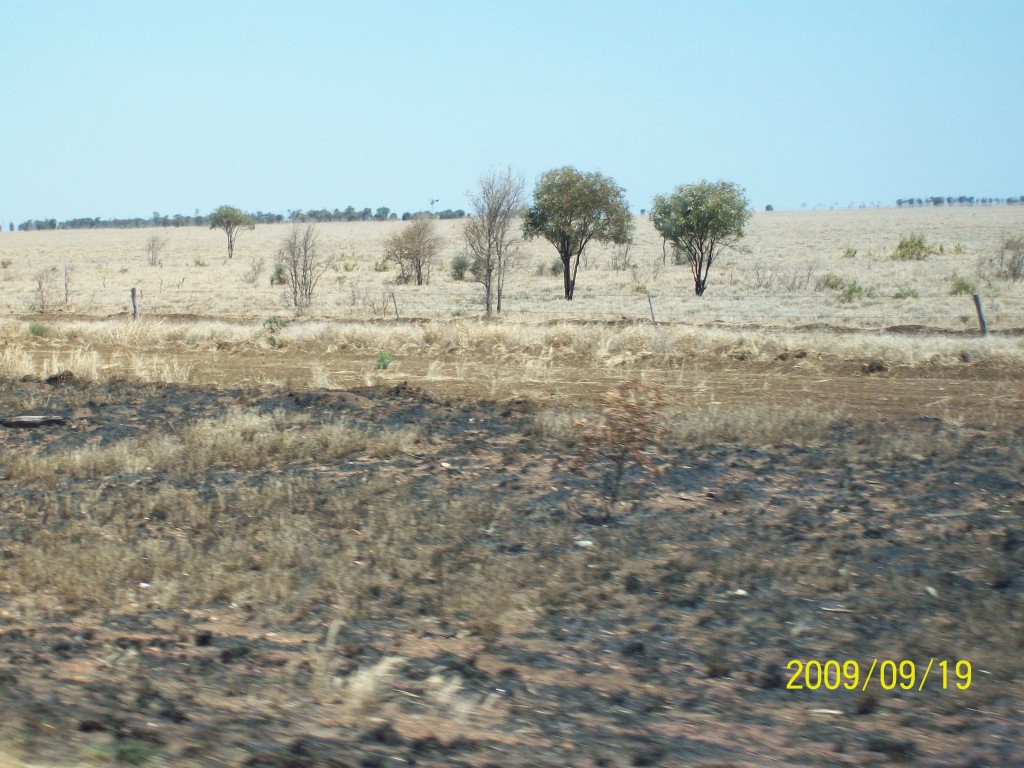 Not looking good.
Generations of Cattle Overgrazing of Australia’s Northern Savannah has decimated it to desert.
It’s similar to the 1930s dustbowlers of the American midwest; farmers abused the land and now they expect charity?
Snap out of the family history dogma.
While you have life and limb, relocate to reliably greener pastures! Not looking good.
Generations of Cattle Overgrazing of Australia’s Northern Savannah has decimated it to desert.
It’s similar to the 1930s dustbowlers of the American midwest; farmers abused the land and now they expect charity?
Snap out of the family history dogma.
While you have life and limb, relocate to reliably greener pastures!
.
[Ed: A previous image here has been removed by us upon becoming aware of its alleged copyright. We obtained the image from the Internet and there were no copyright notices. We noted multiple copies attributable to different sources. Nevertheless we have removed the image immediately and offer our apologies to the owner/s of the image.]
.
Australian Drought Every Decade
.
Australia is subject to seasonal drought commonly at intervals of 11 to 14 years. This has nothing to do with Climate Change theory. Think more El Niño and the varying Pacific Ocean currents and temperatures. The pattern is historically consistent since at least colonisation and probably through millennia.
Major droughts have included 1803, 1809-10, 1813-15, 1826-29, 1835, 1838-39, 1846, 1849-50, 1864-66, 1868, 1877, 1880-86, 1888, 1902, 1911-15, 1918-20, 1937-47, 1965-68, 1982-83, 1991, 1994-2006, 2013.
Australia is the driest continent on Earth. Don’t rural Australian kids get that drummed into them in primary school? Northern Australia’s vast and dry savannah country, inland and west of the Divide is marginal at best for pasture, let alone cropping. Yet after a few bouts of rain, short term memory kicks in. The marginal farmer’s false hope of good timely rain is legendary chronic folklore full of wishful thinking, short term memory loss and denial of Australia’s weather.
.
Occasional rain has become the Marginal Farmer’s Pyrite – fool farmer’s gold.
.
Overgrazing
.
One of the risks associated with arid and semi-arid grazing systems in particular, is land degradation as a result of overgrazing. Overgrazing can be defined as the practice of grazing too many livestock for too long a period on land unable to recover its vegetation, or of grazing ruminants on land not suitable for grazing as a result of certain physical parameters such as its slope.
Overgrazing exceeds the carrying capacity of a pasture. However there may be other factors involved or contributing to apparent overgrazing such as climate change. Overgrazing often results in soil erosion, the destruction of vegetation, and other problems related to these processes.
.
Overgrazing is repeating the US Dustbowl of the ’30s
.
<<Extensive deep plowing of the virgin topsoil of the Great Plains in the preceding decade had displaced the natural deep-rooted grasses that normally kept the soil in place and trapped moisture even during periods of drought and high winds. Rapid mechanization of farm implements, especially small gasoline tractors and widespread use of the combine harvester, were significant in the decisions to convert arid grassland (much of which received no more than 10 inches (250 mm) of precipitation per year) to cultivated cropland.
During the drought of the 1930s, without natural anchors to keep the soil in place, it dried, turned to dust, and blew away with the prevailing winds>>
.
The glut of unwanted cattle is a symptom of an industry run by incompetents. Cattle farmers who put their trust in government and industry big wigs do so at their peril.
.
Australia has only 6% Arable Land
.
<<The Arable land (% of land area) in Australia was 6.14 in 2009, according to a World Bank report, published in 2010.
Arable Land includes land defined by the Food and Agriculture Organization of the United Nations as ‘land under temporary crops (double-cropped areas are counted once), temporary meadows for mowing or for pasture, land under market or kitchen gardens, and land temporarily fallow‘. Land abandoned as a result of shifting cultivation is excluded.>>
.
[Source: ‘Arable land (% of land area) in Australia’, ^http://www.tradingeconomics.com/australia/arable-land-percent-of-land-area-wb-data.html]
.
.
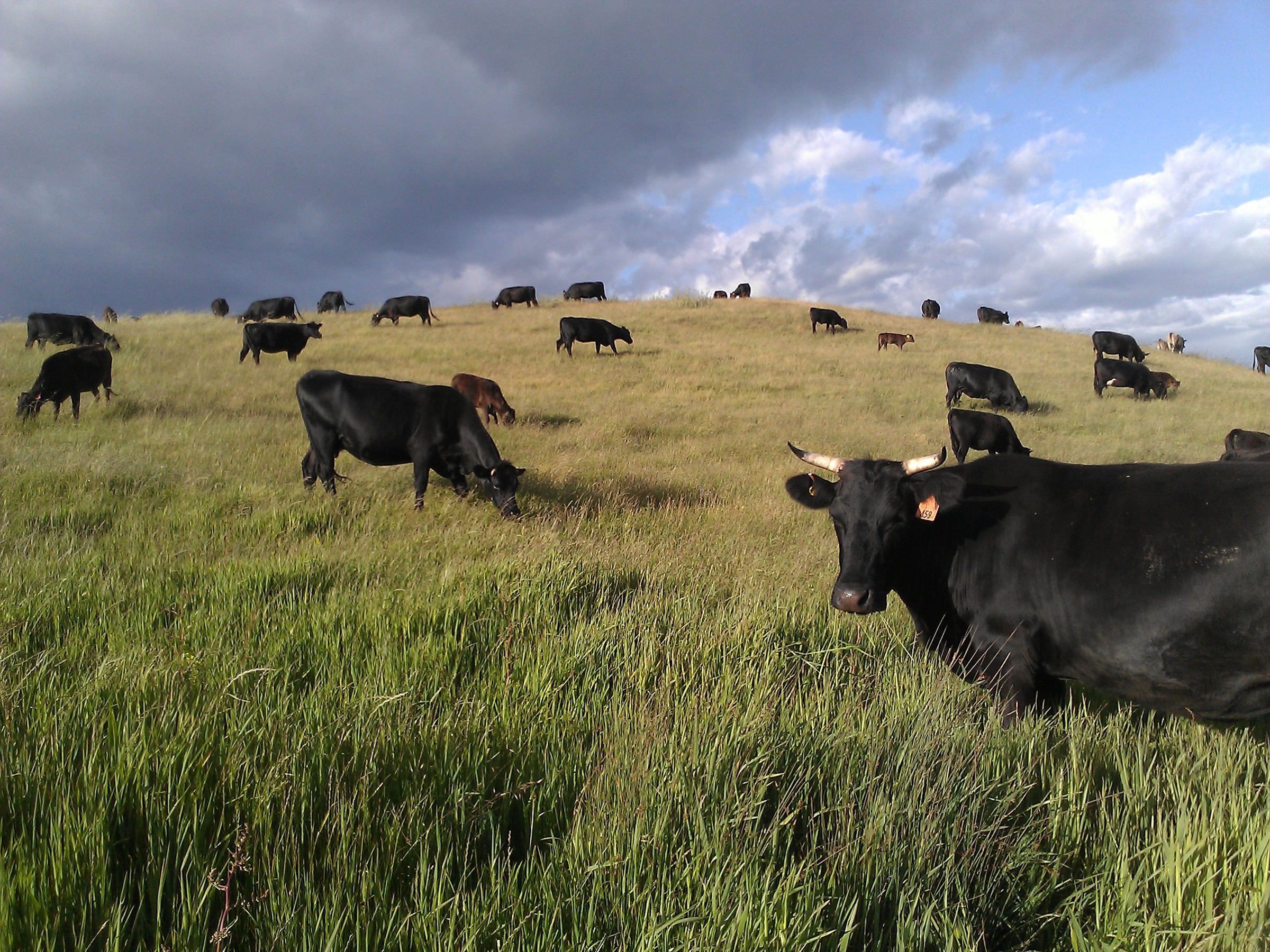 Prime Australian Country for Waygu Beef
Read: ^http://wagyu.une.edu.au/]
Prime Australian Country for Waygu Beef
Read: ^http://wagyu.une.edu.au/]
.
Case Study of Good Rainfall and Sustainable Location
.
Corumbene Brangus Cattle
.
<<At Corumbene Brangus we are dedicated to producing the type of stock that you would be proud to have in your herd. We have taken the time to assess, improve and adapt our breeding herd to the Southern Australian climate and producing cattle of distinction and character that we love.
Our property is situated in the Western District of South West Victoria. We have a high average rainfall of about 30″, with temperature ranging from mid 40’sC (104 Fahrenheit) in summer to low minus in winter. Our pastures are predominately rye and clover kept productive with an extensive pasture renovation and soil conditioning program.
Corumbene Brangus cattle are raised solely on these healthy pastures. Brangus cattle are known for their ability to excel on pasture alone with early finishing and easy fleshing ability no matter what season or time of the year, in all our weather extremes. We calve down during Spring (August-October) each year.>>
.
[Source: Corumbene Brangus, ^http://www.corumbenebrangus.com/cattle.htm]
.
Observations about MLA’s herded strategy for Northern Australia
.
1. Putting all cattle into a single export market to Indonesia is poor strategy – remember that proverb, don’t put all your eggs in one basket – what action has been taken to develop other export markets?
2. Indonesia has long indicated to Australia that it is breeding towards self-sufficiency in its own live cattle supply, so the decrease in live cattle demand was on the cards, to eventually dry up.
3. Northern Australia’s drought and flood cycle is not new. Farmers must have been aware of the likelihood of drought following the floods of the past four years, so why risk excessive stock?
4. Poor quality control of live export to ensure Australian standards were being met was slack. The strategic risk of discovery of cruel abuse of cattle by an Indonesian abattoir was high. So given that risk, the Meat and Cattle Association (MLA) should have been proactive and diligent in ensuring such abuse was not possible. When abuse is systemic it is only a matter of time before it would be publicly exposed. And the likely consequences of a trade shut down would be been reasonably forseeable.
5. Aside from the above live export has an ongoing record or cruelty and abuse under industry self regulation. So it is always going to be high risk from a social stakeholder perspective. Those who live by the sword…
6. In Australia, in any industry – media, agriculture, mining, forestry- self-regulation never works to the standard expected of Australian society.
.
We have no sympathy for the industry. May the northern Australian cattle industry linked to live trade go bankrupt as it morally deserves.
.
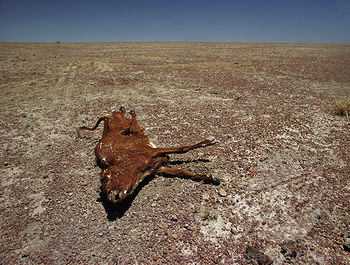 Once a farmer can inflict such upon his stock, he possesses such evil to do so the same to his children
Once a farmer can inflict such upon his stock, he possesses such evil to do so the same to his children
Criminal bastardry deserves criminal justice.

<<She won’t mind if the place we stand is marked by ash.
She believes what doesn’t kill her only takes more time to kill her.
Then she smiles as she paints her lips and does her lashes.
Stunning as a taxidermy victim in a silver cage.
I’m arrested by an aria brought from the country.
Stuck in dumb amazement like a dog who’s told to levitate.
This smash number-one goes to her lover in the belfry,
Singing like a bird in flames and headed for the window pane.
In the coming years, let’s try and milk a fortune off them.
I think we’re qualified by now.
Alouette, gentille alouette.
Head to toe so thoroughly until we’re both dismembered.
Alouette, gentille alouette.
Naá¯ve, yes, but none the worse, spinning glue back into horses.
I’ll never leave the place where you are.
Hand-in-hand into a rented car.
Merrily into the abattoir.
Spilling out all over, I’ll be Noah on the storm.
And two-by-two in love we’ll speed back into bed and never leave it.
In the coming years, let’s try and milk a fortune off them.
I think you’re qualified by now.
Alouette, gentille alouette.
Head to toe so thoroughly until we’re both dismembered.
Alouette, gentille alouette.
Naá¯ve, yes, but none the worse, spinning glue back into horses.
Alouette, gentille alouette.
Head to toe so thoroughly until we’re both dismembered.
Alouette, gentille alouette.
Alouette, gentille alouette.>>
.
[Source: The Pernice Brothers’, Cruelty To Animals’]
.
[Ed: My father’s family heritage was sheep farming in Victoria’s west dry marginal Wimmera and our sheep farming roots extended back to 18th Century England. That tradition ended under tragic circumstances near Stawell in 1942; yet in hindsight, subsequent generations of our family are far better for it. Relocating takes more guts than putting up. Honour is more deserving of our future generation; the oldies should understand.]
.
Tags: animal cruelty, Australian Agricultural Company, Australian livestock, Cattle Overgrazing, Egypt, El Niño, Indonesia, Indonesian abattoirs, Indonesian torture of Australian Cattle, Israel, Kuwait, live cattle trade, Marginal Farmer's Pyrite, Meat and Livestock Association, North Australian Pastoral Company, Northern Australian Savannah, Pakistan
Posted in 53 Animal Welfare!, Threats from Farming | 1 Comment »
Add this post to Del.icio.us - Digg
Saturday, April 13th, 2013
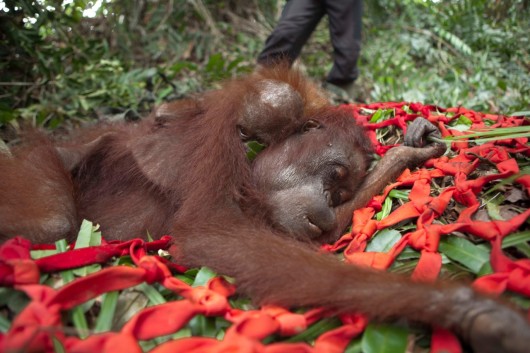 March 2013: she’s almost dead, like her entire species cornered in the wild March 2013: she’s almost dead, like her entire species cornered in the wild
.
<<Footage released 4th April 2013 shows starving orangutans being rescued from an oil palm concession in Borneo after their forest homes were bulldozed by a member of the Roundtable on Sustainable Palm Oil (RSPO), in flagrant violation of the body’s rules.
Conservationists have urged oil palm firm Bumitama Gunajaya Agro (BGA) to cease further clearing immediately amid credible concerns that more of the endangered species are trapped inside the concession and will die if not relocated.
.
[Bumitama is an Indonesian Oil Palm plantation company that cultivates Oil Palm trees and produces crude palm oil (CPO). It was established in 1996 by the Harita Group through its first acquisition of land bank in Central Kalimantan. In 2007, IOI Corporation bought a 33% stake in PT Bumitama Gunajaya Agro.
As of March 2012, Bumitama controls over 190,000 hectares of land bank and has planted 133,000 hectares of Oil Palm trees, mostly in Central and West Kalimantan. Bumitama owns 6 CPO mills (5 in Kalimantan and 1 in Riao), which produces more than 450,000 tons of CPO a year. The main buyers of their CPO include Wilmar, Sinar Mas, and Musim Mas. ]
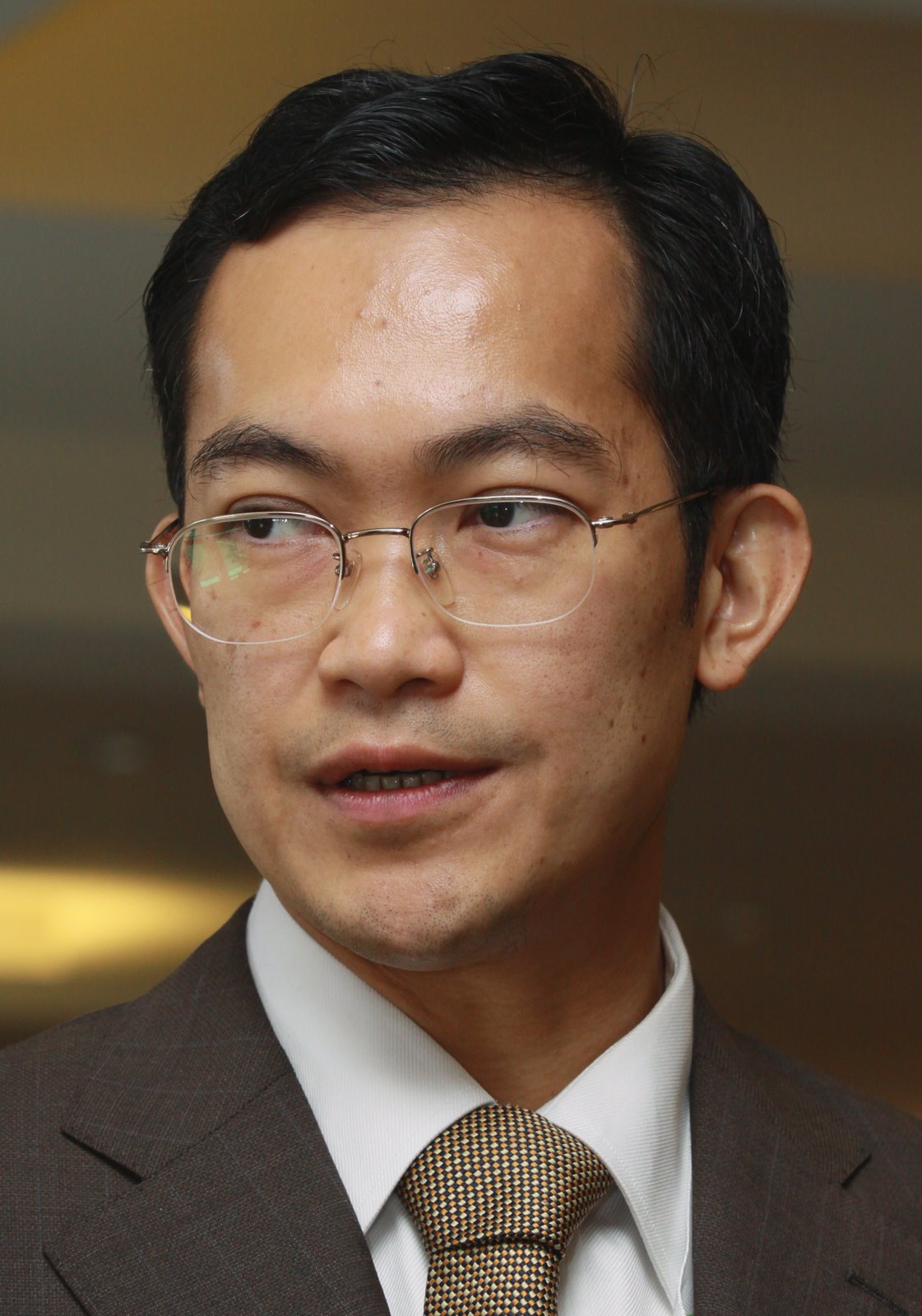 Dato’ Lee Yeow Chor
Group Executive Director, Dato’ Lee Yeow Chor
Group Executive Director,
IOI Group of Companies
.
According to RSPO statutes BGA should have carried out High Conservation Value assessments prior to clearing in the concession, setting aside areas that are home to the endangered species.
However, International Animal Rescue Indonesia (IAR Indonesia) and government conservation staff have already rescued four orangutans, including a pregnant adult and a baby, from the concession in Ketapang Regency, West Kalimantan. Other individuals remain at risk if BGA continues to ignore RSPO rules.
Adi Irawan, Program Director of IAR Indonesia Foundation in Ketapang, said:
“We know that there are more orangutans isolated in small patches of forest in this plantation along with other protected wildlife such as proboscis monkeys. All the animals in this plantation are under threat and therefore this company should stop all land clearing immediately, carry out habitat assessments and develop strategies to protect all the endangered wildlife in their estate”.
The concession is operated by BGA subsidiary PT Ladang Sawit Mas (LSM) in a forest buffer next to Gunung Palung National Park, an area that hosts one of the largest populations of Central Bornean orangutan (Pongo pygmaeus wurmbii) in West Kalimantan.
The footage released today shows IAR Indonesia’s Orangutan Rescue Team and the Regency Agency for Natural Resources Conservation (BKSDA) rescuing the orangutans from areas cleared by LSM, to move them to areas with sufficient food for their survival.
Karmele Llano Sanchez, Executive Director of IAR Indonesia Foundation, said:
“We were appalled to see the condition of these rescued orangutans. All of them had gone through long periods of starvation before we rescued them, as the area where they were found, since the company had cleared most of the forest, was too small to provide them with enough food. One of the rescued orangutans had lost her baby, probably killed before the rescue team arrived. More orangutans could die if this company does not take immediate action”.
According to Indonesian Law Act Number 5 year 1990 concerning the Conservation of Living Resources and their Ecosystems the killing of orangutans or other protected wildlife is prohibited and can be severely punished.>>
.
View Footage (click image):.
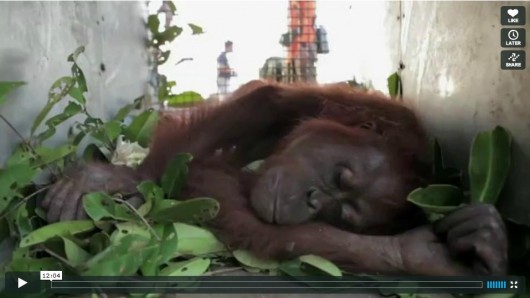 . .
Notes:
.
1. The Environmental Investigation Agency (EIA) is a UK-based Non Governmental Organisation and charitable trust (registered charity number 1145359) that investigates and campaigns against a wide range of environmental crimes, including:
- illegal wildlife trade
- illegal logging
- hazardous waste
- trade in climate and ozone-altering chemicals.
.
2. RSPO Criterion 7.3 dictates that new plantings since November 2005 cannot replace any areas required to maintain or enhance one or more High Conservation Value. This includes “Forest areas containing globally, regionally or nationally significant concentrations of biodiversity values (e.g. endemism, endangered species).”
• To view the footage of the rescue go to ^https://vimeo.com/63254306
• For further photos of the rescued orangutans please contact Tom Johnson at tomaszjohnson@eia-international.org
• Interviews are available on request: please contact Karmele Llano Sanchez (IARI) at karmele@internationalanimalrescue.org or Tom Johnson (EIA) at tomaszjohnson@eia-international.org
• Caption for attached picture: An adult female orangutan who was rescued with her baby by IAR Indonesia in Ketapang, March 2013.
.
[Source: ‘Conservationists urge RSPO member to cease rainforest destruction after starving orangutans rescued from concession’, 20130404, Environmental Investigation Agency on behalf of International Animal Rescue, West Kalimantan (Borneo) Indonesia]
.
HSBC loans $135 million to Bumitama Gunajaya Agro (BGA) Group
.
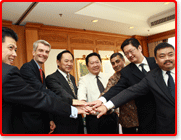 . .
<<DBS Indonesia and HSBC (Hongkong and Shanghai Banking Corporation) together with its syndication banks have completed the final process of Syndicated Term Loan Facility for Bumitama Gunajaya Agro (BGA) Group. Due to the oversubscribed participation, the final loan amount provided for the facility has been upsized to USD 135 million from the original amount of USD 110 million.>>
[Source: ^http://www.hsbc.co.id/1/2/misc/media-release/21-oct-10]
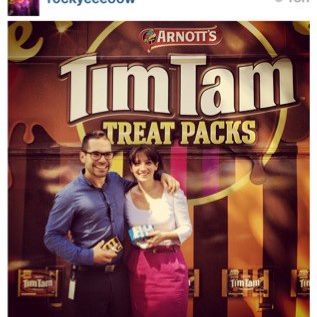 Arnott’s Tim Tam, proudly killing Orangutans
(it is one of Australia’s largest selling products that includes Palm Oil in its manufacture) Arnott’s Tim Tam, proudly killing Orangutans
(it is one of Australia’s largest selling products that includes Palm Oil in its manufacture)
.
<<Palm oil plantations are now the leading cause of rainforest destruction in Malaysia and Indonesia. In Southeast Asia alone the equivalent of 300 football fields are deforested every hour. At the current rate, experts believe Orang-utans will be extinct in the wild by 2013 (this year).
Palm oil and its derivatives are present in 50% of all packaged foods on our shelves. While 50% of products in Australian supermarkets contain Palm Oil, it is nearly impossible for consumers to be able to make an informed choice about which products to purchase. This is because under current food labelling laws, Palm Oil can be legally labelled as ‘Vegetable Oil’.
Australia’s current food regulations don’t require this truth in labelling.>>
.
[Source: ‘Food Labelling, ^http://www.nickxenophon.com.au/food-labelling]
.
.
Products blatantly continuing to include crude Palm Oil
.
Aldi Supermarkets
-Damora snack foods
-Belmont Biscuit co.
-GoldenVale cereals
-Dominion products
-Choceur chocolates
-Bramwells
-Sprinters chips
-Brookdale
-Milfina ice-cream
.
Arnott’s Biscuits
-Shapes (AP)
-Shapes Sensations (AP)
-Tim-Tams (AP)
-Wagon Wheels
-Mint Slice biscuit
-Royals
-Classic assorted
-Venetian
-Lemon Crisp
-Raspberry shortcake
-Arnott’s cookies
-Tiny Teddies
-Jatz Clix biscuits (savoury)
.
Coles Supermarkets (Coles brand range)
-“You’ll Love Coles” range (ice-cream, garlic bread, milk chocolate etc.)
-$mart Buy
-Coles Pastries: Donuts, Biscuits, Cakes, Muffins & Scrolls (AP)
.
Colgate-Palmolive
-Shampoos (AP)
-Conditioners (AP)
-Body wash (AP)
-Soaps (AP)
-Liquid hand-soap (AP)
-Shower gel (AP)
.
Colgate
-Toothpastes (AP)
-Mouthwash
-Shaving cream
.
Fonterra dairy products
-Dairy Milk
Anchor (Fonterra brand)
-Blue top milk
-Cheese singles
-Butter
Mainland cheeses (Fonterra brand)
-Edam cheese
-Colby cheese
-Tasty cheese
-Mild cheese
-Special reserve cheese range (AP)
.
Tip Top ice-creams (Fonterra brand)
-Joy Bar
-Soft serve
-Ice-creams in tub (AP)
-Ice-creams on cone (AP)
-Ice-creams on stick (AP)
.
General Mills
-Old El Paso tacos, dips, salsas & tortillas (AP)
-Betty Crocker products (AP)
-Cheerios breakfast cereal
-Nature Valley granola bars
-Fruit roll-ups
-Latina Pasta (AP)
.
Olay (owned by General Mills)
-Most cosmetics
.
Kraft
-Easy Mac
-Deluxe macaroni and cheese
-Peanut Butter
-Velveeta
-Cool Whip cream
.
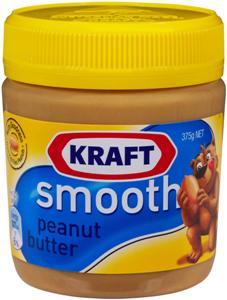
.
Nabisco (owned by Kraft)
-Oreos (AP)
-Ritz Crackers
-Chips Ahoy! (biscuits)
-Wheat Thins
.
Heinz
.
-Beans
-Spaghetti
-Sauces & dressings
-Soups (AP)
-Frozen meals
-Desserts (AP)
-Wattie’s canned snack foods (AP)
-Weight watchers products
.
 . .
Mars Incorporated
.

.
-M&Ms
-Snickers
-Mars Bars
-Milky Way
-Twix
-Bounty
-Maltesers
-Doublemint
-Dove
.
Wrigley’s (owned by Mars)
-5 gum (AP)
-Extra gum (AP)
-Juicy Fruit gum (AP)
-Starburst lollies
-Skittles lollies
-Hubba Bubba bubble gum (AP)
-P.K. chewing gum (AP)
.
Mars Petcare
-Pedigree
-My Dog
-Dine
-Kitekat
-Optimum
-Schmakos
-Advance
-Whiskas
-Royal Canin
.
Sara-Lee
-Bavarians
-Cakes & cheesecakes (AP)
-Chocolate Pies & Fruit Pies
-Croissants & Danishes (AP)
-Crumbles & Puddings
-Ice Creams (AP)
-Lasagna
-Quiches (AP)
.
Snack Brands Australia
-Cheezels
-Samboy chips (AP)
-CC’s corn chips
-Thins chips (AP)
-French Fries
-Chickadees
-Colvan chips
.
Uncle Tobys
.
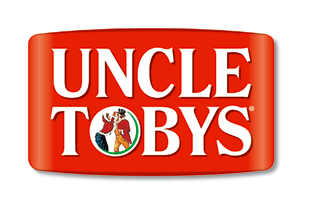 . .
-Fruit Breaks bars (AP)
-Chewy bars (AP)
-Bodywise bars
-Le Snak
-Roll Ups
.
‘AP’ = All products. Palm oil is found in all products or flavours of this specific brand. Example – palm oil is found in all flavours of Arnott’s Shapes: Plain, Chicken, Pizza, BBQ etc.
[Source: ^http://www.saynotopalmoil.com/]
.
“In 2008 Food Standards Australia and New Zealand (FSANZ) rejected an application for the compulsory labelling of Palm Oil, arguing that they have no legal capacity to hear the case.”
[Source: ^http://www.palmoilaction.org.au/shopping-guide.html]
.
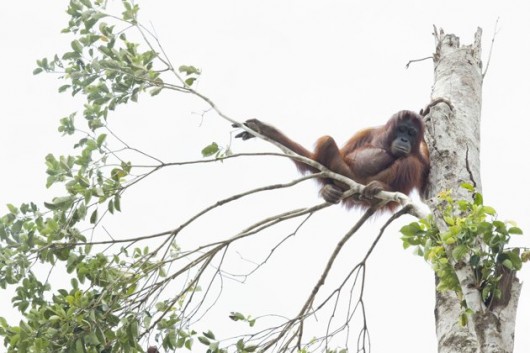 An adult orangutan looks down from its treetop home as the forest in Ketapang, Borneo, is bulldozed (Caters)
Source: ^http://uk.news.yahoo.com/orangutan-rescue-borneo–primates-deforestation-palm-oil-ketapang-mother-and-baby-104041487.html#tZX7oWc] An adult orangutan looks down from its treetop home as the forest in Ketapang, Borneo, is bulldozed (Caters)
Source: ^http://uk.news.yahoo.com/orangutan-rescue-borneo–primates-deforestation-palm-oil-ketapang-mother-and-baby-104041487.html#tZX7oWc]
.
Food Standards Australia New Zealand Board
.
Under the FSANZ Act, the FSANZ Board is selected by the Australian Minister for Health and Ageing in consultation with the Legislative and Governance Forum on Food Regulation and must include qualified people from all walks of life.
.
[Source: ^http://www.foodstandards.gov.au/scienceandeducation/aboutfsanz/theboard/, April 2013]
.
 |
|
Ms Philippa Smith AM [s.116(1)(a)]
Ms Philippa Smith, AM was appointed Chair of the FSANZ Board in July 2008. Ms Smith is a former Commonwealth Ombudsman, CEO of the Association of Superannuation Funds of Australia and the inaugural Chair of the Consumer’s Health Forum. She has developed strong strategic skills and extensive experience in ensuring effective accountability and governance structures across a number of portfolios. |
 |
|
Mr Steve McCutcheon (Chief Executive Officer) [s.116(1)(b)]
Mr McCutcheon, who holds a Bachelor of Economics degree and has undertaken further studies in public law and public policy, was appointed CEO of FSANZ in October 2007. Before his appointment, Mr McCutcheon held a number of senior executive positions in the Commonwealth Department of Agriculture, Fisheries and Forestry. During that time, he led the team that developed the new food regulatory framework for Australia and New Zealand under the auspices of the Council of Australian Governments. Mr McCutcheon also led the Australian delegation to annual sessions of the Codex Alimentarius Commission. |
 |
|
Dr Michele Allan [s.116(1)(f)]
Dr Michele Allan has strong leadership experience across many facets of the food industry. Her areas of expertise include manufacturing strategy, organisational strategy, risk and insurance leadership, food safety systems implementation, food packaging innovation and commercialisation. Dr Allan has held senior executive positions with Amcor Limited, Bonlac Foods, Bioinformatics Centre of Excellence Tasmania, Kraft Foods and ICI; and has also held board positions within both the private and public sectors. |
 |
|
Mr Peter Boyden [s.116(1)(g)]
Mr Peter Boyden is an internationally experienced CEO with extensive general management and marketing experience gained in consumer foods businesses in Australia, the United Kingdom, the Netherlands and Greece. Mr Boyden has been the Managing Director and regional Board member of the Unilever Australasian foods business and a Board member of the Australian Food and Grocery Council. His areas of responsibility have included the management of consumer marketing, product and packaging development, food production and general management, where he has focused on strategy development and portfolio management. |
 |
|
Professor Stephen Corbett [s.116(1)(f)]
Professor Stephen Corbett has had more than 20 years of experience as a public and environmental health physician, with qualifications in public health and medicine. His interests include environmental health risk assessment and management, regulatory policy and practice, and chronic disease prevention. Professor Corbett’s experience includes holding senior executive positions in NSW Health-Public Health; being Conjoint Associate Professor at the School of Public Health, University of Sydney and Western Clinical School, Westmead Hospital; and being Associate Editor on the journal Evolution, Medicine and Public Health. |
 |
|
Ms Jenni Mack [s.116(1)(d)]
Ms Jenni Mack has worked in consumer affairs since 1993 when she was Executive Director of the Australian Federation of Consumer Organisations. Her work has spanned food, chemicals, telecommunications, energy and financial services policy incorporating areas such as industry self-regulatory and co-regulatory practices, professional standards and codes of practice. Ms Mack has worked closely with regulators and government agencies on good regulatory science, community education, licensing, best practice enforcement and compliance schemes, and community and social research projects. |
 |
|
Dr Andrew McKenzie QSO [s.116(1)(c)]
Dr Andrew McKenzie is qualified as a veterinarian with post graduate qualifications in veterinary public health and has a background working for the New Zealand Ministry of Agriculture and Fisheries with a focus on the meat, seafood and other food industries. In 2002, Dr McKenzie set up the New Zealand Food Safety Authority and led it until his retirement in June 2010. He has extensive experience in domestic food safety policy and standards, as well as international food safety and trade standards at the bilateral and multilateral level. Dr McKenzie has a continuing interest in management and governance, as well as contemporary regulatory approaches to food safety/quality and trade, particularly around standard-setting. |
 |
|
Dr James (Gardner) Murray AO PSM [s.116(1)(f)]
Gardner Murray has veterinary medicine, surgery and management qualifications. Through his work in high level government positions and via his company—Gardner Murray Pty Ltd., Dr Murray has contributed to national and international developments in food safety, animal health, ‘One Health’ (collaboration between animal, human and environmental scientists and related disciplines to achieve optimal health), biosecurity, market access, emergency management, animal welfare, policy development and strategic planning. He has held and holds numerous high level Board, Commission and Committee positions at the national and international levels. |

|
|
Mr Tony Nowell CNZM [s.116(1A)]
Mr Tony Nowell has had extensive senior executive experience across various industries (including food) both internationally and within New Zealand. This has included holding positions such as CEO of Zespri International; Managing Director of Griffin’s Foods; Regional Vice President of Sara Lee Asia; Zone Manager for Sara Lee Indonesia, Philippines and Thailand; Managing Director of Sara Lee Indonesia; Managing Director of L’Oreal Indonesia; and Operations Manager of L’Oreal New Zealand. Mr Nowell’s other roles and responsibilities have included being the former Chair of the New Zealand Packaging Accord Governing Board and the New Zealand Government Food and Beverage Taskforce; and include Chairmanship of the New Zealand Forest Research Institute and Wellington Drive Technologies, as well as directorships at New Zealand Food Innovation Auckland and the Export Advisory Board of Business New Zealand. Mr Nowell has represented New Zealand as a member of the APEC Business Advisory Council since 2007. |
 |
|
Dr David Roberts [s.116(1)(g)]
Dr David Roberts is a food and nutrition Consultant with extensive experience in health and science. He has expertise in public health, food science, food allergy, human nutrition, food safety, food industry, food processing/retail, government and regulation. Dr Roberts was the Deputy CEO and scientific and technical Director of the Australian Food and Grocery Council for 5 years until October 2007. Prior to that, he had held the Foundation Chair in Nutrition and Dietetics (established 1991) at the University of Newcastle for 10 years. Dr Roberts was at Sydney University for 12 years teaching and researching in nutritional biochemistry. He is a former Chair of the Federation of Australasian Nutrition Organisations, former President of the Nutrition Society of Australia (3 years), former Chair of the NSW Branch of AIFST (1 year), former Chair of the inaugural Complementary Medicines Evaluation Committee of the Therapeutic Goods Administration (4 years) and former member of the editorial board of the British nutrition foundation (10 years+). |
 |
|
Mr Neil Walker JP [s.116(1)(ca)]
Mr Neil Walker is a food scientist with 35 years of experience in the dairy industry in New Zealand. He is a fellow of both the Institute of Chemistry and the New Zealand Institute of Food Science and Technology (NZIFST); and was the Dairy Chair of the NZIFST. He has had experience as Chair, director, trustee and committee member in relation to public councils and authorities; private trusts; companies and organisations; and national, community, charitable and family entities. |
Tags: Bumitama Gunajaya Agro, Environmental Investigation Agency, Food Standards Australia and New Zealand, FSANZ, Gunung Palung National Park, International Animal Rescue Indonesia, orang-utan, orang-utan extinction, palm oil, palm oil plantations, Roundtable on Sustainable Palm Oil
Posted in Orang-utans, Threats from Deforestation, Threats from Farming | No Comments »
Add this post to Del.icio.us - Digg
Tuesday, March 27th, 2012
This article was initially written by Tigerquoll and published on CanDoBetter.net under the title ‘Selfish Murray River Rice Growers downstream continue to castrate the Snowy River‘ on 20100131
.
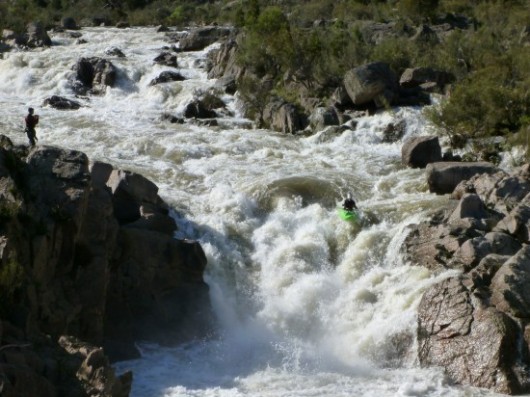 The Mighty Snowy The Mighty Snowy
Australia’s High Country
[Source: Adventure Pro, ^http://www.adventurepro.com.au/forums/yabbfiles/Attachments/phpePMK2XAM.jpg]
.
‘What does the Snowy River mean to Australians?
To many ancestral Australians, particularly Eastern Victorians, ‘The Snowy’ is a legendary, wild river.
To the traditional Ngarigo, Walgalu and Southern Ngunnawal people – who asked their opinion, requested their approval?
Would traditional owner’s approval been given? Likely, if open and honest, no bloody way!
The Snowy represents the untamed heart and soul of Australia’s cold frontier High Country
It is a mighty, wild river demanding respect.
But in 1950s Australia, when the colonist Government built its Hydro Scheme, it set out with disrespect to castrate this thundering stallion of a river down to a humiliating prostate trickle.’
~ Ed.

.
Our (stolen) Snowy River, reduced to a trickle
.
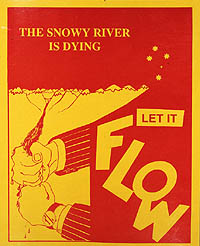 . .
“Gone are the days
When the Snowy was a river not just a creek.
When the snow water flushed out the entire river.
When the river was deep enough to take large sized boats and ships.
When as a youngster I had picnics on the Curlip paddle-steamer up and down the Snowy River.
When the river bank had several landings to load and unload goods and produce.
When the entrance was deep enough to be safe for all who wished to use it.
The Snowy is just like a ship that has run aground.
Both are no longer able to do what was required of them.
Having lived in Orbost – Marlo all my life
It’s a sad sight to see our Snowy water vanish over the hills to the other side.”
~ bush poem by W. B. Dreverman, born Orbost 12-1-1910.
.PS. I have worked in Orbost all my life; moved from Orbost to Marlo during 1965; now retired; my wife and I enjoy looking at the ocean and the Snowy when the tide comes in. During our lives we have seen the Snowy change from a beautiful river to a sandy bottom creek.
.
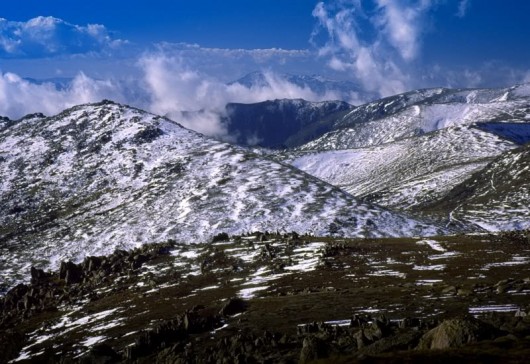 Kosciusko Main Range above the source of the Snowy River
[Source: ^http://forum.weatherzone.com.au/ubbthreads.php/topics/1095133/154] Kosciusko Main Range above the source of the Snowy River
[Source: ^http://forum.weatherzone.com.au/ubbthreads.php/topics/1095133/154]
.
Account by Charlie Robertson, born in 1919 at Dalgety:
.
“I lived one kilometre from the Snowy River for most of my life.
We could always hear the Snowy singing from home. That is how I used to describe the sound of the river. It used to be quieter in the summer. Now we don’t hear it at all. You wouldn’t know there was a river there now. It was a clear river most of the time, 99 per cent pure. It’s hard water now. Before it was soft.
The river had a gravelly sandy bed with rocks and boulders but they’re overgrown now and you can’t see them. During the spring thaw it used to flow for three months at least in a good strong flow, bank to bank. The level used to be up into the first ring on the pylon for that period.”
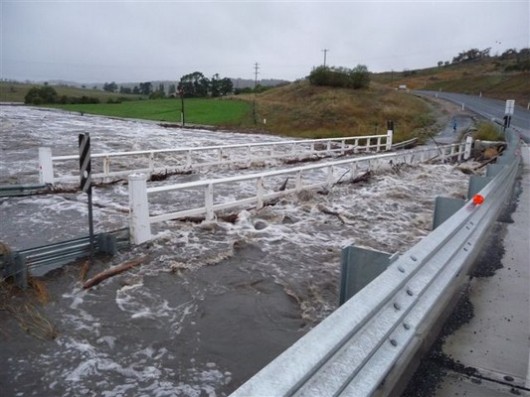
…It was a very popular river for fishing. You could see the fish from the bridge. You could just about get to the river anywhere you wanted with some exceptions. Now you can hardly get to it for the weeds, willows and blackberries.
When the river was dammed there was nothing to fish. There was no fish in the dams just after they were built. I have been up there and it doesn’t interest me at all, especially when you’ve spent much of your life fishing the river. It’s a different kind of fishing all together. I used to fish at night for native fish.
They are all gone now. I gave up fishing when they dammed the river. “
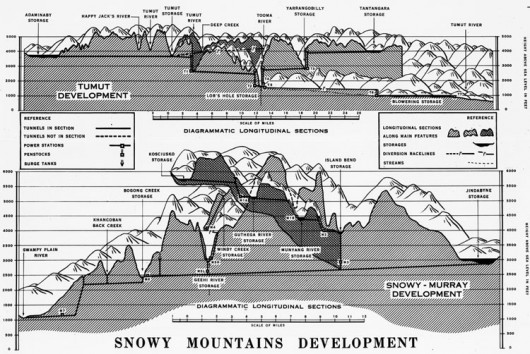
The Snowy Mountains Hydro-Electric Scheme is the most complex, multi-purpose, multi-reservoir hydro scheme in the world with 80 kilometres of aqueducts, 140 kilometres of tunnels, 16 large dams and seven power stations, two of which are underground. The project was drievn by then Labor Prime Minister Ben Chifley. It commenced under an Act of Federal Parliament in October 1949 with the goal of diverting the Murrumbidgee, Snowy and Tumut Rivers in south western NSW essentially to provide irrigation water for the western side of the Great Dividing Range, and in the process generate hydro-electric power. This irrigation facilitated settlement of mass immigration.
.
Account by Pip Cogan, born in 1913 at Dalgety and resident 85 years, a grazier:
.
“The Snowy River was part of my life until it was dammed.
I had fished the river since I was a young fellow action against the NSW Government for failing to honour a five-year review of the Snowy Hydro Corporation’s water licence. The Alliance is arguing the legal provisions allowing the Mowamba water flow to be increased without compensationary payments.
It is clear from reading the Snowy Scientific Committee’s three reports so far that the Snowy upper reaches are sick, despite the $425 million agreement in 2002 by three governments to restore it. Sacrificed long ago to humanity’s needs for hydroelectricity and irrigation water for the Murray Darling food bowl, in drought the river has become so deprived of lusty water flow that its cobbles do not turn over. Its deep pools alienate life forms, forbiddingly hot on top and cold on the bottom.
Last month the scientific committee warned the NSW Government that the limited environmental flows allowed from Snowy Hydro dams provide mere ”life support” for plants and animals in the river.”
The continued demise of the magnificent Snowy River is attributed to the political influence of the long downstream self-interested rice growers, cotton growers and citrus and grape growers, all wholly artifically dependent on irrigation from the Murray River, fed by the Snowy River upstream.
But such exploitive irrigation-dependent industries have powerful political friends like the Australian Government Rural Industries Research and Dever the way that it was and it to look at it today is simply heartbreaking.”
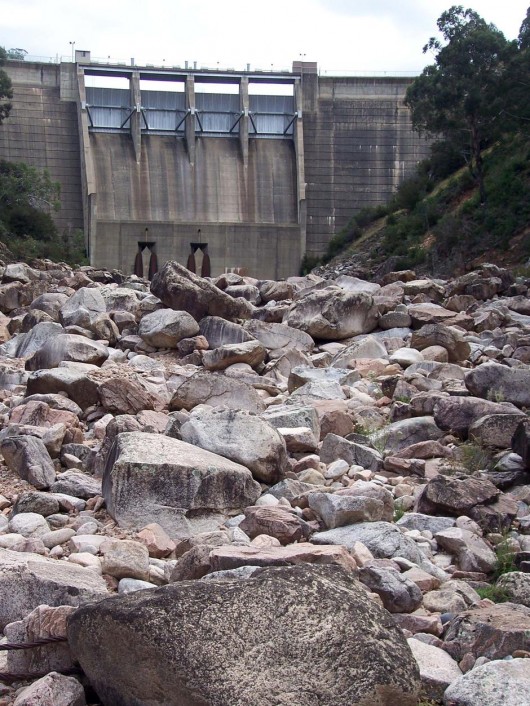 The Snowy River was dry as a bone at Island Bend Dam in February 2010.
(Snowy River Alliance: Louise Crisp)
The Snowy River was dry as a bone at Island Bend Dam in February 2010.
(Snowy River Alliance: Louise Crisp)
.
Account by Kevin Schaefer, born 1925 at Dalgety, resident for 73 years:
.
“The Snowy River was a real river.
In the spring the river flowed very strong after the snow melt. This strong flow existed for many months, usually from August to November. Whilst the spring was characterised by strong flows, the Snowy River could have heavy flows or flooding any time of the year. For example the biggest flood in my lifetime occurred in the summer of 1934.
All the mountain water came down here. The Snowy River’s water was clean and pure.
In fact when you drank it, you couldn’t get enough of it. I can remember the years between 1949 and 1956 as being particularly wet, with a peak in river flow in March 1950 when it flooded. The river could rise and fall all year round depending on the rainfall.
In my lifetime I never saw the river any where near as low as it has been since the damming. …I haven’t seen the platypus like I used to. You could see colonies of platypus along the river before.
Now you’re lucky to see one.”
.
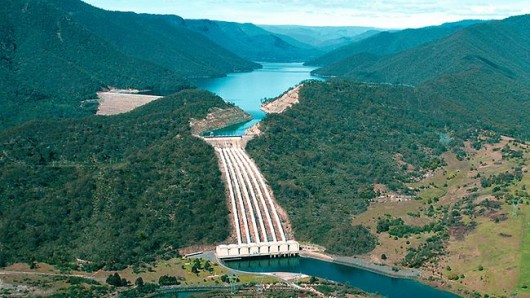 Talbingo Dam artificially flooded the Snowy River
(‘Tumut 3’ Power Station below) Talbingo Dam artificially flooded the Snowy River
(‘Tumut 3’ Power Station below)
.
The Snowy River Alliance down here in Victoria is right. Australia’s most famous wild river, the Snowy River, deserves to have its natural flows restored.
The Alliance argues that if the Hydro schemers release just a third of the Snowy’s original flows, its ecology could be restored. But the current life sucking 5% dished out by the Snowy Hydro Ltd corporation is exploitative, selfish and wrong.
The Snowy River Alliance, according to Glenice White of Orbost, deep in Victoria’s East Gippsland, started off back in 1971 as a reaction to the Snowy’s “pronounced signs of degradation“. This local community reaction culminated in the Snowy River Interstate Catchment Co-ordinating Committee Report, which outlined the problems of the river and its catchment and made a number of recommendations including that more water was required to improve the river’s ecology.
It soon became apparent to the Snowy River community that the Snowy Hydro was steering the river’s water to the irrigation agriculturalists down the Murray River, trying to artificially grow rice, citrus and grapes in an otherwise parched hot semi-arid climate.
.
Whereas the much hyped electricity generation in reality became a small part of the operation.
Instead of supplying 17% of the South Eastern Grid as the Snowy Mountains Hydro Electric Authority would want the public to believe,
it supplies only 4-5%.
.
The propaganda from the Authority is not only misleading but downright wrong.
Since the Snowy Mountains Hydro Electric Scheme of the 1950s, the choice of water allocation has always been political. The construction of the Jindabyne Dam in 1967 destroyed the 150 year old local community of Dalgety, which had the Snowy running wild through the town.
.
Dalgety’s fresh water supply was reduced to a token 1% flow!
The township of Dalgety has not recovered to this day.
The original townships of Adaminaby, Jindabyne and Talbingo were inundated by the Hydro Scheme.
These communities deserve not to be forgotten
Nor the millions of hectares of dismissed wildlife habitat, flooded for irrigation of exotic crops.
.
In 1996 a report commissioned and prepared by the NSW Department of Land and Water Conservation, Victorian Department of Natural Resources and Environment (now the Department of Sustainability and Environment) and the Snowy Mountains Hydro Electric Authority recommended that a minimum of 28% of the original flow that passed Jindabyne before the dams were built, be reinstated to the river.
A key perception problem is that Hydro industrialists argue that any water not piped to hydro-electricity or to fill dams is wasted water flow that just runs into the sea. These water industrialists reject the concept of ecological river flows as barbarian. Then recently, the Snowy River Alliance has flagged the opening of the Mowamba River which is a headwater tributary to the Snowy. Currently, it is captured by a weir where it is whipped away via an aqueduct to Lake Jindabyne.
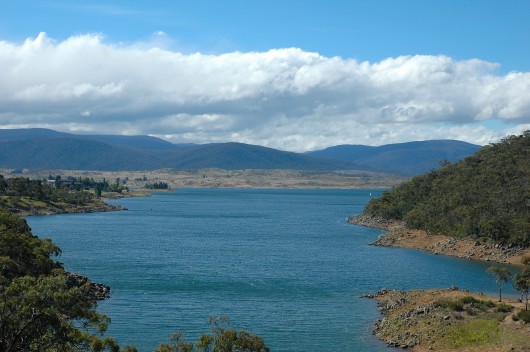 Lake Jindbyne is a flooded Snowy River Lake Jindbyne is a flooded Snowy River
.
An article, ‘Standoff over the Snowy’ by Debra Jopson, 30-Jan-10, (Fairfax media) has highlighted that the Snowy River Alliance plans legal action against the NSW Government for failing to honour a five-year review of the Snowy Hydro Corporation‘s water licence. The Alliance is arguing the legal provisions allowing the Mowamba water flow to be increased without compensationary payments.
It is clear from reading the Snowy Scientific Committee’s three reports so far that the Snowy upper reaches are sick, despite the $425 million agreement in 2002 by three governments to restore it.
Sacrificed long ago to humanity’s needs for hydroelectricity and irrigation water for the Murray Darling food bowl, in drought the river has become so deprived of lusty water flow that its cobbles do not turn over. Its deep pools alienate life forms, forbiddingly hot on top and cold on the bottom. Last month the scientific committee warned the NSW Government that the limited environmental flows allowed from Snowy Hydro dams provide mere ‘‘life support” for plants and animals in the river.
The continued demise of the magnificent Snowy River is attributed to the political influence of the long downstream self-interested rice growers, cotton growers and citrus and grape growers, all wholly artifically dependent on irrigation from the Murray River, fed by the Snowy River upstream.
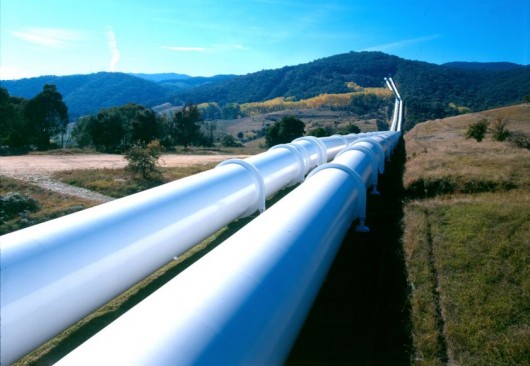 A diverted river A diverted river
.
But such exploitive irrigation-dependent industries have powerful political friends like:
- The Australian Government Rural Industries Research and Development Corporation
- The Australian Government Department of Agriculture, Fisheries and Forestry (whatever its latest political reincarnation)
- Ricegrowers Association of Australia
- SunRice
- Rabobank
- Wesfarmers Federation Insurance
- CopRice
- Rice Marketing Board of NSW
- Go Grains Health & Nutrition Ltd
- Coleambally Irrigation
- Goulburn-Murray Water
- Murray Irrigation Limited
- Snowy Hydro
- NSW Irrigators’ Council
- Snowy Mountains Engineering Corporation
- The Kondinin (agricultural) Group
- Cotton Australia
- NSW Farmers’ Association
- National Farmers’ Federation
- The Australian Rural Leadership Program
- amongst others.
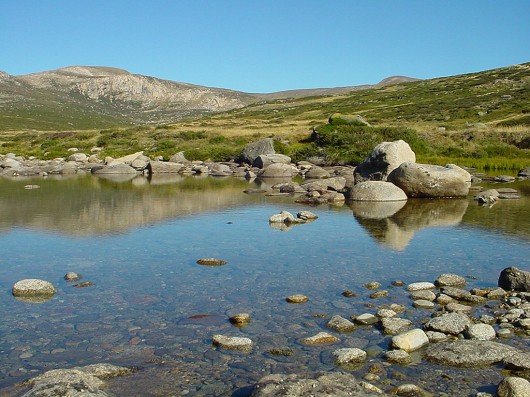 Upper reaches of The Snowy Upper reaches of The Snowy
.
‘Dairy industry is a big environmental burden’
(comment by Milly on CanDoBetter.net, 20100131):
.
Dairy exports make Australia one of the world’s largest exporter of virtual water, despite it being one of the driest continents on the planet! Dairy production takes place in all states, but it is particularly significant in Victoria, where more than 60 per cent of all dairy farming enterprises are located. The number of dairy farms has declined steadily over recent decades, but the industry is trending towards larger and intensive farming.
Approximately 569 GL/year is transferred across from the Snowy River Basin and released to the Murray River upstream of Hume Reservoir. Fifty percent of this water is allocated to the Victorian River Murray diverters. The other fifty percent is allocated to New South Wales. Dairying is the heaviest user of irrigated water, often requiring irrigated pasture.
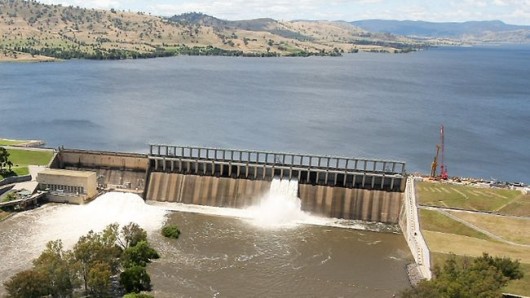 Hume Weir
..dammed and flooded the Murray and Mitta Rivers to create artificial Lake Hume for irrigation farming. Hume Weir
..dammed and flooded the Murray and Mitta Rivers to create artificial Lake Hume for irrigation farming.
.
Constructed over a 17-year period from 28 November 1919 to 1936 with a workforce of thousands, a branch siding from the Wodonga – Cudgewa railway was built to supply materials. It was extended during the 1950s, and completed in 1961, necessitating the wholesale removal of Tallangatta township and its re-establishment at a new site eight kilometres west of the original, as well as railway and road diversions.
In 2007 Japanese beverage giant Kirin acquired dairy processor National Foods for $2.8 billion. The emergence of large multi-national companies as significant players in the Australian dairy industry was forcing producers to bulk up to larger farms. Dairy Australia’s managing director Mike Ginnivan said the industry would remain a major user of water in the Murray Darling Basin for at least the next 10 years and would necessitate continued improvements in water use efficiency. By banning the export of dairy products and reducing our own consumption we may have a chance to save our ailing river systems!
 Close to the source of the Snowy River
[Source: ^http://unauthorised.org/ronni/bioregion/rivers.html]
. Close to the source of the Snowy River
[Source: ^http://unauthorised.org/ronni/bioregion/rivers.html]
.
‘The Snowy Hydro Con – it was all about mass irrigation and mass immigration’
.
Since Australia’s Gold boom and the exponential immigration growth it attracted, European colonists had dreamed of controlling the seasonally flooding rivers of the ranges along eastern Australia into dams, in order to provide reliable irrigation to harvest inland plains for agriculture and resist Australia’s periodic long droughts – i.e. provide for ‘drought security‘.
The wild Snowy River was long regarded by many European colonists as a wasted resource, because it flowed to the sea through country that was already well watered. Proposals to divert the river for irrigation and power generation were presented from as early as the 1880s but it was not until the 1940s that the necessary resources and technological capacity were realised with the Snowy Mountains Scheme.
In 1949, the Chifley Labor Government was enraptured with its post-War ‘populate or perish‘ mantra. It embarked on Australia’s greatest immigration scheme and channelled 100,000 migrant jobs into building the Snowy Mountains Hydro Scheme and designated the Riverina Region to mass agricultural settlement and production. The Government decided to dam the snow-fed headwaters of the east flowing Snowy River and divert them into the Murray River, which heads west through farmland along the NSW-Victoria border.
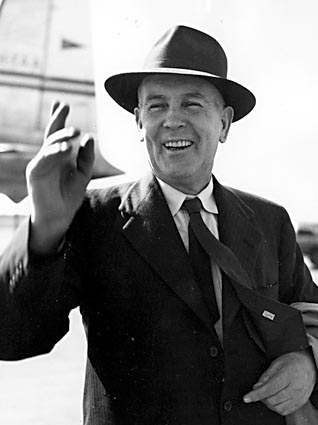 Labor Prime Minister Ben Chifley (1945-49) Labor Prime Minister Ben Chifley (1945-49)
.
Construction started on 17 October 1949, when the Governor General Sir William McKell, Prime Minister Ben Chiffley and the Scheme’s first Commissioner, Sir William Hudson, fired the first blast at Adaminaby. The Snowy River was finally dammed twice: first at its headwaters at Island Bend in 1965, and again downstream at Jindabyne in 1967.
After Lake Jindabyne was created, 99% of the river’s water was retained and diverted for power generation and irrigation.
The Chifley Labor Government promised the Snowy Hydro Scheme would deliver ‘cheap hydro-electric power‘ but when completed in 1974, the Snowy Mountains Scheme had cost $1.16 Billion (Ed: equivalent to perhaps $5 Billion in 2012 money – ^http://www.dollartimes.com/calculators/inflation.htm).
[Source: ^http://www.powerhousemuseum.com/australia_innovates/?behaviour=view_article&Section_id=1020&article_id=10047]
.
The Snowy Mountains Hydro Scheme (since abbreviated to ‘Snowy Hydro‘) consists of 16 major dams; 7 power stations; a pumping station; and 225 kilometres of tunnels, pipelines and aqueducts in the high country of New South Wales and Victoria .
The amount of electricity Snowy Hydro generates has always depended upon winter rains and mountain snow falls. So, in times of drought, hydro output drops significantly. Snowy Hydro is dependent upon how much snow falls on the Australian Alps, and therefore how much water goes into predominantly lakes Eucumbene and Jindabyne. In 2004-05, Snowy Hydro’s output was just 4,388 GWh (13.5% capacity) during a time of prolonged drought.
[Source: ‘Why Snowy prefers to keep its water’, by Alan Kohler, 20060524, ^http://www.smh.com.au/news/business/why-snowy-prefers-to-keep-its-water/2006/05/23/1148150255347.html]
.
As at 20111128, NSW hydro-electric power stations include four in the Snowy Scheme plus one at Shoalhaven and another at Warragamba:
- Blowering (Snowy Hydro) 80 MW
- Guthega (Snowy Hydro) 60 MW
- Murray (Snowy Hydro) 1500 MW
- Tumut (Snowy Hydro) 2116 MW
- Shoalhaven (Eraring Energy) 240 MW
- Warragamba (Eraring Energy) 50 MW
.
[Source: ‘Electricity generation’, NSW Government, ^http://www.trade.nsw.gov.au/energy/electricity/generation]
.
Of the current 18,000 megawatts (MW) of installed electricity generation capacity of New South Wales, Snowy Hydro provides about 20% of NSW electricity, mainly to supply the additional power needed in morning and evening peak use. Victoria’s hydroelectricity is sourced from the state’s major dams, including Lake Eildon, Hume and Dartmouth. Overall, Snowy Hydro provides 17% of the electricity for south-eastern Australia and 5% of Australia’s total electricity generation (2007-08).
[Source: ‘Hydroelectricity’, Victorian Government, ^http://www.dpi.vic.gov.au/energy/sustainable-energy/hydroelectricity]
.
 Tumut Pond Dam at Cabramurra Tumut Pond Dam at Cabramurra
.
The Snowy Mountains Scheme diverted and stopped the natural flows of major rivers including the Snowy and Tumut rivers. It caused irrevocable damage to a natural cherished landscape. It created the Murray Irrigation Area and the Murrumbidgee Irrigation Area which have collectively since been referred to as the Riverina, sustaining dozens of agricultural communities. In 1968 an entire town, Coleambally, was created as a result of the new flow of water. Main cropping includes stone fruit, grain, and rice.
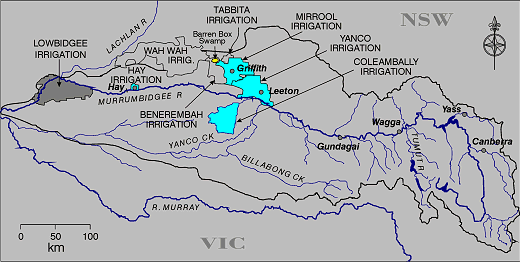 Murrumbidgee River Catchment
[Source: ^http://www.kathleenbowmer.com.au/pubs/fenner030531.htm] Murrumbidgee River Catchment
[Source: ^http://www.kathleenbowmer.com.au/pubs/fenner030531.htm]
.
Over the decades, deforestation and excessive irrigation of the region has raised the salt table and caused extensive to dry land salinity, undermining the viability of irrigated cropping.
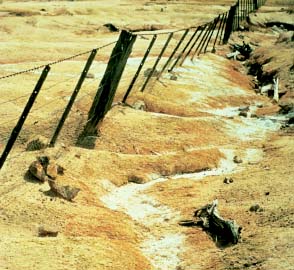 Dry Land Salinity
..caused by clearfell deforestation and excessive irrigation Dry Land Salinity
..caused by clearfell deforestation and excessive irrigation
.
‘Beautiful memory of The Snowy’
Comment by ‘Quark’ on CanDoBetter.net, 20100131:
.
In 1975 I visited the Snowy with friends and camped in the area.
I remember swimming in the river. The water was about 1.5 metres deep, very clear with smooth white pebbles and rocks on the bottom. It was so clean and soft that I was drinking it as I swam and I remember thinking that my immersion in this element at that moment was sheer perfection. There was no-one else around.
This post dates the damming of the river but maybe they had let more water through and the irrigation demands were less than they are now.
More than a decade before when I was at school, one of our prescribed books was “Above the snow line”- a novel about the Snowy project and the immigrant workers. That was my introduction to this feat of engineering. I don’t recall the environmental impacts ever being discussed in class.
The following year my parents took me up to see the Snowy project on a guided motoring tour – I recall high dam walls turbines and things which meant little to me. I wouldn’t have known what had been lost in the creation of this scheme. I still have coloured photographs (slides) of this trip.
It was 1962.
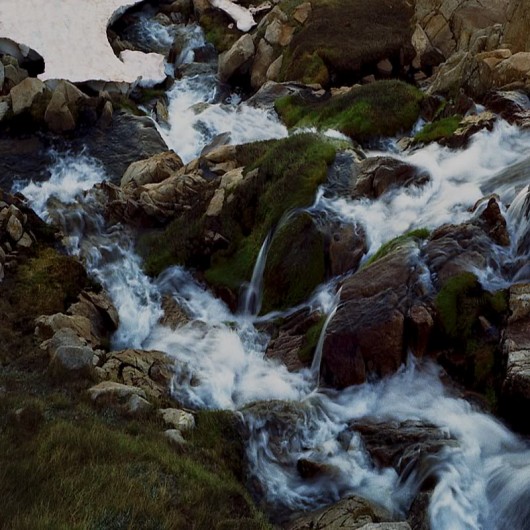 Snowy River
[Source: ^http://forum.weatherzone.com.au/ubbthreads.php/topics/1095133/154] Snowy River
[Source: ^http://forum.weatherzone.com.au/ubbthreads.php/topics/1095133/154]
.
‘Bugger the bush mentality’
Comment by Tigerquoll on CanDoBetter.net, 20100201:
.
Thanks Milly & Quark for your feedback.
Agriculture that profits from robbing resources (like potable water) from one region is inequitable. The Murray Valley, Riverina and Murray Darling irrigation regions are robbing Australia’s Alpine region of its water for artificial agriculture that is out of synch with its climate and so wholly dependent on artificial resources – water, fertilizer insecticides and GM.
It is State-sanctioned river theft underwritten by corrupt cronyism where politicians meter out favours to influential lobbyists that justify their claim on providing Australian export revenue and jobs – be it drought rice growers, drought citrus growers, drought orchards, drought dairy farmers. And then they give us the dust storms as their topsoil is eroded. Why do we need so much milk, cheese and yoghurt on our supermarket shelves anyway? The supply is excessive to the extent that it is exported, so our primary industry policy has us ruining the Australian environment (river depletion, irrigation salinity/acidification) for export revenue. Primary Industry policy clearly has ripped up Triple Bottom Line accountability.
In 1975, I visited the Snowy with friends and camped in the area. I remember swimming in the river. The water was about 1.5 metres deep, very clear with smooth white pebbles and rocks on the bottom. It was so clean and soft that I was drinking it as I swam and I remember thinking that my immersion in this element at that moment was sheer perfection. There was no-one else around.
Spring Street will argue the food bowl utilitarian justification that river water from the bush is needed to feed the urban millions swelling from more arriving at Tullamarine like ants out of a nest. Only the human test is applied to resource allocation. The locals in the bush are ignored because the millions of votes are increasingly in the cities.
Quark, traditional Australian values like fresh stream water have been forgotten in urbane Australia. Melbourne’s water used to be the best. Now it is metallic with all the additives. Now they are ruining the Wonthaggi region and buggering its locals to cater for a desal plant for monstrous Melbourne.
The Snowy Scheme history should be re-written from the point of view of the promises versus the outcomes, and from the point of view of the benefits with the costs, and from the point of view of the national economy versus the local destruction.
.
Australian 1950s politicians just copied big brother America, to emulate its hydro ‘progress’.
.
Most of the employment went to immigrants. The sixteen dams were to provide irrigation to the Riverina and Murray-Goulburn to create a food bowl to feed a growing Melbourne and Sydney fuled by massive immigration. The turbine generated electricity was a secondary output. The seven power stations supply only 10% of the electricity for VIC and NSW, mush of which is lost over the hundreds of kilometres of transmission lines that have scarred many fragile ecosystems.
.
The justification that Hydro-electricity is clean, efficient and renewable energy is wrong.
The Snowy Hydro Scheme cost $820 million (‘billion’ in 2012 money) and destroyed vast river valleys.
.
Building a dam effectively decommissions a wild river and the ecosystems it supports. The environmental damage is irreversible. Irreversible damage is not clean and not renewable. The only renewable aspect of hydro is rain re-filling artificial dams. Rivers are a non-renewable resource and the classification of hydro as a “renewable” energy source is a misnomer.
It’s a bugger the bush mentality.
.
Tiger Quoll
Suggan Buggan
Snowy River Region
Victoria 3885
Australia
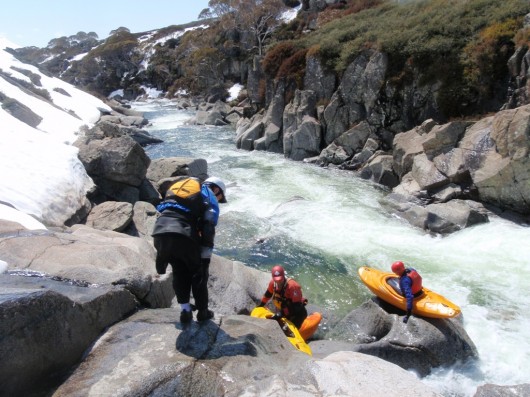
.
Further Reading:
.
[1] ‘ Oral history of the Snowy River‘, Snowy River Alliance, ^ http://www.snowyriveralliance.com.au/reports/snowy%20enquiry/chap2.html
.
[2] Snowy Water Enquiry 1998, ^ http://www.snowyhydro.com.au/levelTwo.asp?pageID=44&parentID=6
(Note: Link since deleted by Snowy Hydro – this is what it read:
‘The Snowy Water Inquiry was commissioned in 1998 with a brief to recommend environmental water release options to the Commonwealth, Victorian, and NSW Governments so that corporatisation of the Snowy Mountains Scheme could proceed. These release options related to the Snowy River below Jindabyne, the Murray River and other rivers associated with the Scheme. The Inquiry objectives were that the recommendations would not adversely impact on water supplies to existing irrigators or the viability of the Snowy Mountains Scheme.
The Commonwealth, Victorian and NSW governments will contribute $375 million over ten years to fund water-saving efficiency initiatives associated with the Murray and Murrumbidgee Irrigation Systems. These water-saving initiatives will subsequently reduce the amount of water to be released from the Scheme to the Murray and Murrumbidgee Rivers, thus allowing increased releases to the Snowy River below Jindabyne.
Environmental releases from the montane rivers will be equivalent to 150 GWh (gigawatt hours) of lost energy production from the Scheme each year. These releases are to be implemented at a similar rate to the releases to the Snowy River from Jindabyne. The combined impact of the Snowy, Murray and montane river releases will reduce generation from the Scheme by up to 540 GWh per year or an average of 11%.
Substantial outlet works have been built at Jindabyne and Tantangara Dams to allow for the environmental releases. Minor modifications to a number of aqueducts was also required to enable the environmental releases from the montane rivers to be implemented and measured.
Snowy Hydro is committed to the future of the Snowy Mountains Scheme and river health, while meeting the primary role of supplying renewable energy and water for irrigation.
Healthy rivers are vital to the Snowy Mountains Scheme for many reasons – our prosperity, our environment, our communities and our future depend on it.’
.
The Snowy Water Inquiry Outcomes Implementation Deed (SWIOID), ^www.water.nsw.gov.au [>Read Deed]
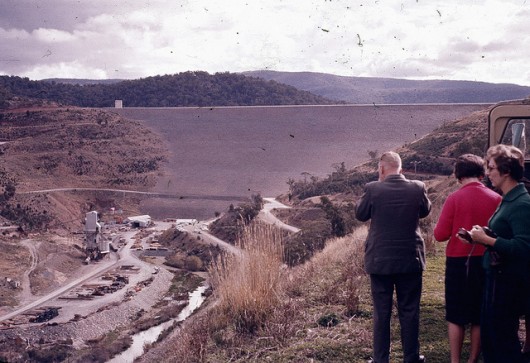
.
[3] Snowy River Alliance, ^http://www.snowyriveralliance.com.au/
.
[4] Man from Snowy River Museum, Corryong, Victoria’s High Country ^http://www.manfromsnowyrivermuseum.com/home/index.htm
.
[5] ‘Snowy River in dire straits‘, Australian Broadcasting Corporation (ABC), Broadcast: 20100401, Reporter: Emma Griffiths, ^http://www.abc.net.au/7.30/content/2010/s2863039.htm
.
‘The massive floodwaters flowing out of Queensland into western New South Wales have revitalised the parched Murray Darling Basin – but the ailing snowy river in southern New South Wales won’t see a drop.’
.
Transcript:
.
KERRY O’BRIEN, PRESENTER: The massive floodwaters flowing out of Queensland into Western New South Wales are in the process of revitalising parts of the parched Murray-Darling basin at least.
But the ailing Snowy River in southern New South Wales won’t see a drop. Its survival depends on water released from the massive Snowy Hydro system of dams, at the say-so of the New South Wales Government.
This past summer those flows have hit a high-water mark, with the biggest releases rushing down the Snowy since the hydro scheme was built in the 1960s. But conservation groups say it hasn’t made up for the years of political neglect and broken promises that they say have left the Snowy in dire straits.
.
Emma Griffiths reports.
JOHN GALLARD, SNOWY ALLIANCE: They said they were going to fix it. They haven’t fixed it.
SAM WILLIAMSON, BUSINESSMAN: We haven’t got a lot of water and everybody wants it, so who gets it? That is the fight at the moment isn’t it? Who gets the water?
EMMA GRIFFITHS, REPORTER: The Snowy River starts with a trickle in the highest of Australia’s High Country. Its tributaries form rocky creeks that gather in pace until they hit the massive system of dams and weirs that form the Snowy Hydro scheme, but this year the river has roared again.
JOHN GALLARD: We need a lot more flows like this to make the whole process worthwhile.
EMMA GRIFFITHS: John is a former park ranger. In retirement, the Snowy River has become his obsession.
JOHN GALLARD: It will make a little bit of a difference but it’s only a very small amount of water by comparison with what is needed.
EMMA GRIFFITHS: For two days this year the water has burst free of Jindabyne Dam.
In the biggest release since the Snowy scheme was built, 870 megalitres each day have flowed down the river. The extraordinary release was prompted by dire scientific warnings that isolated pools downstream were in danger of becoming stagnant.
JOHN GALLARD: It would be beautiful to have it every day but I don’t think there is any likelihood of that happening in the near future.
EMMA GRIFFITHS: Those who want to protect the river thought they had already fought the battle to save the Snowy and won.
Eight years ago the Commonwealth, along with Victoria and New South Wales, promised to let more water flow down the river purely for environmental reasons. But since then, the activists say, that promise has been forgotten and the Snowy is in worse trouble than ever.
JOHN GALLARD: You’ve got sections of river up there now that are totally dry for a major part of the season.
EMMA GRIFFITHS: Back in 2002 the governments in charge of the Snowy made a major political announcement. They closed the weir on one of the river’s main tributaries, the Mowamba. With much fanfare, then Premiers Bob Carr and Steve Bracks donned waders, unveiled a plaque and inspected the outcome of their decision – freely flowing water.
But three years later the weir was back in operation. The authorities say that was always the plan and now the river is again but a dribble.
JOHN GALLARD: Everybody thought it was going to be gone forever and we were going to have a free flowing river eventually. So you know, we are back to square one.
EMMA GRIFFITHS: One man who was there that day had doubts from the start.
SAM WILLIAMSON: I think eight years ago they were probably dreaming that it may rain, that we might have record snow falls. Maybe it was worth the promise, maybe not.
EMMA GRIFFITHS: Steve Williamson has been casting a line into the waters of the Snowy Mountains for more than 35 years and he has built successful fishing business out of the hobby he loves.
He doesn’t blame the politicians for the river’s woes. He doesn’t blame the Snowy Hydro. For him, the culprit is the drought.
SAM WILLIAMSON: There is only so much water in the glass and everybody wants – needs to learn to share it.
PHILIP COSTA, NSW WATER MINISTER: The best solution is for it to rain then we will all be very happy. It will certainly make my job a lot easier.
EMMA GRIFFITHS: As the New South Wales Water Minister, Philip Costa is the man largely responsible for determining who gets what out of the Snowy River system.
PHILIP COSTA: Some critics sometimes don’t accept the fact that we are in a drought. We are in a very severe drought. The drought has been around for some time now and what we have been doing is we have been putting water – as is the case now – down through the system when we can. When we have the available water.
EMMA GRIFFITHS: That political pledge eight years ago also centred on a commitment to increase the Snowy’s water allocation to 15 per cent of its original flows by this year. But the reality has fallen far short.
We’re getting 4 per cent – that’s all we are getting. That’s all we’ve got for 7 years since they have made the first environmental releases.
Unfortunately all of the agreements that they’ve made, we’ve found out are non-binding agreements.
PHILIP COSTA: We haven’t met what all the expectations might be simply because there isn’t enough water but we have delivered water to all of those discrete users and we do levit (phonetic) it in an equitable way. No one is getting more water than their share.
EMMA GRIFFITHS: The Murray River is a key beneficiary of the Snowy Hydro Scheme and those on the Eastern fall can’t help feeling short changed.
JOHN GALLARD: They’ve forgotten about the Snowy and now they’re saying to everybody they’re going to fix the Murray Darling system.
My comments are, this was the litmus test. They haven’t fixed this one, how are they possibly going to fix the Murray Darling system? They couldn’t even get the Snowy right.
EMMA GRIFFITHS: The Snowy River campaigners are determined to keep on fighting. But they have long ago recognised that even with more water and promised political action, they will never see the Snowy return to its glory days.
JOHN GALLARD: It’s a different river altogether. It’s a senile, old geriatric river now, whereas once it was very dynamic and quite dramatic. But it can be a relatively healthy river again and it can be much better than it is now.
EMMA GRIFFITHS: For some, the only solution is a hope shared Australia wide
SAM WILLIAMSON: The positive is it is going to rain one day, hopefully.
EMMA GRIFFITHS: And that’s what you are praying for?
SAM WILLIAMSON: We’re praying for it. That’d keep everybody happy.
KERRY O’BRIEN: That report from Emma Griffiths.
.
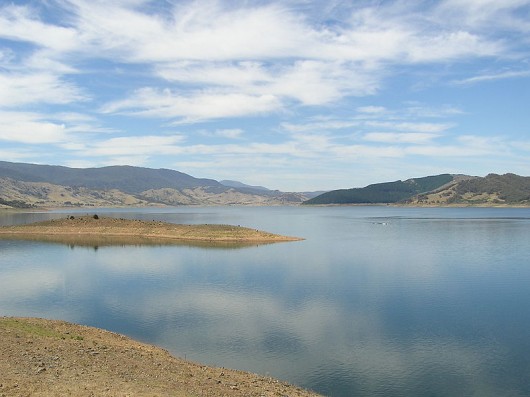 Blowering Dam of the Tumut River, New South Wales, part of the Snowy Mountains Scheme. Blowering Dam of the Tumut River, New South Wales, part of the Snowy Mountains Scheme.
Completed in 1968, the Blowering Dam holds 1,628,000 megalitres used for irrigation along the Murrumbidgee River, Yanco/Colombo/Billabong Creeks system, the Murrumbidgee Irrigation Area and the Colleambally Irrigation Area.
The Blowering Power Station delivers electricity generation capacity of just 80 megawatts (MW), which is 0.004% of the total electricity capacity of New South Wales (18,000 MW).
.
[6] ‘Snowy River back to a trickle – water turned off‘, Exploroz.com website, Comment submitted: Monday, Feb 20, 2006 at 16:46, by Member – Willie , Epping .Syd., ^http://www.exploroz.com/Forum/Topic/30970/SNOWY_RIVER_BACK_TO_A_TRICKLE_-_WATER_TURNED_OFF.aspx
.
‘The Sydney Morning Herald Feb 18-19 carried a full page article on the fact that the flow in the Snowy River in February dropped from 275 megalitres to 70 overnight when the Hydro Scheme diverted the water from the Mowamba River back into their dams .
The SMH says no one new this was going to happen , but after doing some research and going to the site , ^http://www.snowyriveralliance.com.au/newsletter.htm#3
it appears that at least the people in the Snowy River Alliance new about it and had been making submissions to the Government to stop the flow being redirected in February .
Does anybody know the real story behind this ? Putting water back into the Snowy is a great project and I would like to try and help them somehow .
Cheers ,
Willie .
.
[7] ‘Reflections of a River‘ – The Snowy River, ^http://www.thesnowyriver.com/
.
…”While most of the river runs through country that is largely uninhabited, the majority being protected by the Snowy River National Park, it’s flow was drastically reduced to less than 1% when the construction of The Snowy Mountains Hydro Electric Scheme was completed in the 1970′s.
Today the river is but a shallow of it’s former self.
It’s significance to Australian folk lore due to Banjo Patterson’s poem – The Man from Snowy River – establishes The Snowy River as a important part of our national identity.”
.
 The natural Snowy River
Circa 1890 The natural Snowy River
Circa 1890
.
[8] The making of a legend…
.
‘The Man from Snowy River’
by A.B. “Banjo” Paterson
.
There was movement at the station, for the word had passed around
That the colt from old Regret had got away,
And had joined the wild bush horses – he was worth a thousand pound,
So all the cracks had gathered to the fray.
All the tried and noted riders from the stations near and far
Had mustered at the homestead overnight,
For the bushmen love hard riding where the wild bush horses are,
And the stockhorse snuffs the battle with delight.
.
There was Harrison, who made his pile when Pardon won the cup,
The old man with his hair as white as snow;
But few could ride beside him when his blood was fairly up –
He would go wherever horse and man could go.
And Clancy of the Overflow came down to lend a hand,
No better horseman ever held the reins;
For never horse could throw him while the saddle girths would stand,
He learnt to ride while droving on the plains.
.
And one was there, a stripling on a small and weedy beast,
He was something like a racehorse undersized,
With a touch of Timor pony – three parts thoroughbred at least –
And such as are by mountain horsemen prized.
He was hard and tough and wiry – just the sort that won’t say die –
There was courage in his quick impatient tread;
And he bore the badge of gameness in his bright and fiery eye,
And the proud and lofty carriage of his head.
.
But still so slight and weedy, one would doubt his power to stay,
And the old man said, “That horse will never do
For a long a tiring gallop – lad, you’d better stop away,
Those hills are far too rough for such as you.”
So he waited sad and wistful – only Clancy stood his friend –
“I think we ought to let him come,” he said;
“I warrant he’ll be with us when he’s wanted at the end,
For both his horse and he are mountain bred.
.
“He hails from Snowy River, up by Kosciusko’s side,
Where the hills are twice as steep and twice as rough,
Where a horse’s hoofs strike firelight from the flint stones every stride,
The man that holds his own is good enough.
And the Snowy River riders on the mountains make their home,
Where the river runs those giant hills between;
I have seen full many horsemen since I first commenced to roam,
But nowhere yet such horsemen have I seen.”
.
So he went – they found the horses by the big mimosa clump –
They raced away towards the mountain’s brow,
And the old man gave his orders, “Boys, go at them from the jump,
No use to try for fancy riding now.
And, Clancy, you must wheel them, try and wheel them to the right.
Ride boldly, lad, and never fear the spills,
For never yet was rider that could keep the mob in sight,
If once they gain the shelter of those hills.”
.
So Clancy rode to wheel them – he was racing on the wing
Where the best and boldest riders take their place,
And he raced his stockhorse past them, and he made the ranges ring
With the stockwhip, as he met them face to face.
Then they halted for a moment, while he swung the dreaded lash,
But they saw their well-loved mountain full in view,
And they charged beneath the stockwhip with a sharp and sudden dash,
And off into the mountain scrub they flew.
.
Then fast the horsemen followed, where the gorges deep and black
Resounded to the thunder of their tread,
And the stockwhips woke the echoes, and they fiercely answered back
From cliffs and crags that beetled overhead.
And upward, ever upward, the wild horses held their way,
Where mountain ash and kurrajong grew wide;
And the old man muttered fiercely, “We may bid the mob good day,
No man can hold them down the other side.”
.
When they reached the mountain’s summit, even Clancy took a pull,
It well might make the boldest hold their breath,
The wild hop scrub grew thickly, and the hidden ground was full
Of wombat holes, and any slip was death.
But the man from Snowy River let the pony have his head,
And he swung his stockwhip round and gave a cheer,
And he raced him down the mountain like a torrent down its bed,
While the others stood and watched in very fear.
.
He sent the flint stones flying, but the pony kept his feet,
He cleared the fallen timber in his stride,
And the man from Snowy River never shifted in his seat –
It was grand to see that mountain horseman ride.
Through the stringybarks and saplings, on the rough and broken ground,
Down the hillside at a racing pace he went;
And he never drew the bridle till he landed safe and sound,
At the bottom of that terrible descent.
.
He was right among the horses as they climbed the further hill,
And the watchers on the mountain standing mute,
Saw him ply the stockwhip fiercely, he was right among them still,
As he raced across the clearing in pursuit.
Then they lost him for a moment, where two mountain gullies met
In the ranges, but a final glimpse reveals
On a dim and distant hillside the wild horses racing yet,
With the man from Snowy River at their heels.
.
And he ran them single-handed till their sides were white with foam.
He followed like a bloodhound on their track,
Till they halted cowed and beaten, then he turned their heads for home,
And alone and unassisted brought them back.
But his hardy mountain pony he could scarcely raise a trot,
He was blood from hip to shoulder from the spur;
But his pluck was still undaunted, and his courage fiery hot,
For never yet was mountain horse a cur.
.
And down by Kosciusko, where the pine-clad ridges raise
Their torn and rugged battlements on high,
Where the air is clear as crystal, and the white stars fairly blaze
At midnight in the cold and frosty sky,
And where around The Overflow the reed beds sweep and sway
To the breezes, and the rolling plains are wide,
The man from Snowy River is a household word today,
And the stockmen tell the story of his ride.
.
~ The Bulletin, 26 April 1890.
.
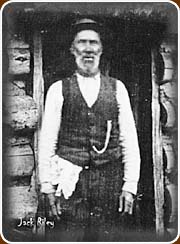 In memory of Jack Riley In memory of Jack Riley
.
Audio Readings of this magnificent pioneer poem:
.
[a] Australia’s Jack Thompson’s reading: ^ http://www.youtube.com/watch?v=oqyP3eKJ8p0
.
[b] Another reading: ^ http://www.youtube.com/watch?v=fs_-DKUimeo
.
Tags: Coleambally Irrigation, CopRice, Cotton Australia, Dalgety, Go Grains Health & Nutrition Ltd, Goulburn-Murray Water, Island Bend Dam, Jindabyne Dam, Murray Irrigation Limited, National Farmers’ Federation, NSW Farmers’ Association, NSW Irrigators’ Council, Rabobank, Rice Marketing Board of NSW, Ricegrowers Association of Australia, Snowy Hydro, Snowy Hydro Corporation, Snowy Hydro Scheme, Snowy Mountains Development, Snowy Mountains Engineering Corporation, Snowy Mountains Hydro Electric Authority, Snowy River, Snowy River Alliance, Snowy River Basin, SunRice, The Australian Rural Leadership Program, The Kondinin Group, The Man from Snowy River, Wesfarmers Federation Insurance
Posted in Gippsland (AU), Threats from Farming, Threats from Hydro and Dams | 4 Comments »
Add this post to Del.icio.us - Digg
Thursday, February 23rd, 2012
The following article is a press release by UK-based NGO, The Environmental Investigation Agency (EIA), of 20120124 entitled ‘Conservation on the Front Line – Muara Tae’s Last Stand Against Big Palm Oil’
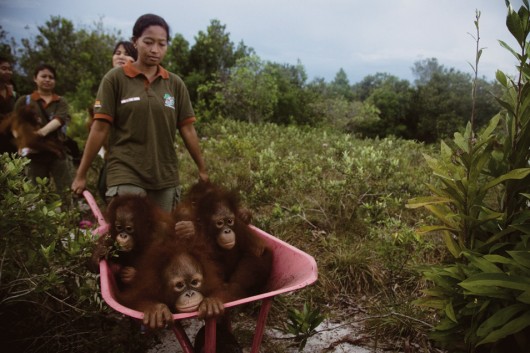 Their ancient rainforest home clearfelled for bloody Palm Oil,
now these Orang-utans are homeless in their own homeland
[Source: ^http://www.pdnphotooftheday.com/2010/05/4673]
(Click photo to enlarge) Their ancient rainforest home clearfelled for bloody Palm Oil,
now these Orang-utans are homeless in their own homeland
[Source: ^http://www.pdnphotooftheday.com/2010/05/4673]
(Click photo to enlarge)
.
MUARA TAE, EAST KALIMANTAN (Borneo, Indonesia):
The fate of a Dayak indigenous community, deep in the interior of East Kalimantan (Borneo) demonstrates how Indonesia must safeguard the rights of indigenous people if it is to meet ambitious targets to reduce emissions from deforestation.
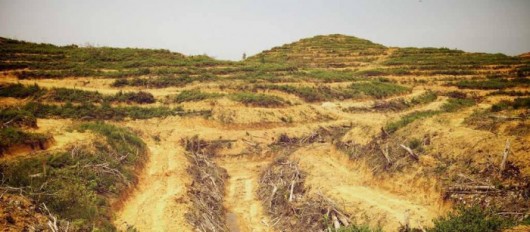 Cleared land at Muara Tae
(c) EIA/Telapak Cleared land at Muara Tae
(c) EIA/Telapak
.
The Dayak Benuaq of Muara Tae, in West Kutai Kabupaten (Indonesia), today face a two-pronged assault from palm oil companies aggressively expanding into their ancestral forests. Together with Indonesian NGO Telapak, the community is manning a forest outpost around the clock in a last ditch attempt to save it from destruction.
The London-based Environmental Investigation Agency (EIA) has witnessed at first-hand the Dayak Benuaq’s struggle, and how their sustainable use of forests could help Indonesia deliver on its ambitious targets to reduce greenhouse gas emissions.
EIA Forests Team Leader Faith Doherty said: “There are more than 800 families in Muara Tae relying on the forests for their food, water, medicine, culture and identity. Put simply, they have to keep this forest in order to survive.
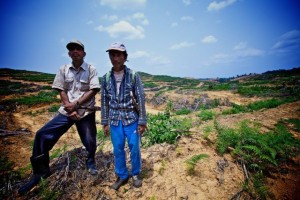 Villagers on cleared land at Muara Tae
(c) EIA/Telapak Villagers on cleared land at Muara Tae
(c) EIA/Telapak
.
“The rhetoric from the President of Indonesia on curbing emissions by reducing deforestation is strong but on the front line, where indigenous communities are putting their lives at risk to protect forests, action is sorely missing.
“Giving these communities, such as the Dayak Benuaq, the rights they deserve is a vital step to reduce catastrophic levels of deforestation in Indonesia.”
President Yudhoyono has pledged to reduce carbon emissions across the archipelago by 26 per cent by 2020 against a business-as-usual baseline, alongside delivering substantial economic growth.
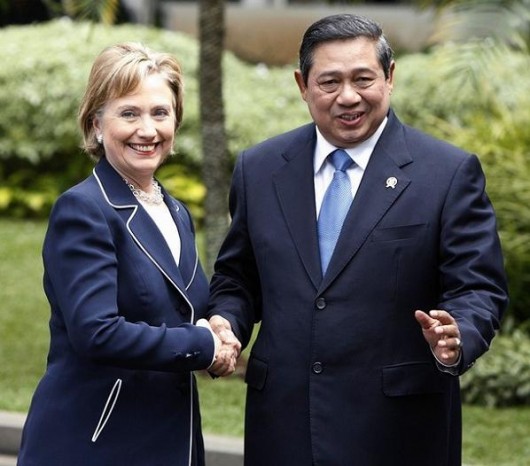 Self-serving bullshit artist
– take your pick Self-serving bullshit artist
– take your pick
.
Plantation expansion will inevitably be a significant element of growth, but it has historically been a major driver of emissions and it is widely acknowledged that in order avoid them, expansion must now be directed to ‘degraded’ lands.
As a result of weak spatial planning, however, the forests of Muara Tae are identified as ‘APL’, a designation meaning they are not part of the national forest area and are open to exploitation. The theft of indigenous forests also raises serious questions as to what form of ‘development’ these plantations offer.
In indigenous communities such as the Dayak Benuaq of Muara Tae, Indonesia has perhaps its most valuable forest resource. It is due to their sustainable methods, honed over generations, that the forest even remains.
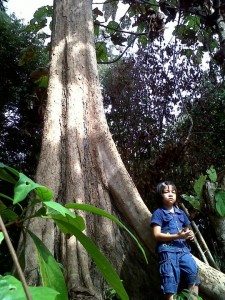 Benuaq girl and ncap payang tree
(c) EIA/Telapak Benuaq girl and ncap payang tree
(c) EIA/Telapak
.
Telapak president Ambrosius Ruwindrijarto said:
“Together with the community, we have not only been protecting the last forests but also planting new Ulin and Meranti saplings to enhance it. These people are the true guardians of the forest and their fate is entwined with it.”
Muara Tae has lost more than half of its land and forests during the past 20 years to mining companies. The impact has been tangible; the villagers’ water source has dried up and they must now routinely make a 1km journey to collect clean water.
The remaining forest is home to a large number of bird species including hornbills, the emblem of Borneo. There are about 20 species of reptiles and it is also a habitat for both proboscis monkeys and honey bears.
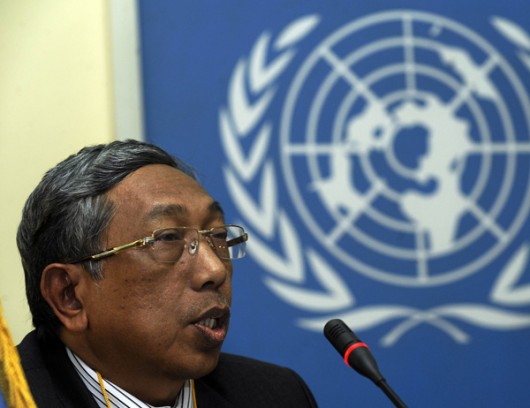 Indonesia’s Environment Minister Gusti Hatta,
all talk..so…’what does an Orang-Utan look like?‘
. Indonesia’s Environment Minister Gusti Hatta,
all talk..so…’what does an Orang-Utan look like?‘
.
The latest land-grabs have taken place since January 2010, when the local Bupati (regional government official), Ismail Thomas, issued plantation permits to two palm oil companies: Malaysian-owned PT Munte Waniq Jaya Perkasa (PT MWJP) and PT Borneo Surya Mining Jaya, a subsidiary of Sumatran logging, mining and plantation conglomerate Surya Dumai.
While the Norwegian Government has been instrumental in financially backing efforts to reduce deforestation in Indonesia through the REDD+ initiative, it has also invested in the parent company of PT MWJP through its sovereign wealth fund.
Pak Singko, a leader of the Dayak Benuaq of Muara Tae, said: “We are calling for help from people everywhere in protecting our forests and ancestral land. We are being squeezed from all sides by mining and plantation companies.
.
“This is the last remaining forests that we have and the only land we have to survive.
If my forests are gone, our lives will end.”
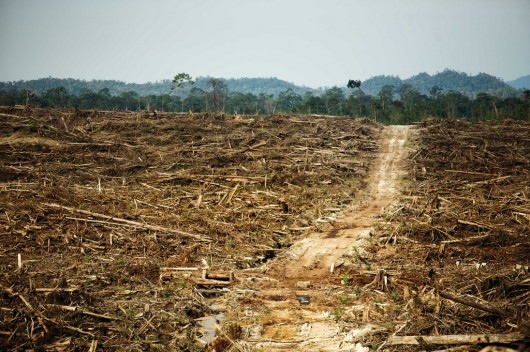 Cargill’s ecological facism for its self-serving Palm Oil
The destruction of primary rainforest by Duta Palma. West Kalimantan, Borneo.
Cargill was a key purchaser of palm oil from this notorious rainforest destroyer up until 2008. Cargill’s ecological facism for its self-serving Palm Oil
The destruction of primary rainforest by Duta Palma. West Kalimantan, Borneo.
Cargill was a key purchaser of palm oil from this notorious rainforest destroyer up until 2008.
[Source: Photo: David Gilbert/RAN, ^http://www.flickr.com/photos/rainforestactionnetwork/5551935164/]
(Click photo to enlarge)
.
The above photo is from an investigative report from Rainforest Action Network that presents evidence that (US conglomerate) Cargill is operating two undisclosed palm oil plantations in West Kalimantan, Indonesia.
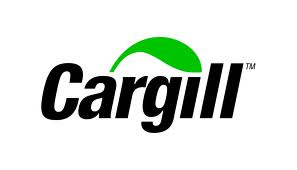 Cargill’s pathetic claim of its Corporate Responsibility in Indonesia Cargill’s pathetic claim of its Corporate Responsibility in Indonesia
[Source: Cargill corporate website: ^http://www.cargill.com.au/en/index.jsp].
.
When William Wallace Cargill founded our company in 1865, he deliberately set out to ensure that we earned and maintained a reputation for integrity, which he saw as a key differentiator in those times.
Corporate responsibility is part of everything we do. It is a company-wide commitment to apply our global knowledge and experience to help meet complex economic, environmental and social challenges wherever we do business. It is a process of continually improving our standards, our actions and our processes. Corporate responsibility extends not only to our own operations but to our wider communities and is based on four commitments:
- We will conduct our business with high levels of integrity, accountability and responsibility.
- We will develop ways of reducing our environmental impact and help conserve natural resources.
- We will treat people with dignity and respect.
- We will invest in and engage with communities where we live and work.
We recognize our continued success depends on the growth and health of our communities and partners, as well as the vitality and conservation of our natural resources. We are working with a diverse group of global, national and local organizations to support responsible economic development, help protect the environment and improve communities.
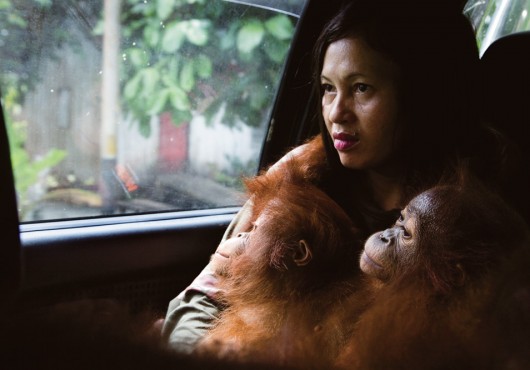 Forced eviction, forced immigration
Orang-Utan orphans fleeing their ravaged parents and their ravaged ancestral homes
Forced eviction, forced immigration
Orang-Utan orphans fleeing their ravaged parents and their ravaged ancestral homes
Present us an American citizen accepting of such home eviction!
.
ED: Cargill’s eco-rape and eco-plunder policy across Indonesia’s vulnerable Borneo (Kalimantan) demonstrates that Cargill’s above public relations spiel is clearly crap! This is a wealthy United States corporate exploiting a poor country’s precious rainforest ecosystems, buggering local indigenous peoples and driving the extinction of the endangered Orang-Utan. If you work for Cargill or have shares in Cargill yoiu may as well be associated with the arms suppliers to the Syrian president Bashar al-Assad and his regime.
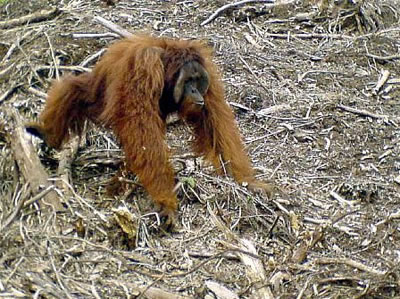 Not just home invasion, but complete ecological erasion
Cargill is calling in the A-Bomb to Orang-Utans
What United States citizen would tolerate this?
911 is being inflicted on vulnerable species by the United States Not just home invasion, but complete ecological erasion
Cargill is calling in the A-Bomb to Orang-Utans
What United States citizen would tolerate this?
911 is being inflicted on vulnerable species by the United States
.
.
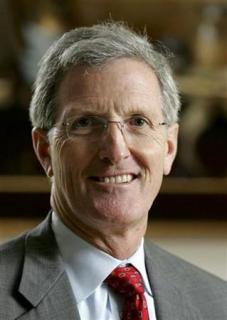 Cargill’s worldwide president and COO Gregory R. Page
His life won’t end in devastation, but he drives devastation in vulnerable Kalimantan – in secret! Cargill’s worldwide president and COO Gregory R. Page
His life won’t end in devastation, but he drives devastation in vulnerable Kalimantan – in secret!
.
Further Reading:
.
[1] ‘Villagers face off against palm oil firm’s bulldozers‘, by EIA, 20111123, ^http://www.eia-international.org/villagers-face-off-against-palm-oil-firms-bulldozers
.
[2] ‘Orangutan ‘killers’ on trial over slaughtering primates for pest control at palm oil plantation‘, by Damien Gayle, Daily Mail, 20120208, ^http://www.dailymail.co.uk/news/article-2097946/Orangutan-killers-trial-slaughtering-primates-pest-control-palm-oil-plantation.html
.
Tags: ancient rainforest, Cargill, deforestation, deforestation in Indonesia, EIA, Environmental Investigation Agency, forest exploitation, Gregory R. Page, Gusti Hatta, Hillary Clinton, Indonesia, Indonesian palm oil plantations, Kalimantan, Logging, logging Borneo, Meranti, Murara Tae, orang-utan, palm oil, palm oil plantations, payang tree, President of Indonesia, PT Borneo Surya Mining Jaya, PT Munte Waniq Jaya Perkasa, Sumatran logging, Surya Dumai, Susilo Bambang Yudhoyono, Telapak, Ulin, United States
Posted in Kalimantan (ID), Orang-utans, Threats from Farming | No Comments »
Add this post to Del.icio.us - Digg
Saturday, February 11th, 2012
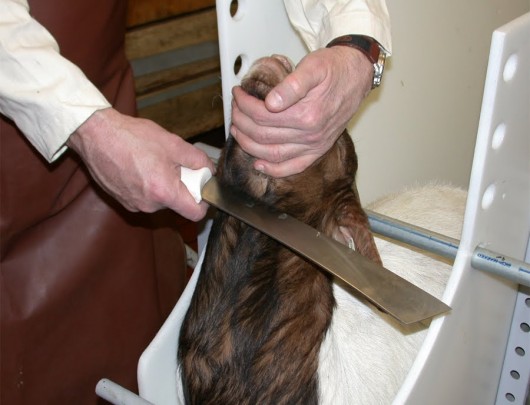 Halal Religious Slaughter
..requires throat slitting with a steel knife
. Halal Religious Slaughter
..requires throat slitting with a steel knife
.
The conditions required for ‘halal slaughter‘ require no stunning, instead death is executed manually using a steel knife, irrespective of the consciousness of the victim.
[Source: Halal Meat International Pty Ltd, ^http://ausmeat.net/halal.html]
.
A sentient animal (like this healthy goat above) is initially trusting of human caretakers, but upon the knife stroke and pain is conscious of being killed, and is so stressed (as any human would be).
The animal dies from bleeding to death while conscious. It suffers pain from the knife cutting into its flesh, its arteries, its oesophagus. To eat meat killed without instant death by stunning/shot, any alternate practice is unnecessary, by choice, barbaric and immoral. All animal cruelty must be outlawed, and prescribed into every country’s Crimes Act. The United Nations else needs to universally deem recalcitrant nations, barbaric. Thus Australia is barbaric, along with Indonesia, Israel and the United States!
This article expresses horror and disgust at the immoral treatment of animals by any human. While this article criticises religious and cultural practices, it is only in respect of how these may cause cruelty to animals. This article and this website respects the freedom of all human religions and cultures. But the moment anyone for whatever reason, belief or justification inflicts cruelty upon any animal, we utterly condemn it as wrong, barbaric and prescribe such action as a crime equal and deserving of the same crime inflicted on a human.
Animals are not anyone’s property, just as women are not the property of men, just like children are not slaves.
.
The Golden Rule of Human Morality

Morality condemns the inflicting of pain and suffering on any sentient being. The hahal practice is immoral. It is only performed for religious ritual reasons by barbaric patriarchal extremists. Halal needs to be banned globally.
In Australia, predominant modern Christian values prescribe moral human conduct based upon the fundamental universal premise:
.
“Do to others as you would have them do to you.”
~ Luke 6:31
.
Sensibly, no halal executioner or eater of halal meat would want to be killed by having their throat slit. Indeed, no rational person would want to be killed at all. Animal liberationists would argue that no animals should be killed and that to eat meat is murder.
While the ethics of killing animals for meat is a debated issue, inflicting cruelty on sentient beings is one of clear immorality. Inflicting cruelty is a discretionary choice and is avoidable.
The moral maxim that one should treat others as one would like others to treat oneself, indeed extends beyond modern Christian values. It is more broadly referred to as the ethic of reciprocity or ‘Golden Rule’ prescribing human moral conduct. Conversely, the Silver Rule is the negative interpretation: ‘One should not treat others in ways that one would not like to be treated.’ The Golden Rule dates back to Ancient Egypt and has prescribed standards of human morality across almost every ethical tradition of civilised human history including Christianity, Confucianism, Hinduism, Buddhism, Taoism, Baha’i, Brahmanism, Brahma Kumaris, Indigenous, Interfaith, Islam, Jainism, Judaism, Native American, Neo-Pagan, Sikhism, Taoism, Theosophist, Unitarian Universalist and Zoroastrian.
The Golden Rule has universally become the common principled base for the “Declaration Toward a Global Ethic” from the Parliament of the World’s Religions. The Initial Declaration was signed by 143 respected leaders from all of the world’s religions in 1993. Outside that global ethic there of course are those who justify killing anthing for their own ends. There will always be extremists.
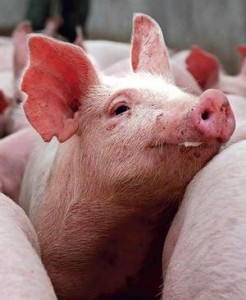 By instinct, an animal trusts us, but learns to fear us for its life By instinct, an animal trusts us, but learns to fear us for its life
.
Throat Slitting Slaughter is Immoral
The cruel practice of ‘halal slaughter‘ is one of the Islamic faith that has become a deviant abberation of that faith by men, just as the practice of patriarchal honour killings breach the ethical tenets of Islam.
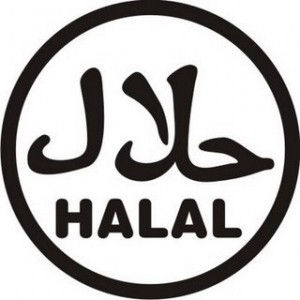 Label used for Halal Meat Label used for Halal Meat
.
A fundamental Quranic concept and a Pillar of Islam is ‘forbidding what is evil‘ and ‘opposing injustice‘. Those who choose to selectively exclude sentient beings are applying an extreme and narrow interpretation on their faith. Killing is wrong. Cruelty is wrong, evil and unjust.
Similarly, Jewish orthodox ‘kosher slaughter‘ practices prescribes ritual killing of an animal by slitting its throat with a knife. Kosher slaughter is simply a extreme and narrow interpretation of the Bible and the Torah, the Judaic scriptures. Somehow that interpretation claims that stunning before throadt slitting means the animal is unfit for Jews to eat, but nowhere in the Judaic scriptures is this explicitly prescribed.
 Label used for Kosher Meat Label used for Kosher Meat
.
Mutual respect applies not just between human beings but between humans (who have the intelligence to recognise) and all sentient beings – those living creatures that can feel, perceive or be conscious, including being able to feel pain and suffering.
Whereas morality is essential for civilised humanity, religion is a choice of faith. One’s choice of religion is a subset of human morality. Without a sound moral code, humanity descends into an uncivilised state – one that is barbaric, vicious, primitive and wicked. Those who inflict cruelty on any sentient being, either other humans or animals, act immorally. It is not as if they are ammoral (unaware of what morality is); they are decidedly immoral – they knowingly do what is wrong. Those who support the eating of animals cruelly killed are similarly immoral.
Ancient Greek society primitively and self-righteously viewed animals existing only for human benefit. The ancient Greek philosopher Aristotle viewed animals as ‘natural slaves‘ made for humans to be used as a means to an end. Aristotle assigned animals toward the bottom of a hierarchical pecking order, where somehow things lower on the chain were made for those higher on the chain. So plants were made for animals, animals were made for people, slaves were made for masters, women were made for men, and men were at the top of the earthly chain, made only for God. Aristotle was a man so may be that had somethig to to with his patriarchal world view. Civilised society rightly rejects such male hegemony and any form of enslavement.
Ancient Christianity similarly viewed animals existing only human use. In the Bible’s old testament book of Genesis, God gave man dominion over every living thing that crept on the earth. Every moving thing that lived was meant for man. Some people argue that this is the reason why animals can be treated as property, or in some cases, as machines. It is easy to justify the use of animals for food, research or pleasure when it is believed that they exist for humans.
Such narrow simplistic and self-serving world views reinforce the scope of religion being a subset of the universal holistic concept of human morality.
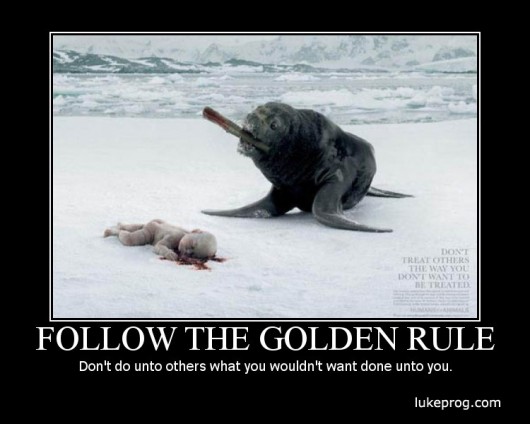
.
Animal Welfare Law in Australia
.
In modern best practice civilised societies, cruelty against animals is enshrined in law. In the United States, animals are viewed as property, but then that same society’s legislators reinstigated human torture and built Guantanamo Bay prison. Animals in the United States are segregated into being viewed as companion animals for humans, or lesser farm animals, or research animals or wildlife. It is practically an animal apartheid. In respect to the slaughter of farm animals, under the the Humane Slaughter Act in the United States ritual throat slitting is legalised.
In Germany, legislation has expressed the responsibility of human beings to protect animals. This idea steps away from the belief that animals are here for us to use as a means to an end.
In Australia, there is still no national law applying to animal welfare. Instead there is a hotch potch state and territory based regulations.
- New South Wales has its Prevention of Cruelty to Animals Act 1979
- Vic has its Prevention of Cruelty to Animals Act 1986
- Queensland has its Animal Care and Protection Act 2001
- South Australia has its Animal Welfare Act 1985
- West Australia has its Animal Welfare Act 2002
- Tasmania has its Animal Welfare Act 1993
- Northern Territory has its Animal Welfare Act
- Australian Capital Territory has its Animal Welfare Act1992
.
Even though the designated government departments charged with the administration and enforcement of the respective Acts are the primary industry departments, it is a government cop out that standard practice is to delegate enforcement to the RSPCA, a community charity.
.

The RSPCA in Australia
.
The Royal Society for the Protection of Animals is a community based charity that works to prevent cruelty to animals by actively promoting their care and protection. RSPCA Australia is a Federation of eight independent State and Territory RSPCA bodies called member Societies. RSPCA member Societies do much of the hands on work traditionally associated with the RSPCA such as the operation of shelters and the Inspectorate plus community education and fundraising.
The RSPCA’s Inspectorate’s primary role is:
- To investigate complaints of cruelty and neglect
- To provide guidance and education to animal owners where necessary
- To initiate prosecutions for offences
- To attend to sick and injured stray animals or those that have been abandoned
- To carry out regular inspections of saleyards, pet shops, abattoirs, livestock export operations, animal boarding and breeding establishments, intensive and non-traditional farms, and all places where animals are kept and used for public entertainment.
.
Editor: What a government cop out! – getting charities to do its dirty work. And how effective can a charity be to monitor, police and prosecute such industries and cultures?
.
Australian Standards for Farm Animal Slaughter
[Source: RSPCA, ^http://kb.rspca.org.au/What-is-kosher-slaughter-in-Australia_117.html]
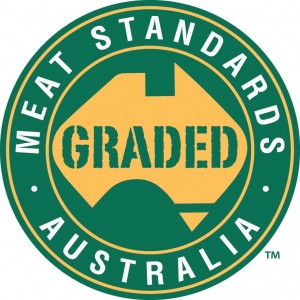
Meat Standards Australia – whose cultural definition?
.
The standard for ‘meat production‘ (aka farm animal slaughter) in Australia is that all animals must be effectively stunned (unconscious) prior to slaughter. Kosher slaughter does not comply with this standard (Ed: nor does Halal slaughter).
Despite the Australian standard requiring stunning, there are instances where the relevant Australian state or territory meat-inspection authority can provide an exemption and approve an abattoir for ritual slaughter without prior stunning – either halal or kosher – for the domestic market. For cattle and sheep, the requirements for this type of slaughter are set out in a nationally adopted guideline Ritual Slaughter for Ovine (Sheep) and Bovine (Cattle):
For cattle, this means the animal must remain in an upright position with the head and body restrained. The animal must be stunned with a captive-bolt pistol immediately after the throat is cut (known as ‘sticking’). Two separate people must perform the sticking and stunning. If there are any problems restraining the animal while attempting to stick it, then it must be stunned immediately.
For religious slaughter of sheep, the guideline requires cutting both the carotid arteries and the jugular veins. This must be confirmed — if they are not completely severed, then the animal must be immediately stunned.
Cattle and sheep requirements are different because cattle have an extra blood supply to the brain through the back of the neck. Therefore, cutting cattle’s throats results in less rapid loss of consciousness.
Kosher beef, sheepmeat and chicken are produced from animals that have not been stunned prior to having their throat cut.
‘The RSPCA is strongly opposed to all forms of slaughter that do not involve prior stunning of the animal.‘
.
The RSPCA is concerned there are greater risks of animal suffering during religious slaughter without stunning than for conventional slaughter. The number of animals involved is a tiny percentage of all animals killed but, regardless, the method is distressing to the animal due to:
- Increased restraint
- Injury caused by the slaughter methods
- Subsequent bleeding out
The use of stunning during the slaughter process can remove some, but not all, of these concerns.
The RSPCA definition of humane killing is: ‘an animal must be either killed instantly or rendered insensible to pain until death supervenes’. When killing animals for food, this means they must be stunned before slaughter so they immediately become unconscious. The RSPCA policy on ritual slaughter is clear: slaughter without prior stunning is inhumane and completely unnecessary.
The RSPCA is opposed to inhumane methods of killing and continues to promote this view to governments and the public. This view of animal welfare and animal slaughter of the RSPCA is supported by The Habitat Advocate, although we consider that concerted effort needs to be made to reduce human reliance upon animals for food.
.
End ‘cruel’ religious slaughter, say (British) scientists
[Source: ‘End ‘cruel’ religious slaughter, say scientists’, by Martin Hickman, Consumer Affairs Correspondent, The Independent (UK), 20090622, ^http://www.independent.co.uk/news/uk/home-news/end-cruel-religious-slaughter-say-scientists-1712241.html]
.
Religious slaughter techniques practised by Jews and Muslims are cruel and should be ended, says a scientific assessment from the (UK) Government’s animal welfare advisers.
The Farm Animal Welfare Council (UK) says that slitting the throats of the animals most commonly used for meat, chickens, without stunning, results in “significant pain and distress”. The committee, which includes scientific, agricultural and veterinary experts, is calling for the Government to launch a debate with Muslim and Jewish communities to end the practice.
One Muslim organisation, the Halal Food Authority, already insists on the slaughterhouses it regulates stunning animals first on welfare grounds, as long as they are still alive when their throats are slit. But in other halal and almost all kosher slaughterhouses, animals have their throats slit without prior stunning which would render them insensible to the pain. Religious groups say that doing so would be against their interpretation of religious texts.
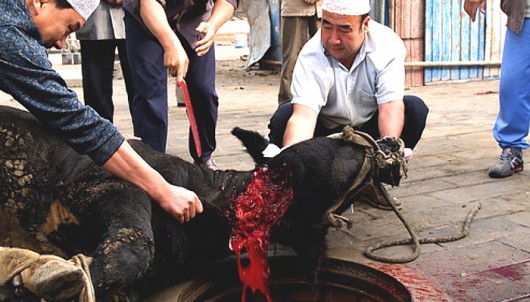
They are granted an exemption to the Welfare of Animals (Slaughter or Killing) Regulations 1995, which stipulates that creatures such as cows, goats and chickens be stunned first.
In a report into the slaughter of white meat, the Farm Animal Welfare Council (FAWC) said evidence suggested that chicken and turkeys were likely to be conscious for up to 20 seconds as blood seeped out of them. The animals are killed by a transverse incision across their neck, cutting skin, muscle, trachea, oesophagus, carotid arteries, jugular veins and major nerves.

“Such a large cut will inevitably trigger sensory input to pain centres in the brain,” the council said. “Our conclusions … are that such an injury would result in significant pain and distress … before insensibility supervenes. Fawc is in agreement with the prevailing scientific consensus that slaughter without pre-stunning causes pain and distress. On the basis that this is avoidable and in the interests of welfare, FAWC concludes that all birds should be pre-stunned before slaughter.”
While recognising the difficulties of reconciling scientific findings with matters of faith, it urged the Government to “continue to engage with religious communities” to make progress. In a 2003 report on red meat, FAWC called for ministers to repeal the religious groups’ legal opt-out.
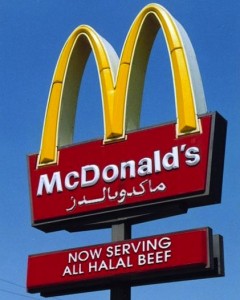
The Shechita Council, which oversees kosher meat, was contacted but did not supply a comment. Massood Khawaja, president of the Halal Food Authority, insisted that its animals were stunned, unlike those regulated by another group, the Halal Monitoring Committee. “The Koran says use your brain, ponder about things and that’s what we are doing,” he said. “It’s a question of animal welfare.”
The Government no longer keeps statistics on religious slaughter, but five years ago, the Meat Hygiene Service suggested 114 million animals were killed under halal and 2.1 million under kosher methods each year in Britain.
The Department for Environment, Food and Rural Affairs said it would not change its “long-standing policy of religious tolerance” by ending the opt-out. “And while the Government would prefer to see all animals stunned before slaughter, we will continue to ensure that required standards of animal welfare are effectively monitored and enforced in all slaughterhouses,” it said in a statement.
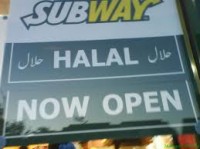
Last year, Lord Rooker , a minister in the department, called for meat slaughtered without stunning to be labelled for the public’s benefit, since some cuts were considered unacceptable to eat, and sold back into the food chain. The Government no longer keeps statistics on religious slaughter, but five years ago the Meat Hygiene Service suggested 114 million were killed under halal and 2.1 million under kosher methods each year.
Last night, the vegetarian organisation Viva!, Tom Lane, said: “How many times does the Government’s own advisory committe on animal welfare have to ask for a ban on slaughter without pre-stunning before action is taken? Viva! embraces multiculturalism and all religious faiths, but the suffering of these animals is so extreme that a line has to be drawn somewhere.”
 . .
What is Kosher Slaughter?
.
‘At every kosher slaughterhouse, animals are killed by a ritual cut to the neck called ‘shechita‘ that severs the esophagus and trachea (or at least one of these in the case of chickens and turkeys). Ideally, the cut also severs blood flow to the brain and, after a variable period of time, leads to unconsciousness. Jewish law specifies that a razor sharp blade must be used and that the slaughter must be performed by a properly trained individual called a shochet.
‘These rules are particularly important for animal welfare because the sharpness of the blade and its proper use seems to reduce the pain caused by the cut and speed unconsciousness. Most, though not all, authorities in halakha (Jewish law) have further argued that the animal must be conscious while shechita is performed. In non-kosher slaughterhouses, U.S. law requires that animals be stunned before being slaughtered on humane grounds.’
[Source: Jewish Vegetarians of North America, Read More: ^http://jewishveg.com/media11.html]
.
[Editor: Illegality and immorality receive a blind eye when Religion overrules State. Communities have a right to expect their political representatives to appropriately represent community values and for their government to set and maintain high standards, else community faith and trust in political process and in government are undermined].
.
The Cruelty Behind Muslim Ritual Slaughter
[Source: ‘The Cruelty Behind Muslim Ritual Slaughter‘ by Logan Scherer, PETA, 20090812, ^http://www.peta.org/b/thepetafiles/archive/2009/12/08/the-cruelty-behind-muslim-ritual-slaughter.aspx]
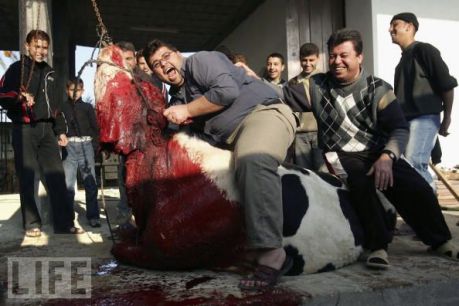
‘I’m going to be frank—after a minute and a half of Global Action in the Interest of Animals (GAIA)’s latest undercover video footage from a halal slaughterhouse in Belgium, I had to stop watching. But while I was able to hit a pause button, the more than 250,000 cows, sheep, and goats who are slaughtered while they are still conscious must endure prolonged torment. Animals killed halal (according to Islamic law) cannot be stunned before their throats are cut, which means that many animals—including the cow shown in this video—fight and gasp for their last breath, struggling to stand while the blood drains from their necks.
Belgium forbids slaughter without prior stunning, but the law does not apply to ritual slaughter practices, even though much of the halal meat produced in the country is distributed both to religious and nonreligious markets. Islamic teachings encourage kindness and compassion toward all creatures, which is why many Muslims make the humane decision to go vegan.
Visit IslamicConcern.com to learn more about cruelty-free alternatives to halal meat.
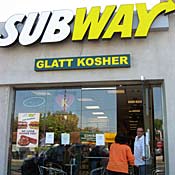
Editor: What has become regarded as politically correct has been allowed to descend into morally incorrect. Ritual slaughter is religious tolerance at any cost. If halal and kosher is permitted what is stopping tolerance of voodoo, pagan animal sacrifice, Indian Khond human sacrifice, Sumatran Batak canabalism? Humans can justify any practice on the basis of cultural tradition.
>
What has Australia’s Meat and Livestock Association have to say?
[Source: ^ http://www.mla.com.au/Livestock-production/Animal-health-welfare-and-biosecurity]

.
MLA: ‘Animal health, welfare and biosecurity are important at all stages of the livestock production chain. Each can have potentially adverse impacts on productivity if managed poorly and because producers have a duty of care to their livestock. If not upheld, these issues have the potential to reflect badly on the whole industry.’
Producers must consider the five freedoms for animals and the need to incorporate these into property management plans and procedures:
- Freedom from hunger and thirst
- Freedom from discomfort
- Freedom from pain, injury and disease
- Freedom to express normal behaviour
- Freedom from fear and distress
‘Attention to health, welfare and biosecurity is easier during good seasons, but is equally important during poor seasons or during foreseen circumstances likes floods, drought, fires and other adverse events. Special attention needs to be paid when these circumstances necessitate the humane destruction of large numbers of animals.’
.
Animal welfare
.
‘The welfare of sheep, cattle and goats affects the productivity, profitability and sustainability of the Australian livestock industries. The welfare of livestock is important during all stages of production, from birth to slaughter. Good animal welfare practices are an integral part of a property management plan.
MLA is committed to investing in animal welfare research that provides tools and knowledge to producers to help them improve the wellbeing of their livestock and address issues of community concern.’
.
Editor: Well, that is Meat Industry spin. The following articles reveal Australia’s meat industry reality.
.
Rogue abattoir not representative: government
[Source: ‘Rogue abattoir not representative: government’, 10 February 2012, AAP, ^http://www.sbs.com.au/news/article/1625242/Sydney-abattoir-shut-down-over-cruelty-concerns]
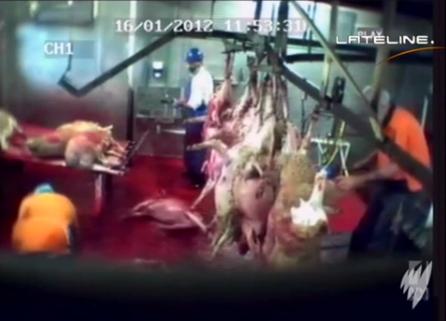 Half dead lamb writhes on the abattoir floor at the Hawkesbury Valley Abattoir
Abattoir workers (in orange) continue slaughtering other animals business-as-usual. Half dead lamb writhes on the abattoir floor at the Hawkesbury Valley Abattoir
Abattoir workers (in orange) continue slaughtering other animals business-as-usual.
.
A Sydney abattoir that has been shut down because of gross animal mistreatment is a rogue operator and not representative of the industry, the NSW Food Authority says.
The Authority suspended operations at Hawkesbury Valley Meat Processors at Wilberforce on Thursday after it received video footage depicting “acts of gross animal mistreatment”.
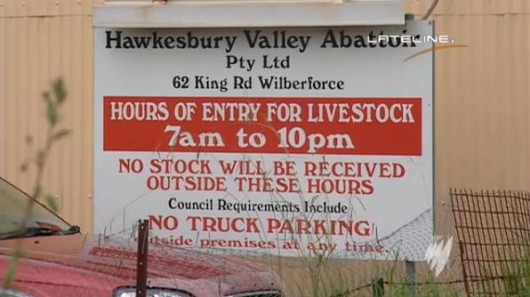
The footage, shown on ABC’s Lateline program on Thursday night, showed a worker bashing a pig several times over the head with a metal bar. [See Video – WARNING contains disturbing footage].
Another pig was hit 13 times because it had not been stunned properly.
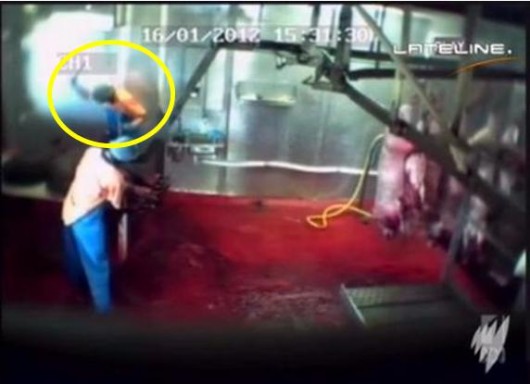 Abattoir worker bashed pigs over the head with a metal pole to kill them Abattoir worker bashed pigs over the head with a metal pole to kill them
.
Investigation Launched
.
The Authority, the RSPCA and NSW Department of Primary Industries have launched an investigation into the abattoir, while the operation has been ordered to make a submission as to why it shouldn’t lose its licence.
Peter Day, executive director of compliance at the authority, said it was the worst animal welfare breach at an abattoir that he has ever seen, but defended the industry as a whole.
“Obviously the footage we have seen, we would be of the view that it is not representative of the industry as a whole, and that this is a rogue operation, that is in no way compliant with what is expected of abattoirs,” he told reporters in Sydney.
“We will work with the relevant other agencies… to ensure that we fully uncover why this has occurred and how we can ensure operations like this don’t occur into the future.
“There is no denying that the footage is disturbing. I’m shocked. I think it is the worst case I’ve seen in an abattoir in terms of animal welfare breaches.”
.
Workers Sacked
.
Workers involved in the mistreatment of animals at a Sydney slaughterhouse have been sacked or moved to other duties, the abattoir says.
Hawkesbury Valley Meat Processors said it was extremely concerned about video footage aired on television on Thursday night showing animals being bashed to death while conscious.
“Casual staff involved in the incident have been stood down and permanent staff have been moved to other duties until the investigation has been finalised,” the abattoir said in a statement on Friday.
Hawkesbury Valley said it reported the incident to authorities as soon as it became aware of the video and was cooperating with the current investigation.
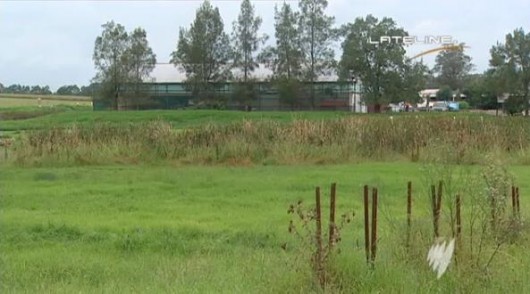 Wilberforce’s Halal House of Horror Wilberforce’s Halal House of Horror
.
Wake-Up Call
.
NSW Primary Industries Minister Katrina Hodgkinson on Friday said the footage should act as a “wake-up call” for all abattoir operators, and flagged a review of the state’s abattoirs.
“I’ve seen this footage, and it may well be a one-off, but we’re certainly going to review the operations in all abattoirs as a result of this,” she told ABC Radio.
“I want to make sure that all operations right across NSW are being conducted in a manner which follows those animal welfare guidelines.”
The body representing NSW farmers said it was appalled by the cruelty depicted in the video and welcomed the investigation into the abattoir.
NSW Farmers president Fiona Simson said animal welfare had to be a priority for everyone in the meat production chain.
“After the live export issue in 2011, our membership reaffirmed that the highest level of animal welfare should always be carried out, whether at home or abroad,” she said in a statement.
.
Call for CCTV Cameras
.
Animals Australia called for closed circuit television cameras to be installed in all Australian abattoirs.
“One of the problems is that unlike export abattoirs, domestic abattoirs don’t have an inspector or government officer on site most of the time,” campaign director Lyn White said in a statement. She said Animals Australia was calling on authorities to follow the lead of the UK where one in five abattoirs was fitted with CCTV cameras.
“Only the presence of cameras will actively discourage workers from engaging in such wanton acts of gross cruelty,” she said.
The food authority’s Mr Day said there were a number of risks with CCTV.
“It is something that we will look at in terms of whether that could have worked in this regard,” he said. “But I think that raises a lot of other questions around who watches the video, who owns the video footage, compliance and so on. I think we are really focussing on the fact that this a one off, in terms of a rogue operator. “We’ve taken the necessary action, they’re not operating now, and we’re doing our full investigation.”
.
Inspected 4 Times
.
Mr Day said the Sydney abattoir had been audited or inspected four times in 2011. “(But) there was nothing to indicate the levels of the problems that were revealed in the footage were
occurring there”.
Asked if the authority’s compliance procedures had failed, Mr Day said it carried out unannounced inspections and audits.
“I don’t know what more we can do there in that regard,” he said. “I think that our compliance program is as good as it can be at the present time.” Mr Day said part of the investigation would also look at ongoing investigation and compliance activities. “I think we need to be clear that ultimately the responsibility to comply with the legislation lies with the abattoir owner operators,” he added.
“As the regulator our action is to respond and react and take action appropriately, where we do uncover breaches, and I think we’ve done that in this regard.”
NSW Chief Veterinary Officer Ian Roth agreed that the Hawkesbury operation was a rogue operator. “We were horrified – we were shocked,” Dr Roth said.
“We think it’s very appropriate … to immediately suspend the operation at the abattoir and also to refer it to the RSPCA for a full investigation.”
Dr Roth said he had never seen cruelty like that filmed at the Sydney abattoir. “I was shocked, and we were horrified, and I obviously didn’t like it at all,” he said.
.
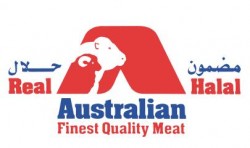 Real halal…real horror Real halal…real horror
.
Editor: How do we know this practice is not representative? From the footage it is a clear workplace culture!
.
Not a One-Off – ‘Vic abattoir probed over cruelty claims’
[Source: ‘Vic abattoir probed over cruelty claims’, by AAP, 20111125, ^http://news.smh.com.au/breaking-news-national/vic-abattoir-probed-over-cruelty-claims-20111125-1nz6r.html]
.
A Victorian pig abattoir (LE Giles Abattoir, in Trafalgar, west of Melbourne) has been ordered to stop operations while it is investigated over animal cruelty claims.
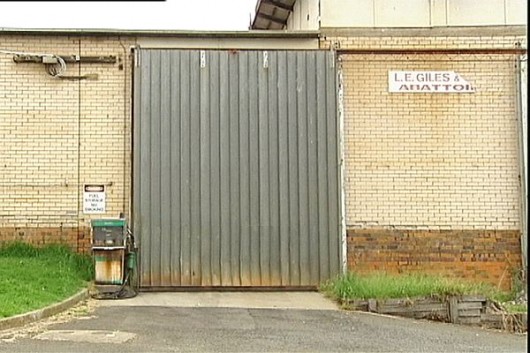 Cruel animal treatment – out of sight, out of mind Cruel animal treatment – out of sight, out of mind
.
Victoria’s department of primary industries announced on Friday it has launched a full investigation into slaughter practices at the Gippsland abattoir following serious animal welfare complaints.
Video footage allegedly taken inside the L.E. Giles and Sons Abattoir will be analysed as part of the probe, which will determine whether animal cruelty prevention laws have been broken.
PrimeSafe Victoria, which licenses the state’s domestic abattoirs, has ordered the abattoir owners to stop operations by suspending its licence.
PrimeSafe chief executive Brian Casey said he ordered the immediate cease after viewing the video footage. Mr Casey said it will vigorously pursue the complaints to ensure any inhumane treatment of animals is stamped out.
“I am appalled by the treatment of animals shown in the video footage,” he said in a statement.
As the abattoir is now prevented from slaughtering livestock, there is no ongoing risk to the welfare of livestock at the facility or to public health.
Mr Casey said he was prepared to cancel the abattoir’s licence once the probe is complete. “I have advised the abattoir owners that it is my intention, immediately the investigation is concluded, to take action with a view to cancelling their PrimeSafe licence,” he said.
PrimeSafe is empowered to cancel the operating licence of any abattoir which does not meet animal welfare standards. The investigation will also uncover any potential breaches of the Meat Industry Act.
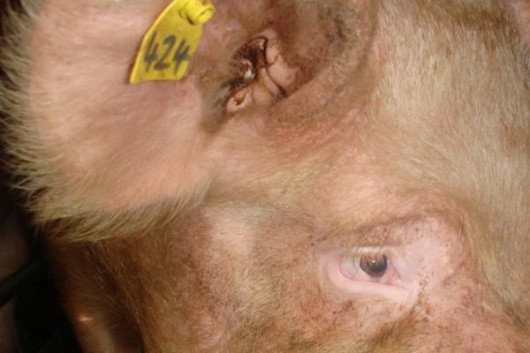 One of the abused pigs
. One of the abused pigs
.
Further Reading:
.
[1] ‘Rogue abattoir not representative: government’, 20120210, AAP, ^ http://www.sbs.com.au/news/article/1625242/Sydney-abattoir-shut-down-over-cruelty-concerns
.
[2] Royal Society for the Prevention of Cruelty to Animals (Australia), RSPCA, ^ http://www.rspca.org.au/
.
[3] http://kb.rspca.org.au/What-is-kosher-slaughter-in-Australia_117.html
.
[4] Halal Meat International Pty Ltd (Australia), ^ http://ausmeat.net/halal.html
.
[5] Animal Legal and Historical Center, USA, ^ http://www.animallaw.info/articles/ddusicacl.htm
.
[6] Luke Muehlhauser, Singularity Institute Executive Director,^ http://lukeprog.com/
.
[7] ‘ Vic abattoir probed over cruelty claims‘, by AAP, 20111125, ^ http://news.smh.com.au/breaking-news-national/vic-abattoir-probed-over-cruelty-claims-20111125-1nz6r.html
.
[8] Meat and Livestock Association ( Australia’s peak industry body joke), ^ http://www.mla.com.au/Livestock-production/Animal-health-welfare-and-biosecurity
.
[9] Islamic Concern.com, ^ http://www.islamicconcern.com/
.
[10] Jewish Vegetarians of North America, ^ http://jewishveg.com/media11.html
.
[11] ‘Activists question Australian Standards’ by Steve Cannane , ABC TV Lateline programme, 20120211, ^ http://www.abc.net.au/news/2012-02-11/activists-not-convinced-abattoir-abuse-is-isolated/3824486
.
[12] Melbourne: ‘Animal activist rescues dog from illegal abattoir’ by Maris Beck and Nino Bucci, 20120203, Hawkesbury Gazette, ^ http://www.hawkesburygazette.com.au/news/national/national/general/animal-activist-rescues-dog-from-illegal-abattoir/2442639.aspx
.
[13] Melbourne’s illegal dog meat abattoir: ‘ Peter Avraam, illegal dog meat abattoir… RSPCA did nothing!‘, by Chris Roubis, 20120206, ^ http://www.chrisroubis.com/2012/02/peter-avraam-illegal-dog-meat-abattoir-rspca-did-nothing/
.
[14] RSPCA Watchdog – a community voluntary watchdog on what the RSPCA is doing and not doing, ^ http://www.rspcawatchdog.org/articles/whatswrong.htm
.
Footnote
.
‘Trade put first when RSPCA raised issue’
[Source: ‘Trade put first when RSPCA raised issue’, by Kelly Burke, Sydney Morning Herald, 20110602, ^http://theland.farmonline.com.au/news/nationalrural/livestock/cattle/trade-put-first-when-rspca-raised-issue/2182830.aspx?storypage=0]
.
The RSPCA took its concerns over the welfare of cattle exported to Indonesia to the federal government in writing two years ago. But the animal welfare organisation was denied permission by the government to investigate, for fear of offending its closest trade partner.
The government also ignored alarm bells that rang 18 months ago, when a departmentally endorsed report designed to document the improvements Australia had achieved in Indonesian abattoirs instead identified serious animal welfare issues at the point of slaughter.
As another ship, the Hereford Express, prepared to leave for Indonesia from Darwin yesterday with about 2000 head of cattle aboard, the Australian Veterinary Association joined the growing call for an immediate ban on all live exports to Indonesia.
So far, the Agriculture Minister, Joe Ludwig, has only declared a moratorium on the supply of cattle to 11 targeted abattoirs, but has declined to specify exactly how the government might enforce such a limited ban while continuing the live export to Indonesia of some 500,000 cattle every year.
”The live export of all cattle to Indonesia should be suspended until the same animal welfare standards as Australia’s can be assured,” said the president of the Australian Veterinary Association, Barry Smyth.
“This means that pre-slaughter stunning must be mandatory and the appropriate use of restraining boxes is enforced.”
The RSPCA has told the Herald it sought to travel to Indonesia to inspect conditions in the abattoirs in 2009, but the then agriculture minister, Tony Burke, brushed off the concerns and referred the matter to the Meat & Livestock Association.
The RSPCA was subsequently refused permission to conduct its own investigation.
”There were suggestions that the minister felt it could upset the Indonesian government,” said the RSPCA’s chief scientist, Bidda Jones. ‘‘But no reason was ever given in writing.’‘
Then last November, the RSPCA received a request by the Department of Agriculture to attend a briefing in Canberra, where Dr Jones was told an independent report had found that slaughter conditions in Indonesia had been ”generally good”.
Dr Jones received a copy of the report, which had been completed six months earlier. The Herald has also since obtained a copy of the report, which documents a variety of substandard practices that would be illegal under Australian laws and in violation of international guidelines.
Examples included head slapping, where the panicked prostrate animal constantly bangs its head on the steel draining trough as a result of the design of the Australian Mark 1 boxes, and the finding that the average number of cuts to an animal’s throat prior to loss of conscience was four, with up to 18 cuts recorded.
”From the information available in the report it is clear that the majority of the animals observed were subjected to significant levels of pain, fear and distress during handling and an inhumane slaughter,” Dr Jones’s analysis concluded. ”It is therefore both perplexing and extremely disappointing that the report takes the range of conditions observed and summarises them into one sentence: ‘Animal welfare was generally good’.”
.
What’s wrong with the RSPCA?
Despite the hard work of volunteers, RSPCA management consistently fails animals.
by Patty Mark and Erik Gorton
.
Q. Why is the RSPCA in business with the largest battery egg producer in Australia?
The RSPCA says it’s against the cruel battery cage yet maintains a business arrangement and accepts sponsorship from Pace Farms, Australia’s largest battery egg producer. The RSPCA say their Liberty Barnlaid Egg Endorsement Scheme with Pace will ensure some hens get out of their cages, yet the number of battery hens in cages has not decreased while the RSPCA gets paid (to date) over $182,560 in royalty payments. Meanwhile, Pace Farms has just built the largest battery hen factory in the southern hemisphere (West Wyalong).
.
Q. Why does the RSPCA justify overcrowding, beak mutilations, lack of perches, prevention of roosting, chronic stress and electric shock training to the hens they abuse for their barnlaid approved eggs?
The Animal Liberation Victoria undercover rescue team repeatedly videotape and photograph all of the above cruelties inside RSPCA approved barnlaid sheds.
.
Q. True or False: The RSPCA is the only animal organisation legally able to prosecute for cruelty in Victoria?
True. (Section 24 of the Prevention of Cruelty to Animals Act – POCTA). Other Victorian animal organisations depend on the RSPCA to investigate their cruelty complaints. For twenty years Animal Liberation Victoria has presented clear violations and gross suffering in egg-laying factories, broiler chicken sheds and intensive piggeries, yet the RSPCA ignores this evidence and fails to prosecute.
.
Q. How often do the RSPCA routinely inspect those businesses and industries that use the majority of animals in Victoria?
Chickens are the most numerous animals used in Victoria requiring the protection of the RSPCA.
Millions of birds in hundreds of breeding farms, battery/barnlaid and free-range egg farms, and broiler (chicken meat) farms rated only three routine inspections in 2002. The inspections are cursory. What hope do the animals have, especially if inspections are at Pace Farms?
.
Q. Killing them softly? Is the RSPCA involved in sending animals to the slaughterhouse?
The RSPCA is also in business with pig producers. Otway Pork was a sponsor of 2006’s Million Paws Walk and the RSPCA makes $$$ from pigmeat sold by Otway Pork. Pigs are as intelligent as dogs. Would the RSPCA send all the unclaimed lost dogs who they euthanise to a slaughterhouse to be electrically prodded, terrorised, have their throats slit, then hung up by one leg to bleed out, with some possibly entering a scalding tank alive? Ask them why they treat pigs this way.
.
Q. What creatures (great and small) does the RSPCA serve or cook at it’s fund-raisers and family days?
The RSPCA consistently serves animal flesh at their public functions knowing the enormous pain and terror these animals suffered during their rearing, transport and finally their slaughter at the abattoir. There are numerous meat-free alternatives they could use to spare these creatures this torment while also leading the community forward with a truly humane and healthy food choice.
.
Q. What did the RSPCA do to help 378 dogs at a cruel Ballarat Puppy Farm?
Eurovision’s Puppy factory which was situated near Ballarat had been farming thousands of puppies in extremely cruel conditions for over twenty years. Repeated evidence of abuse presented to the RSPCA was dismissed, who claimed that the farm’s operations were legal. After video evidence of an undercover rescue was presented, the RSPCA still maintained “No animal welfare issues observed”. Finally, sustained protests and lobbying of Ballarat’s local council by campaigner Debra Tranter and Animal Liberation Victoria resulted in the farm’s closure due to appalling conditions.
The RSPCA then delivered it’s greatest slap in the face when it mislead the public in it’s newsletter, implying that the closure of the factory was due to their efforts! A very cleverly worded article proclaimed the closure of the Puppy factory, and while it never actually claimed victory, the clear impression given to the reader was that the RSPCA had ordered the closure.
.
Q. How is the RSPCA currently handling the case of starving horses in Tolmie?
For seven months now the RSPCA have issued four compliance notices to an animal hoarder who has red-worm infested horses in her care. To date, nine horses have died as a result of insufficient nutrition and lack of adherence to a proper rehabilitation regime. Many more horses are still in danger and yet the RSPCA refuses to seize the horses, claiming that they cannot do so while the owner complies with veterinary advice. The RSPCA appointed vet, however, has since discontinued involvement due to frustration that the owner is not following the procedures he has set out. (Read: ‘RSPCA fails horses in need‘ for the full story).
.
Editor:
Australian Governments (national and state) are turning a blind eye to animal cruelty in farming and this is unacceptable. Agriculture Minister, Joe Ludwig, needs to be sacked for gross neglect and immoral complicity. The MLA’s previous bossDon Heatley and the Cattle Council’s past boss Greg Brown need to be investigated and both organisations wound up over complicity in the known cruelty of the Indonesian livestock trade.
.
Reform Initiative:
The current inspectorate functions of the RSPCA charity is a government cop out of responsibility for law and order. That animal welfare is regulated undre multiple state-based systems is a legacy of colonialism. The entire inspectorate role needs to be wholly transferred to a new dedicated national agency, fully national government-funded and transparently independent from industry and government departments. Essentially this is a veterinary standard that applies to all animals in Australia – farmed, companion animals, and wildlife. So perhaps a suitable title for the new agency should have a veterinarian board of management and be called the Australian Animals Police to operate under a strict new national Animal Crimes Act.
Refer to previous The Habitat Advocate articles on this issue:
.
.
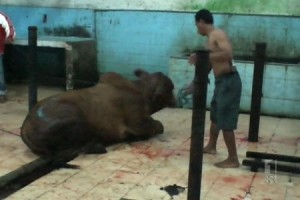 Photo extract of infamous secret video of Indonesian abattoir barbarism
…don’t travel to Indonesia. Boycott this backward country! Photo extract of infamous secret video of Indonesian abattoir barbarism
…don’t travel to Indonesia. Boycott this backward country!
.
Tags: Animal Crimes Act, animal cruelty, Animal Welfare Law, Australian abattoirs, Australian Animals Police, Farm Animal Welfare Council, Halal KFC, Halal McDonalds, halal slaughter, Halal Subway, Hawkesbury Valley Abattoir, Kosher McDonalds, kosher slaughter, Kosher Subway, L.E. Giles and Sons Abattoir, Meat and Livestock Association, Meat Standards Australia, religious slaughter, RSPCA, The Golden Rule, Throat Slitting Slaughter, throats slit
Posted in Threats from Farming | 4 Comments »
Add this post to Del.icio.us - Digg
Wednesday, February 1st, 2012
It’s a remarkable photograph: A pregnant Orang-utan protectively clutching her five-year-old child as death seems imminent at the hands of bounty hunters armed with knives.
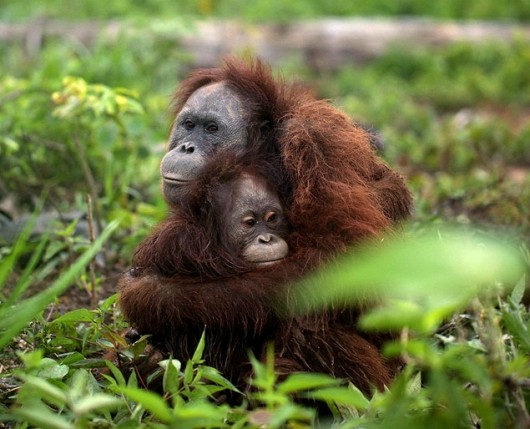 Ordeal…the mother and baby Orang-utan, above, were lucky to have escaped
a group of juvenile Indonesian poachers (below) in Kalimantan (Borneo)
(© Photo by Vier Pfoten of Four Paws International, ^http://www.four-paws.org.uk/ and Ordeal…the mother and baby Orang-utan, above, were lucky to have escaped
a group of juvenile Indonesian poachers (below) in Kalimantan (Borneo)
(© Photo by Vier Pfoten of Four Paws International, ^http://www.four-paws.org.uk/ and
PT Restorasi Habitat Orangutan Indonesia (RHOI)
^http://forest-carbon.org/project-list/first-project)
.
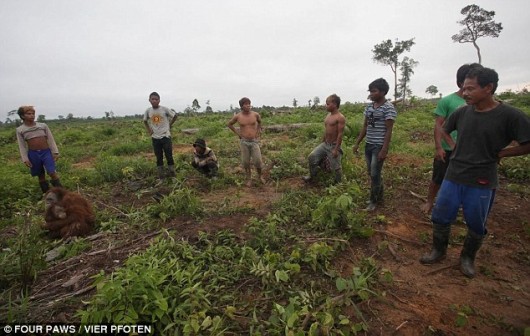
At The Habitat Advocate we wish to emphasise and thank the vital role of wildlife photographers around the world whose photos continue to help convey the plight of wildlife at the hands of humans. Without such photos, the truth would be less disseminated.
The following article was reproduced in The Sun-Herald newspaper (Sydney) on 20120129 on page 30. The article was borrowed from the New York Daily News newspaper (New York) which published the article on 20120127. The original source was the Daily MAIL (UK), written by Richard Shears, 20120127, under the long heading: ‘Don’t hurt my baby! Pregnant Orang-utan protectively hugs her daughter as ruthless Borneo bounty hunters move in for the kill‘.
The ultimate source is from the website of Four Paws UK.
Four Paws International is an international animal charity, campaigning to end animal suffering and cruelty. Four Paws International was founded in 1988 in Austria to campaign against fur farms and against battery farmed eggs.
Visit their website (English office) : ^http://www.four-paws.org.uk/
The partner organisation based in Indonesia is PT Restorasi Habitat Orang-utan Indonesia (RHOI), which translates into English as the Borneo Orang-utan Survival (BOS). Its name could not be more literal! Humans are systematically exterminating a species – the Orang-utan.
BOS has developed an Ecosystem Restoration Concession with the intention of using the forest area as a release site for rehabilitated Orang-utans. The proposed concession is in East Kalimantan is comprised of the ex-PT Mugitriman International (MGI) timber concession. BOS would like to obtain sustainable funding for managing and safeguarding this forest and is currently exploring the option of an avoided deforestation/REDD project where the sale of carbon.
Visit their website: ^http://forest-carbon.org/project-list/first-project
.
.
‘Pregnant Orang-utan mother and child rescued at last minute from knife-bearing bounty hunters in Borneo’,
by Rolando Pujol in the New York Daily News, Friday, 20120127, ^http://www.nydailynews.com/news/pregnant-orangutan-mother-child-rescued-minute-knife-bearing-bounty-hunters-borneo-article-1.1013270?]
.
It’s a remarkable photograph: A pregnant Orang-utan protectively clutching her five-year-old child as death seems imminent at the hands of bounty hunters armed with knives.
At the last minute, however, members of Four Paws International, an international animal-rescue group, swooped in last week and prevented their killings in Borneo, the Daily Mail reported.
“A few minutes later and the Orang-utans could have been dead,” said Dr. Signe Preuschoft, a primate expert with the British-based organization, according to the Daily Mail. “We discovered a gang of young men surrounding them and both victims were clearly petrified.”
The incident showcases the threat Orang-utans are facing as they are targeted for slaughter with a price on their heads.
“The gang meanwhile were jubilant in anticipation of their rewards for catching and killing the animals.”
The incident, compellingly captured in a dramatic photo of the mother cradling her child for dear life, casts a fresh light on the disturbing plight of Orang-utans, who were once common throughout Southeast Asia but now mostly live in Borneo and other areas in Indonesia.
The mother, estimated to be between 25 and 30, and the child were the only Orang-utans the team found alive in the area surrounding a palm-oil plantation. The group said it was scouting the area after reports of mass Orang-utan slaughter.
The spread of palm oil plantations, the group said, is accelerating the demise of the already endangered animals, which are losing native habitat because of widespread deforestation. The very name Orang-utan means “person of the forest,” as they spend most of their time in trees.
.
The palm-oil companies, the group said, are allegedly making matters worse by offering rewards of about $100 per dead Orang-utan, because they see the animals as nuisances.
.
“These massacres must not be allowed to continue,” Preuschoft said to the Daily Mail.
The rescued animals have since been released back in the wild in an area far from where they almost met death. The mother was fitted with a radio transmitter to help ensure the apes stay safe, the group said.
“Tens of thousands of adult Orang-utans have been slaughtered, while their orphaned offspring is frequently being sold off as pets or left behind to die, if they aren’t killed on the spot as well“, Four Paws International posted on its website.
The slaughter of Orang-utans is illegal in Indonesia, but enforcement has stepped up only recently, the group said.
“Mass graves that were discovered last September triggered the first few serious arrests, including a senior plantation manager“, the group wrote.
.
A similar article (in more detail) by the Daily Mail (UK):
.
‘Don’t hurt my baby! Pregnant Orang-utan protectively hugs her daughter as ruthless Borneo bounty hunters move in for the kill’
[Source: ”Don’t hurt my baby! Pregnant Orang-utan protectively hugs her daughter as ruthless Borneo bounty hunters move in for the kill’, by Richard Shears, 20120127, Daily Mail (UK), ^http://www.dailymail.co.uk/news/article-2092722/Pregnant-orang-utan-hugs-daughter-bounty-hunters-Borneo-in.html]
.
- Pair saved at last minute by UK-based animal rescue group
- Palm oil firms trying to clear plantations said to be offering £70 for each Orang-utan killed on the Borneo palm oil plantations
.
As bounty hunters with bush knives entrapped them in a circle and moved in for the kill, the only thing this mother Orang-utan could think to do was to wrap a giant protective arm around her daughter. The pair seemed to be facing a certain death as a gang of hunters surrounded them in Borneo, keen to cash in on the palm oil plantations’ bid to be rid of the animals.
But, happily, a team from the British-based international animal rescue group Four Paws International arrived in time to stop the slaughter and saved their lives.
The pregnant mother and daughter were captured and moved to a remote and safe area of the rainforest and released back into the wild – but not before the mother was equipped with a radio device so she and her young can be tracked to ensure they remain safe.
‘Our arrival could not have been more timely,’ said Dr Signe Preuschoft, a Four Paws primate expert. ‘A few minutes later and the Orang-utans could have been dead.’
‘We discovered a gang of young men surrounding them and both victims were clearly petrified.
‘The gang meanwhile were jubilant in anticipation of their rewards for catching and killing the animals. These massacres must not be allowed to continue.’
Saved: ‘Our arrival could not have been more timely. A few minutes later and the Orang-utans could have been dead’ said Dr Signe Preuschoft, a Four Paws primate expert
‘A few minutes later and the Orang-utans could have been dead.’ said Dr Signe Preuschoft, a Four Paws International primate expert
Mother and daughter were captured and moved to a remote and safe area of the rainforest and released back into the wild – but not before the mother was equipped with a radio device so she and her young can be tracked to ensure they remain safe.
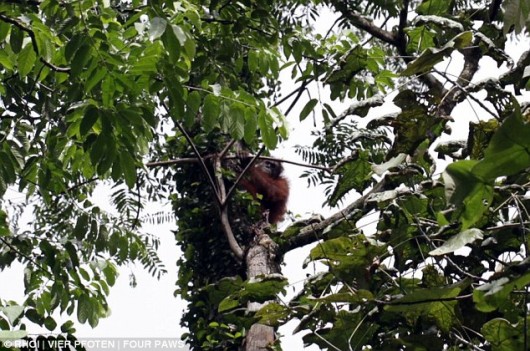 Mother and baby rescued and placed into the wild.
But with their rainforest wilderness rapidly being destroyed how long have these Orang-utans got? What happened to the father? Mother and baby rescued and placed into the wild.
But with their rainforest wilderness rapidly being destroyed how long have these Orang-utans got? What happened to the father?
.
Before the rescue, a Four Paws International team had scoured the area on the Indonesian side of Borneo, which is shared with Malaysia, but found no other Orangutans which had survived an earlier slaughter.
.
Deforestation has dramatically reduced their habitat and their numbers have dropped from 250,000 a few decades ago to only 50,000 in the wild. And while the loss of their habitat by logging companies has created a major threat to their existence, a more brutal form of reducing their numbers has emerged in recent years – direct slaughter.
.
Palm oil is used in hundreds of products from chocolate to oven chips, but the demand for buying it at a low price has resulted in significant deforestation as habitats are being destroyed to make way for plantations. Some palm oil companies see Orang-utans as pests, a threat to their lucrative business, and have placed a bounty on their heads.
Company executives are reported to be offering up to £70 to employees for each Orang-utan killed on the palm oil plantations. While such stories were at first denied, proof of the slaughter emerged last September when graves and bones were found by investigators.
‘Killing of Orang-utans is illegal in Indonesia but the law is lacking enforcement,’ said a Four Paws UK spokesman.
‘Before November last year only two low-level arrests had ever been made. But in the last two months 10 more arrests have taken place including the arrest of the senior manager of the plantation where the worst graves have been found.’
In an equally tragic scenario, babies left alive after adult Orang-utans have been slaughtered have been put up for sale in the Pet Trade by hunters.
When traumatised babies are found by Four Paws International and other animal rescue teams they are taken to a sanctuary and taught skills they will need in order to return to the wild.
.
.
Selected comments from readers:
.
‘Boycott any product with palm oil!!!’
~ maninthemiddle, 20120128.
.
“Let’s find the corporate entities who are paying for the palm oil,then boycott,very sad story,very touching”
~ olefan_is_a_moron, 20120128.
olefan_is_a_moron (20120128):.
“The real problem in the world is overpopulation. Natural resources replace themselves unless they are overburdened by excessive demand due to a big population. Cutting down 1% of a forest will not harm it since trees will just grow back but when you’re destroying too much at once you’re just striping the land bare.”
~ DocPaul (20120128)
.
“Soon man shall be the only “animal” left for hunting.”
~ 3 VULTURES (20120128).
.
“Orang-utans are critically endangered in the wild because of rapid deforestation and the expansion of palm oil plantations into their rainforest home. The situation described in this article is all too common unfortunately. If nothing is done to protect these amazing creatures, they will be extinct in just a few years. Visit the Orangutan Outreach website to learn more and make a difference! http://redapes.org Reach out and save the orangutans! Adopt an orangutan today! {:(|}”
~ OrangutanOutreach (20120128).
.
“How about a bounty of $150 per dead bounty hunter?”
~ Meowmeister, 20120128.
.
“This is what happens when you have: 1. People believing that the so-called phrase “and man shall have dominion over the beasts” means they can be killed at will and 2. When human beings believe nothing absolutely nothing is more important than profit.”
~ itsallinperception, 20120128.
.
“Farmers are being killed in south America for the same reason, land. Plantation owners want the land to get money for carbon credits…”
~ nlohu, 20120128.
.
“So sad. Palm oil is not just used in food. It is also used in cosmetics. I think it is called retinyl palmitate, something like that. Any ingredient that has “palmitate (ie: palm) is from palm oil. It is a form of vitamin A, used in skin creams alot.”
~ ana63, 20120128.
.
“These companies should not be allowed to trade in the UK. We shouldn’t be trading with any company that doesn’t respect life and the environment.”
~ Lo, cheshire, UK, 20120128.
.
“Everything that is wrong with the world is due to humans. We will continue to destroy our world unless something radical happens to reduce the human population and to change the greedy mindset of the human population. This makes me so incredibly sad!”
~ GB, UK, 20120128.
.
“…I think what would be more helpful is to have the names of the food manufacturers who are purchasing the palm oil from those companies. I suspect we would see major names such as Nabisco, Kraft, etc.”
~ InfoOverload, 20120128.
.
.
ANSWER: The largest palm oil company worldwide is ‘Wilmar International’
.
One of the most powerful opponents of our ‘Save our Borneo’ activists is Wilmar International, the largest palm oil company worldwide, based in Singapore.

“Wilmar International Limited, founded in 1991, is Asia’s leading agribusiness group.
“We are amongst the largest listed companies by market capitalisation on the Singapore Exchange. Our business activities include oil palm cultivation, oilseeds crushing, edible oils refining, sugar, specialty fats, oleochemicals and biodiesel manufacturing and grains processing. Headquartered in Singapore, Wilmar has over 300 manufacturing plants and an extensive distribution network covering China, India, Indonesia and some 50 other countries to support a well established processing and merchandising business. Wilmar also manufactures and distributes fertilisers and owns a fleet of vessels. The Group is backed by a multi-national workforce of approximately 90,000 people.”
“We are today:
- The largest global processor and merchandiser of palm and lauric oils
- One of the largest plantation companies in Indonesia/Malaysia
- The largest palm biodiesel manufacturer in the world
- A leading consumer pack edible oils producer, oilseeds crusher, edible oils refiner, specialty fats and oleochemicals manufacturer in China
- One of the largest edible oils refiners and a leading producer of consumer pack edible oils in India
- The largest edible oils refiner in Ukraine
- The leading importer of edible oils into East Africa and one of the largest importers of edible oils into South-east Africa.
‘We will continue to leverage on the scale and strengths of our business model to benefit from the long term growth potential of the agricultural commodity business, especially in Asia.”
Visit website: ^http://www.wilmar-international.com/
.
.
Cyclone Yasi 2011 destruction sees Wilmar take over Australia’s CSR’s Sucrogen
.

[Source: ‘ Proserpine creditors approve sale of mill to Sucrogen‘, 20111209, ^ http://www.sucrogen.com/media/news]
.
‘Sucrogen, the Australian-based sugar subsidiary of Singapore-listed Wilmar International Limited, looks forward to an exciting future as the new owner of Proserpine Sugar Mill after a majority of Proserpine creditors, by number and value, voted today to approve Sucrogen’s purchase of the mill.
Sucrogen CEO Ian Glasson said the creditors’ vote was a great outcome and paved the way for the sale transaction to be completed immediately.
“The positive result means creditors will be paid, in full, before Christmas,” Mr Glasson said. “We are grateful to have received such strong support from creditors, who have clearly shown faith in us and our plans for the Proserpine region.”
Sucrogen’s offer comprised a headline price of A$120 million, plus a working capital adjustment, normal settlement adjustments, as well as absorption of the mill’s normal operating costs and certain critical capital expenditure incurred from 31 October 2011.
Mr Glasson said while Sucrogen was pleased to finally purchase the mill, it was disappointing the sale was not possible before the Co-operative was placed into voluntary administration.
“The negative campaign Tully ran to derail the first two member votes has, ultimately, cost members a substantial amount of money in administration and legal fees,” he said. Critically, it has also delayed capital and maintenance at the mill.”
However, the transition to Sucrogen management and leadership will begin immediately and we will hit the ground running next week and do our best to ensure the mill is ready for the start of 2012 season, despite the lengthy delays.”
Mr Glasson said Wilmar had expressed a strong interest in working with growers to help expand Proserpine’s sugar industry.
“We look forward to a long and productive relationship with local growers, Proserpine Sugar Mill employees and the whole Proserpine community.”
.
So the company that is behind the palm plantation clearing destroying Orang-utan habitat and encouraging Oran-gutans to be slaughtered, is the parent company that sells CSR Sugar across Australia and Chelsea Sugar across New Zealand and the artificial sweetener ‘Equal‘.

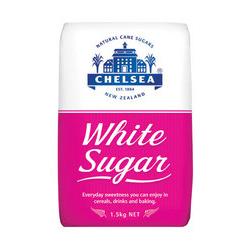
.
.
The palm oil industry says: ‘Orang-utans are pests!’
[Source: ^http://www.rainforest-rescue.org/newsletter/1267/282c3e5ec03e375e7afa82c63564ae41]
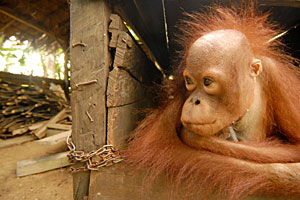 This juvenile Orang-utang’s mother was killed on one of the palm oil plantations This juvenile Orang-utang’s mother was killed on one of the palm oil plantations
.
“Dear friends of the rainforest, the BBC reports that Orang-utans are treated as “pest” and exterminated on Indonesian and Malaysian palm oil plantations. In the last year alone, up to 1,800 Orang-utans were killed in Kalimantan (Indonesian Borneo). They wander hungry through the plantations as though in a daze, looking for food and thus eat the palm seedlings. Palm oil plantation workers are paid to kill Orang-utans either before a forest is cleared or, if they see any in a plantation. Either way, it is totally illegal to harass, harm or kill any Orang-utans.”
[Source: ”Borneo: Environmentalists need help for preserving the rainforest’, ^https://www.rainforest-rescue.org/donate/90/borneo-environmentalists-need-help-for-preserving-the-rainforest]
.
“The current trend of converting rainforest into palm oil plantations is devastating our country. Our people cannot provide for themselves any longer; and endangered species such as the Orang-utans are doomed to die. It is high time for us to join forces and jointly put a stop to the palm oil industry’s illegal activities on all levels.“
Nordin, head and founder of our partner organisation ‘Save our Borneo’ (SOB) has lately experienced a great deal of suffering caused by the destruction of tropical rainforest in his home province Central Kalimantan in Borneo – including his own family. His little son Mirza was born when wildfires were raging for several months, obscuring the sky over Central Kalimantan and making breathing truly agonizing. Due to his chronic breathing difficulties, Mirza had to be hospitalised often. Even though slash and burn clearing methods are prohibited in Indonesia, fires are started again and again in order to gain more space for palm oil plantations.
One of the most powerful opponents of our ‘Save our Borneo’ activists is Wilmar International, the largest palm oil company worldwide.
.
(Wilmar International) act as if no rules apply to them. This company has the rainforest illegally logged and new plantations set up; they drive peasants off their land and arrest them if they defend themselves. Wilmar keeps founding new subsidiaries, and bribes officials to side-step the law.
.
Therefore, Save Our Borneo’s boss Nordin sent ‘Rainforest Rescue’ a strategic plan in order to unite our efforts and take action against Wilmar: We are also supported by regional environmentalists of ‘Walhi’, the Indonesian branch of ‘Friends of the Earth’.
.
“We want to sue the Wilmar Group at their headquarters in Singapore for their crimes committed against humans and nature,“ says Nordin. “However, first we will have to gather enough detailed facts and evidence for an absolutely watertight lawsuit.”
.
Their strategic plan is set to run for 18 months and works on all levels, including:
- Workshops with affected peasant families to discuss land rights and, possibly, draw up maps. Another goal is to inform the population about Wilmar’s modus operandi and how to defend themselves.
- Training in Forest Management and Land Rights
- Research and data gathering regarding activities of Wilmar subsidiaries.
- Workshops on corruption
- Public relations activities disclosing Wilmar’s law violations as well as any political involvement (multimedia campaign on TV, radio or the internet such as facebook, brochures etc.)
- Public dialogues between all the parties involved, having politicians, scientists, journalists, environmentalists and victims of the palm oil industry all sit together at one table.
.
Nordin calls his major offensive against Wilmar International an “Action Plan for a Better Life“.
Visit Rainforest Rescue website: ^http://www.rainforest-rescue.org/
.
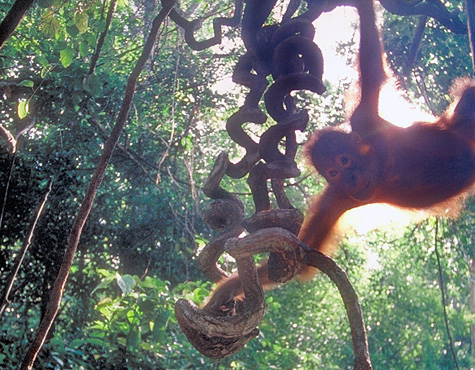
.
Tags: Borneo, Borneo Orang-utan Survival, Chelsea sugar, CSR sugar, Four Paws International, Indonesian farmers, Indonesian palm oil plantations, Kalimantan, Malaysian palm oil plantations, orang-utan, orang-utan bounty hunters, palm oil plantations, PT Restorasi Habitat Orangutan Indonesia, Sucrogen, wildlife photographers, Wilmer International
Posted in Kalimantan (ID), Orang-utans, Threats from Farming, Threats from Poaching and Poisoning | No Comments »
Add this post to Del.icio.us - Digg
|
|
 Ecological consultant David Paul with a koala found in the Leard State Forest
[Source: Photo by Tania Marshall, Front Line Action on Coal,
^http://frontlineaction.wordpress.com/]
Ecological consultant David Paul with a koala found in the Leard State Forest
[Source: Photo by Tania Marshall, Front Line Action on Coal,
^http://frontlineaction.wordpress.com/]
 Maules Creek Mine location map
[Source: Google Maps]
Maules Creek Mine location map
[Source: Google Maps]
 The Leard State Forest
An isolated remnant box woodland
The Leard State Forest
An isolated remnant box woodland
 Box Woodland decimated for industrial scale cotton
The farming model is entirely artificially dependent river-diverted irrigation for export produce.
[Source: Promotional tourism advertisement by the NSW Government,
^http://www.visitnsw.com/destinations/country-nsw/moree-and-narrabri-area/gallery]
Box Woodland decimated for industrial scale cotton
The farming model is entirely artificially dependent river-diverted irrigation for export produce.
[Source: Promotional tourism advertisement by the NSW Government,
^http://www.visitnsw.com/destinations/country-nsw/moree-and-narrabri-area/gallery]
 Leard State Forest location map
[Source: Google Maps]
Leard State Forest location map
[Source: Google Maps]
 Koala in Leard State Forest
[Source: Photo by Tania Marshall, Front Line Action on Coal,
^http://frontlineaction.wordpress.com/]
Koala in Leard State Forest
[Source: Photo by Tania Marshall, Front Line Action on Coal,
^http://frontlineaction.wordpress.com/]
 Nearby Boggabri Open Cut Coal Mine, owned by Whitehaven Coal
Saw thousands of hectares of native Box Woodland bulldozed in 2006.
Nearby Boggabri Open Cut Coal Mine, owned by Whitehaven Coal
Saw thousands of hectares of native Box Woodland bulldozed in 2006.
 (Click icon and play audio on the ABC Radio website, turn up volume to listen)
[Source: ‘Concern for Koala’s in the Leard State Forest’, 20121112, radio interview by Kelly Fuller, Morning Show, ABC Radio New England NSW,
^http://www.abc.net.au/local/audio/2012/11/12/3630754.htm]
(Click icon and play audio on the ABC Radio website, turn up volume to listen)
[Source: ‘Concern for Koala’s in the Leard State Forest’, 20121112, radio interview by Kelly Fuller, Morning Show, ABC Radio New England NSW,
^http://www.abc.net.au/local/audio/2012/11/12/3630754.htm]
 Community protest meeting against local coal mining
[Source: ‘Sea of hands support gasfield free region at Tamworth public meeting’, 20130226,
^http://maulescreek.org/news/page/3/]
Community protest meeting against local coal mining
[Source: ‘Sea of hands support gasfield free region at Tamworth public meeting’, 20130226,
^http://maulescreek.org/news/page/3/]

















































































































